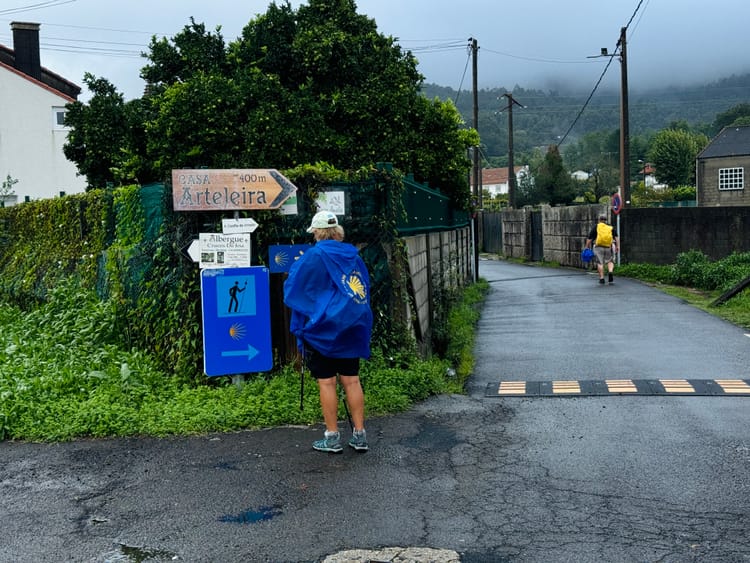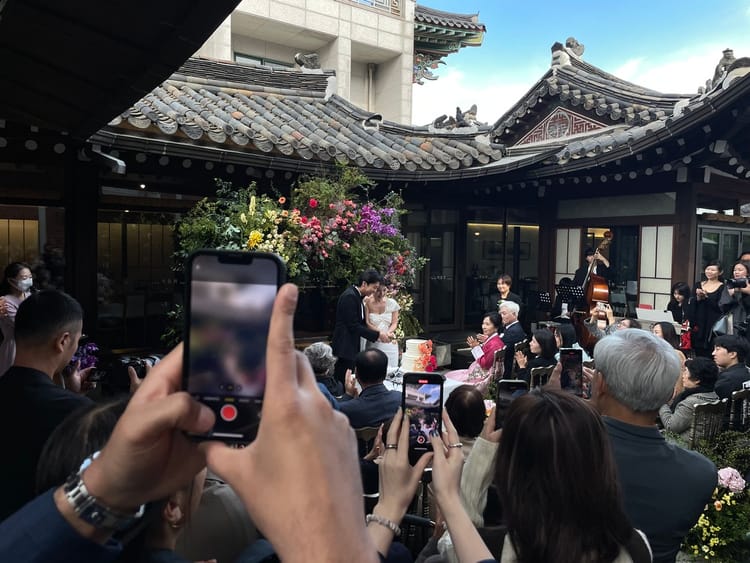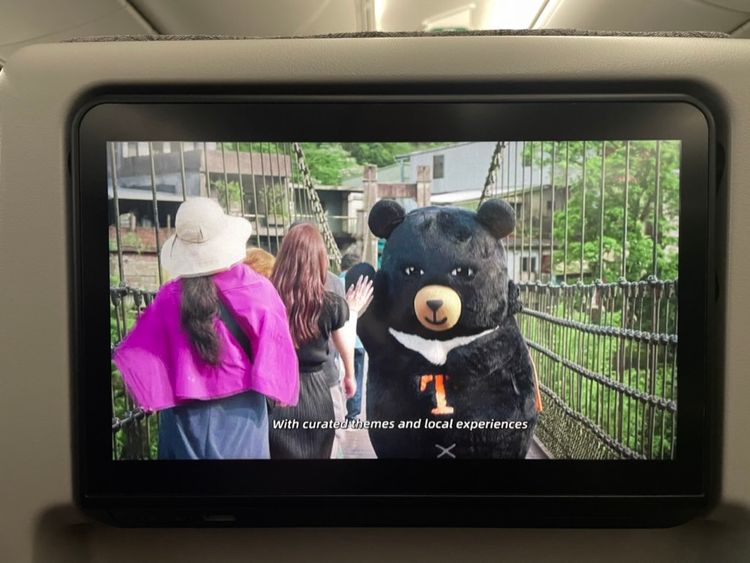Mildly/Wildly Interesting Things About Japan 🇯🇵
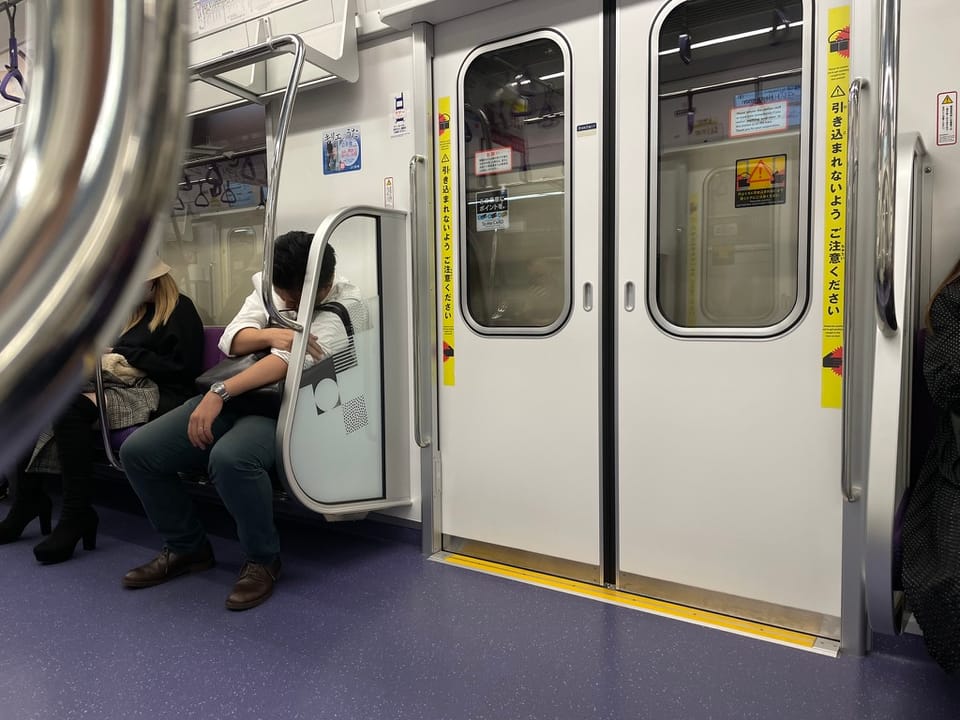
This piece is part of a travel series about East Asia.
- Mildly/Wildly Interesting Things About Taiwan 🇹🇼
- Mildly/Wildly Interesting Things About South Korea 🇰🇷
- Mildly/Wildly Interesting Things About Japan 🇯🇵 - this piece
Since, it's my first time in that part of the world, I wanted to document my fresh look at things. What's weird? What's interesting? What's notable?
These are mildly/wildly interesting things about Japan 🇯🇵
An Awe-some Welcome in Japan 🚅
Our trip to Japan started with a bang 🤯
After collecting our Japan Rail passes at Narita airport, we wanted to take the express train to Tokyo Central Station.
The first thing I noticed was that the platform had its own superintendent - a dedicated person making sure that everything ran smoothly.
Helping tourists to get the correct tickets. Check!
Making sure that everyone was lining up correctly before entering the train. Check!
Looking at his watch to confirm that the train arrives on time. Triple check!
...
What happened next was straight out of a sci-fi movie.
At 17:46 sharp, the superintended spun on his heels and turned 45 degrees to the left. He then bowed just in time for a massive train to enter the station.
He was bowing for the train. He was respecting the machine. He was paying tribute to one of the miracles of modern technology.
😮
It was awe-some in the truest meaning of the word. I was in awe.
...
At that moment, I didn't fully appreciate how special this was. But the longer I traveled through Japan, the more I understood that this exact moment was Japan in its essence.
In this essay, I'll try to put this whole experience into words 🎌
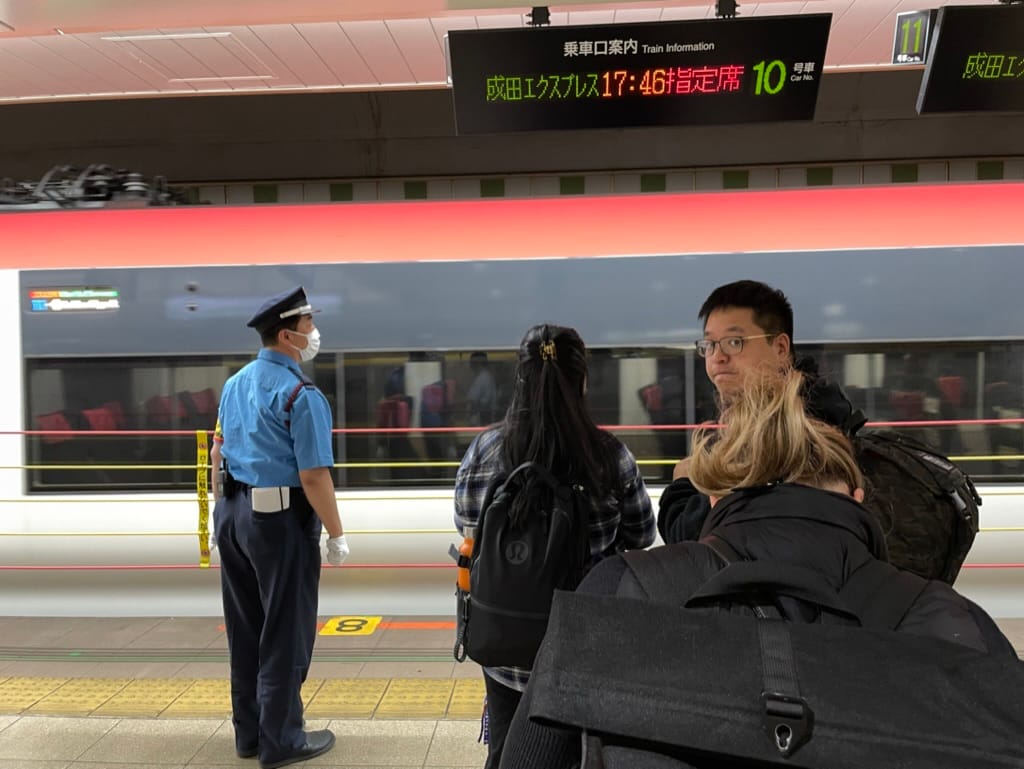
Related: Shinto x Future
A few days after our touchdown in Japan, I saw a tweet that showed a Shinto priest blessing a modern F-35 fighter jet.
...wait a minute... I thought.
There might be a pattern 🤔
:max_bytes(150000):strip_icc()/ghost-in-the-shell-2000-3f7485084f924e71be76a7cad03eab41.jpg)
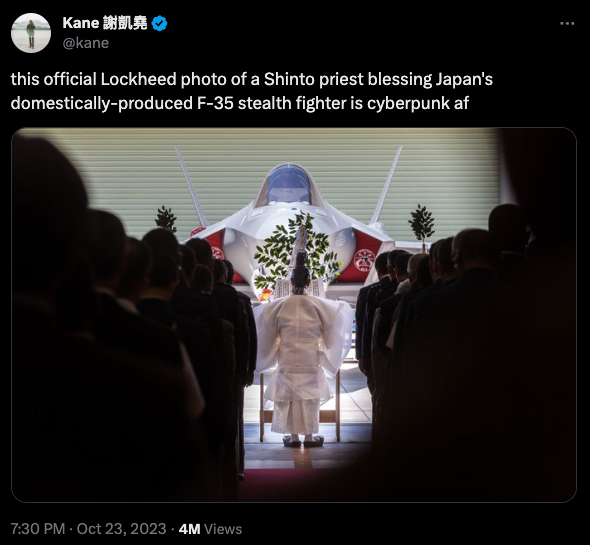

[Anime] Ghost in the Shell (left) | [real-life] Shinto priest blessing a F-35 (center) | [Anime] Neon Genesis: Evangelion (right)
My wild guess is that some of this behavior originates from the Shinto religion and is deeply rooted in Japanese culture.
Shintoism ⛩️
So what is Shinto and/or Shintoism?
My understanding is:
- Shinto is the indigenous religion of Japan
- Shinto is significantly older than Buddhism - dating back to ~300 BCE
- Shinto has no central authority (like the Vatican), no specific doctrine (like the bible).
- Shinto is a polytheistic and animistic religion → animism believes that objects, places, and creatures possess a spiritual essence (this is important because 👇)
- Shinto revolves around supernatural entities called kami (神) - deities, spirits, mythological/spiritual/natural phenomena
- Shinto can be whatever you want it to be
TL;DR: As a Shinto practitioner you believe in kami.
Kami can be inside of anything: a statue, a train, or even a F-35 fighter jet.
🤯
Shinto Architecture
Your emoji keyboard features one of the core architectural elements of Shinto architecture: the Torii gate ⛩️
These gates are usually at the entrance of a shrine and symbolize the transition from mundane to sacred.
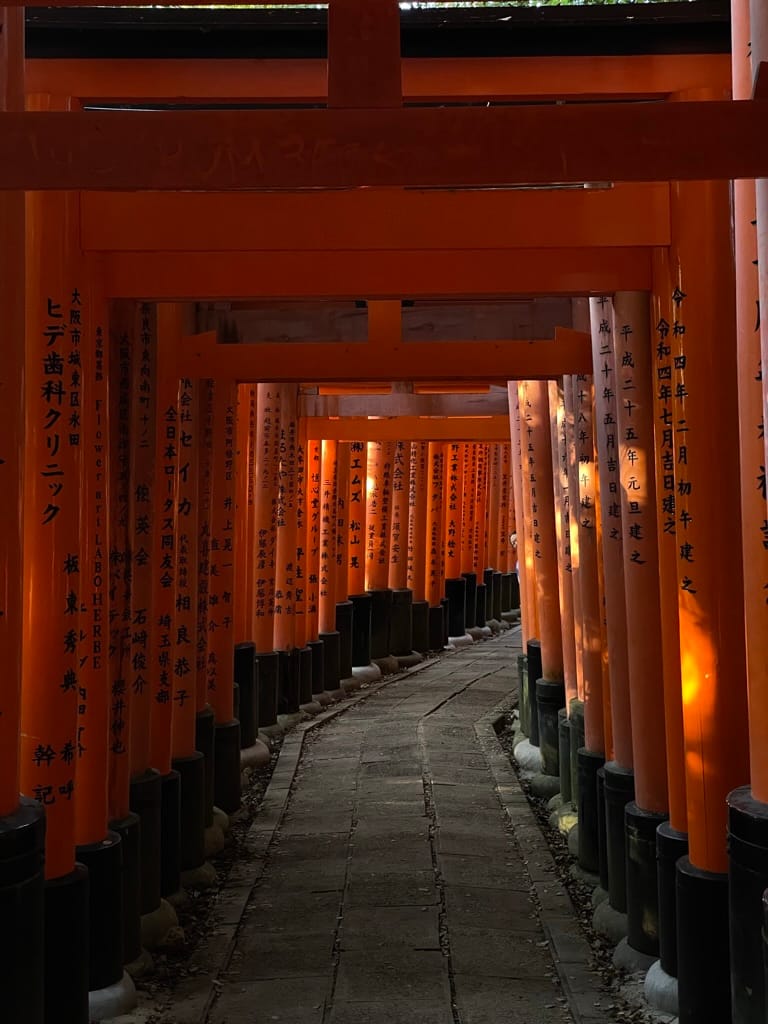
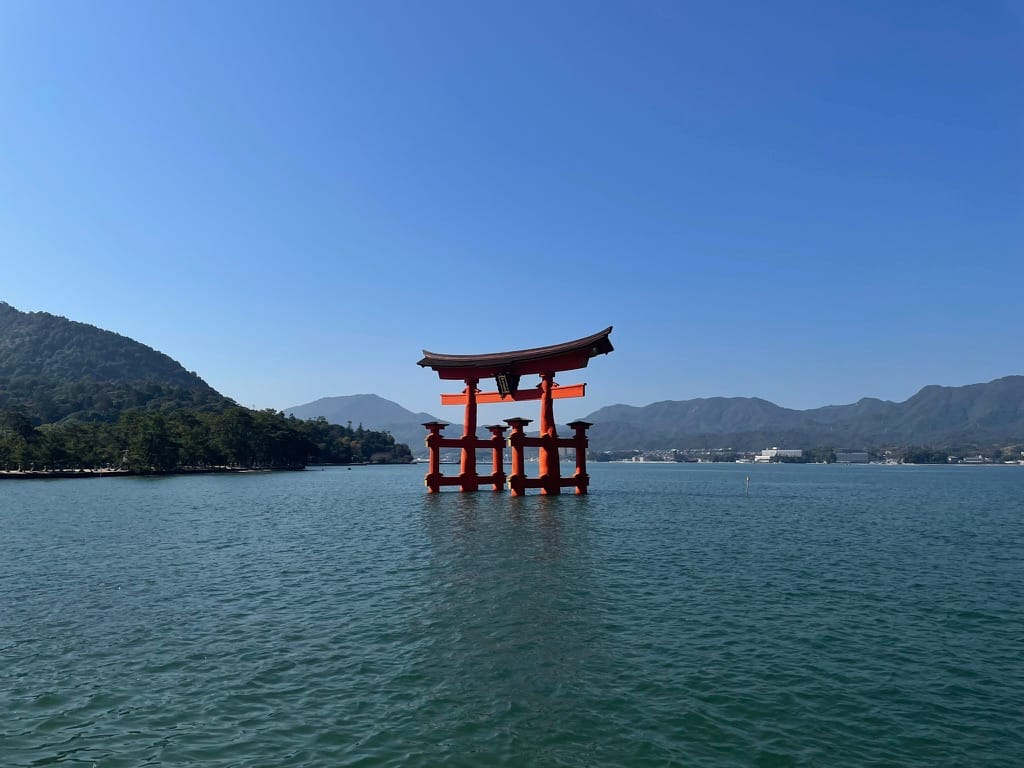
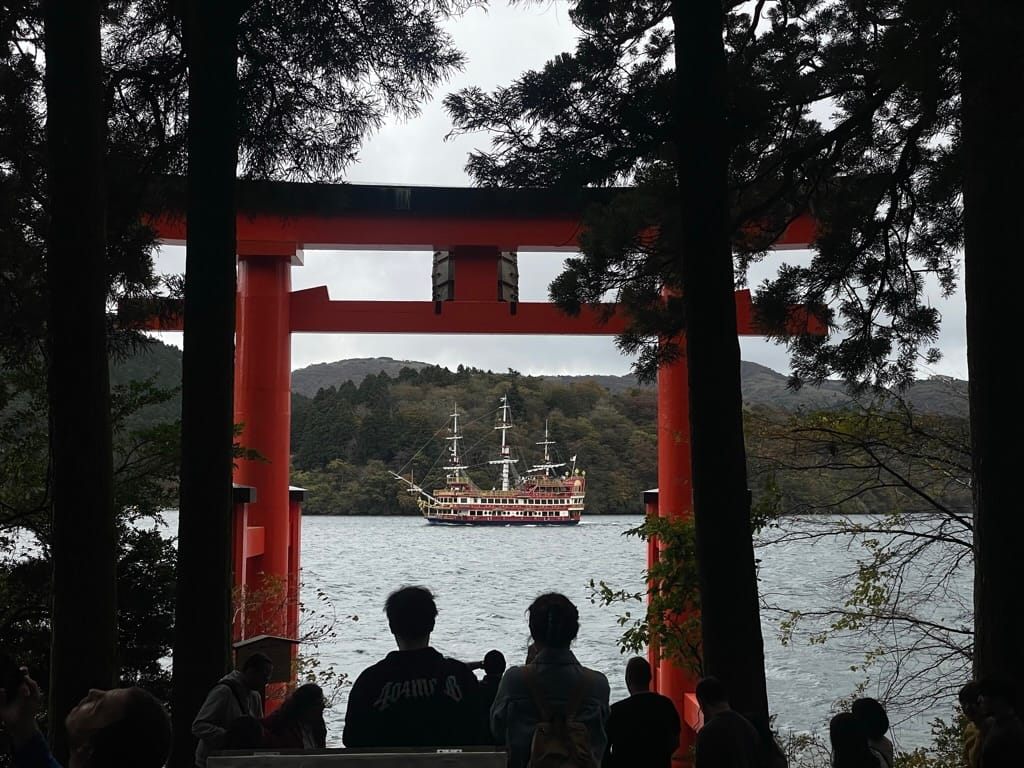
Torii gates at Fushimi Inari Shrine - 🦊 the fox temple (left) | Itsukushima Shrine in Miyajima (center) | Torii of Hakone Shrine at Lake Ashi (right)
So, next time you see this funny emoji ⛩️, remember two things: (1) Kami = spirits and (2) Torii = transition from mundane to sacred.
Miyazaki: Kami-centric Storytelling?
Another random thought: Is Hayao Miyazaki maybe the greatest kami storyteller of all time?
If you look at his movies (e.g. Spirited Away; My Neighbor Totoro; Princess Mononoke; etc.) seem to have spirit/kami-centric plots 👻

Now, since we are already on a religious theme, let's chase it with another cheesy headline 👇
If you want to listen to a song while you read, check this banger:
Welcome to Train Heaven 🙏
Trains in Japan are something else.
TrainCore
Let's start with some slick visuals 🚄
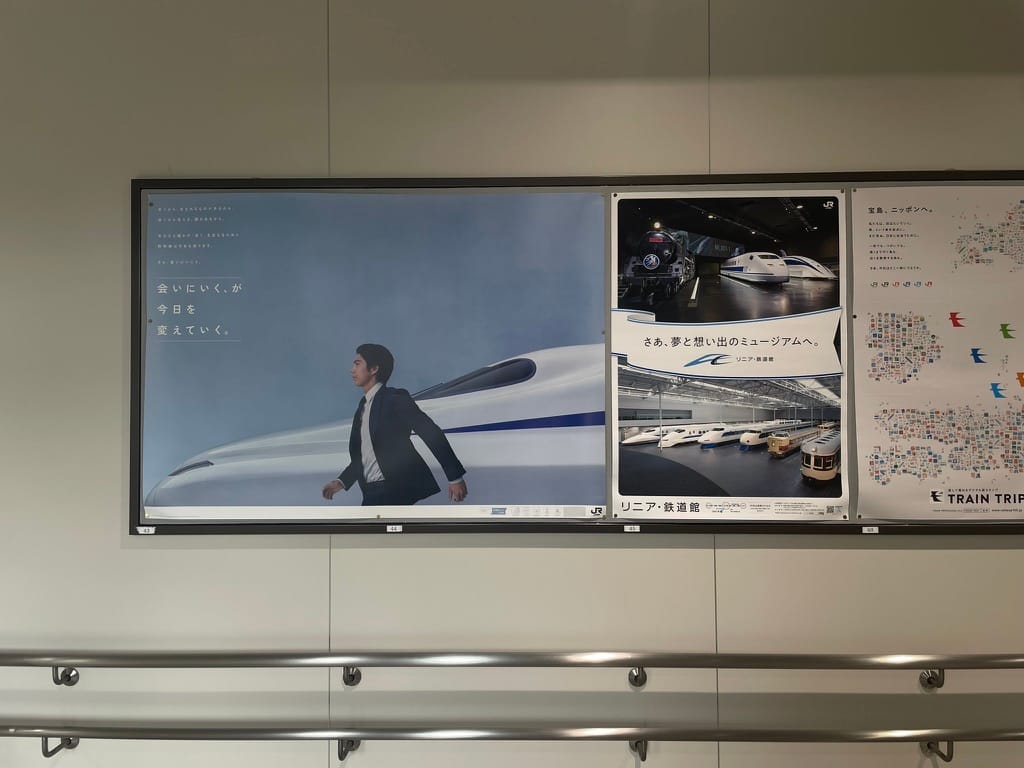
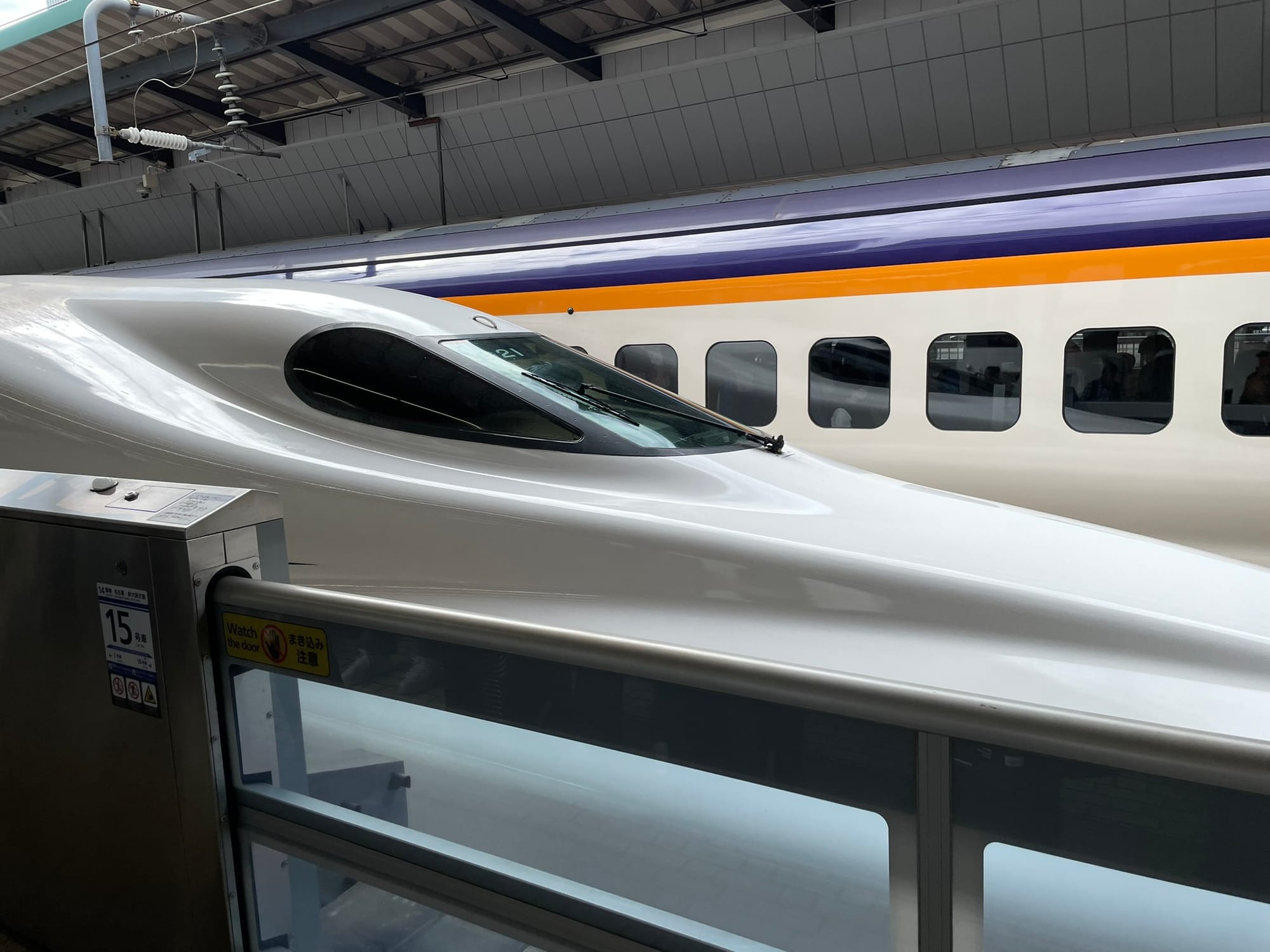
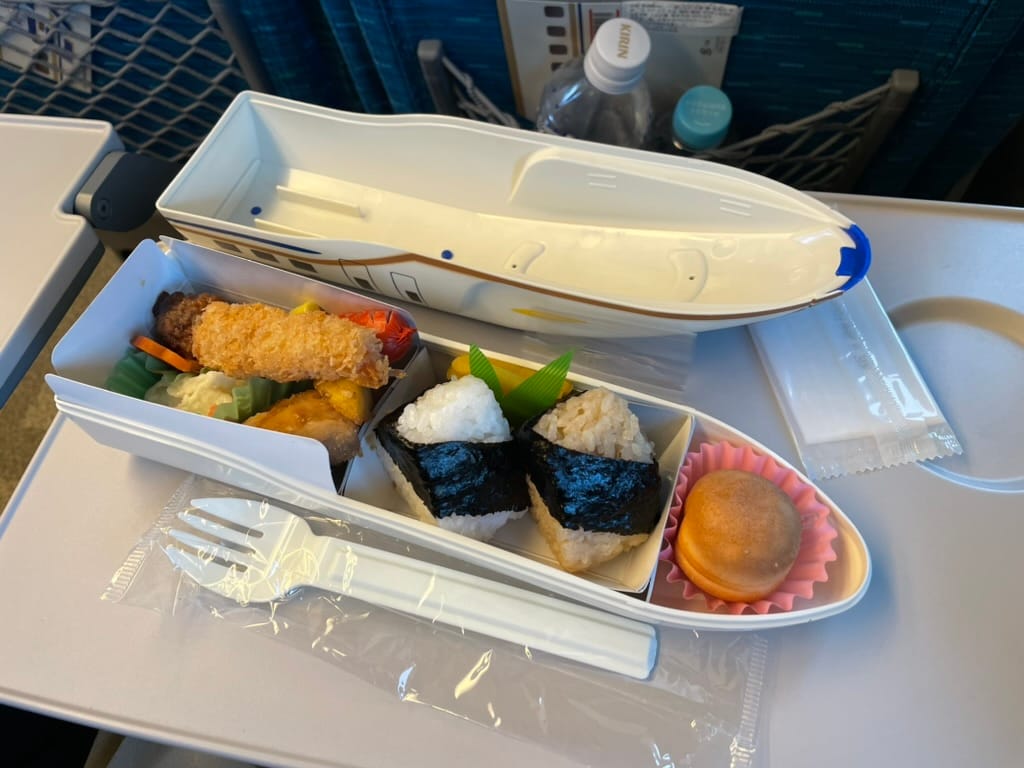
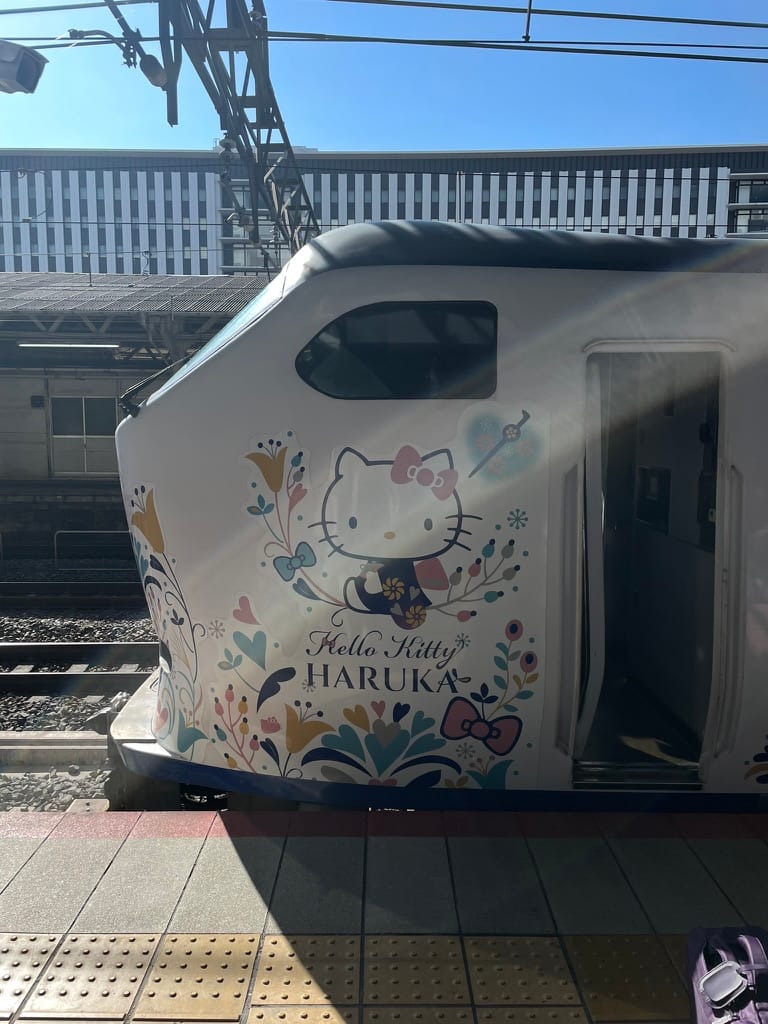
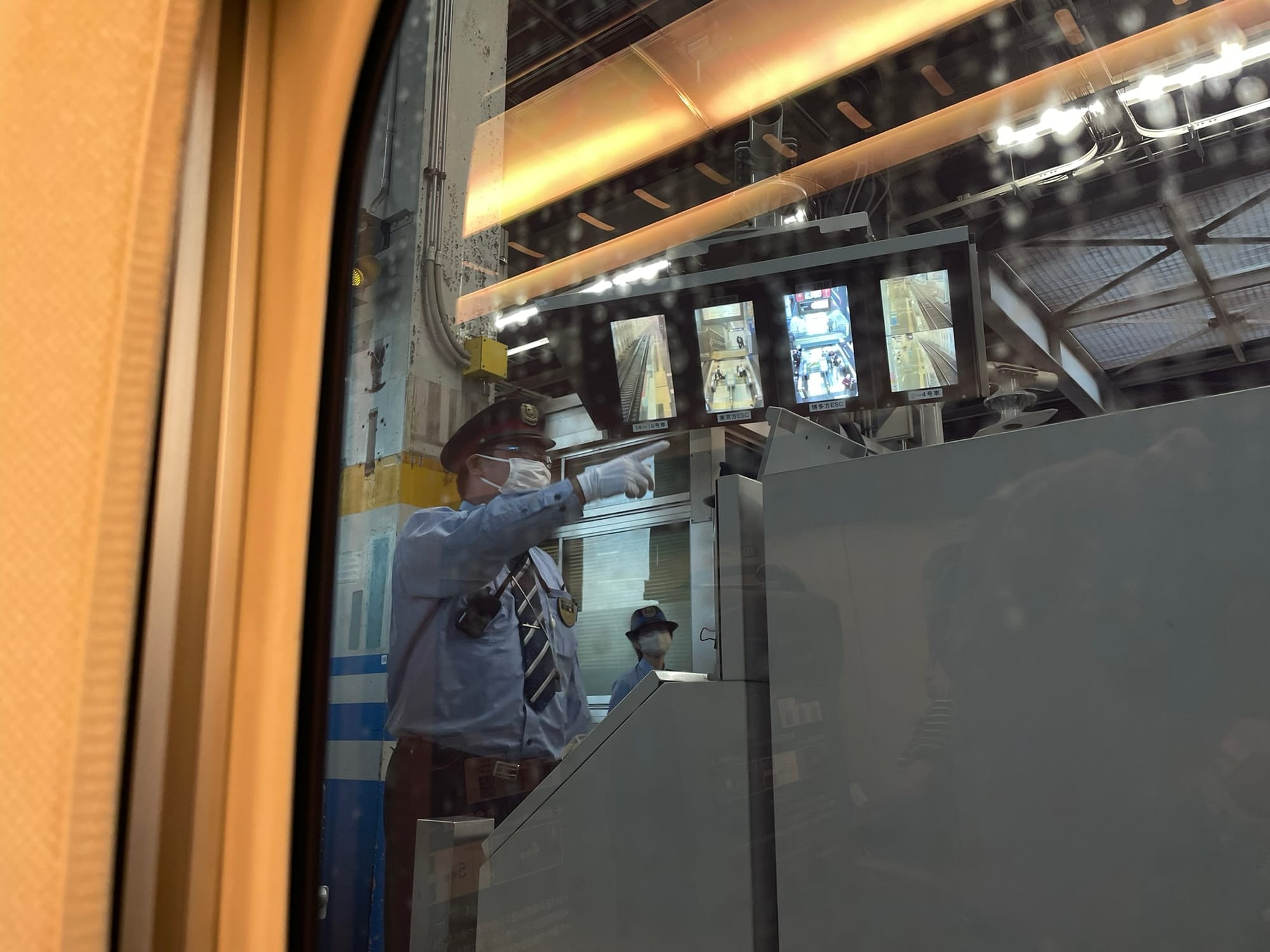
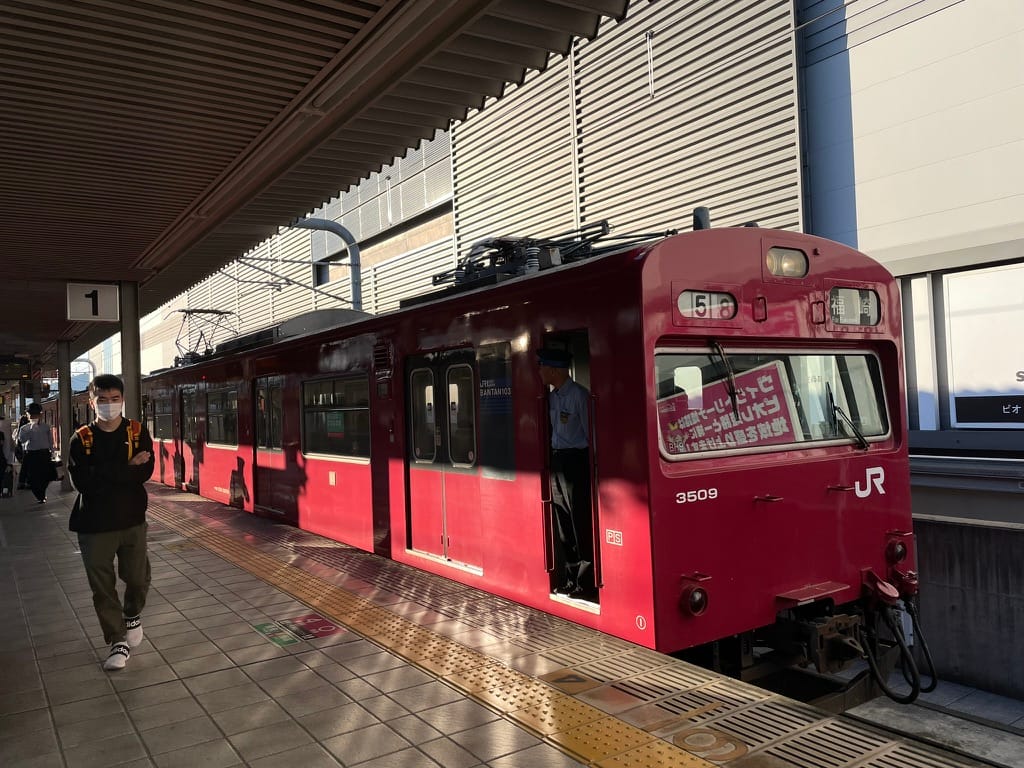
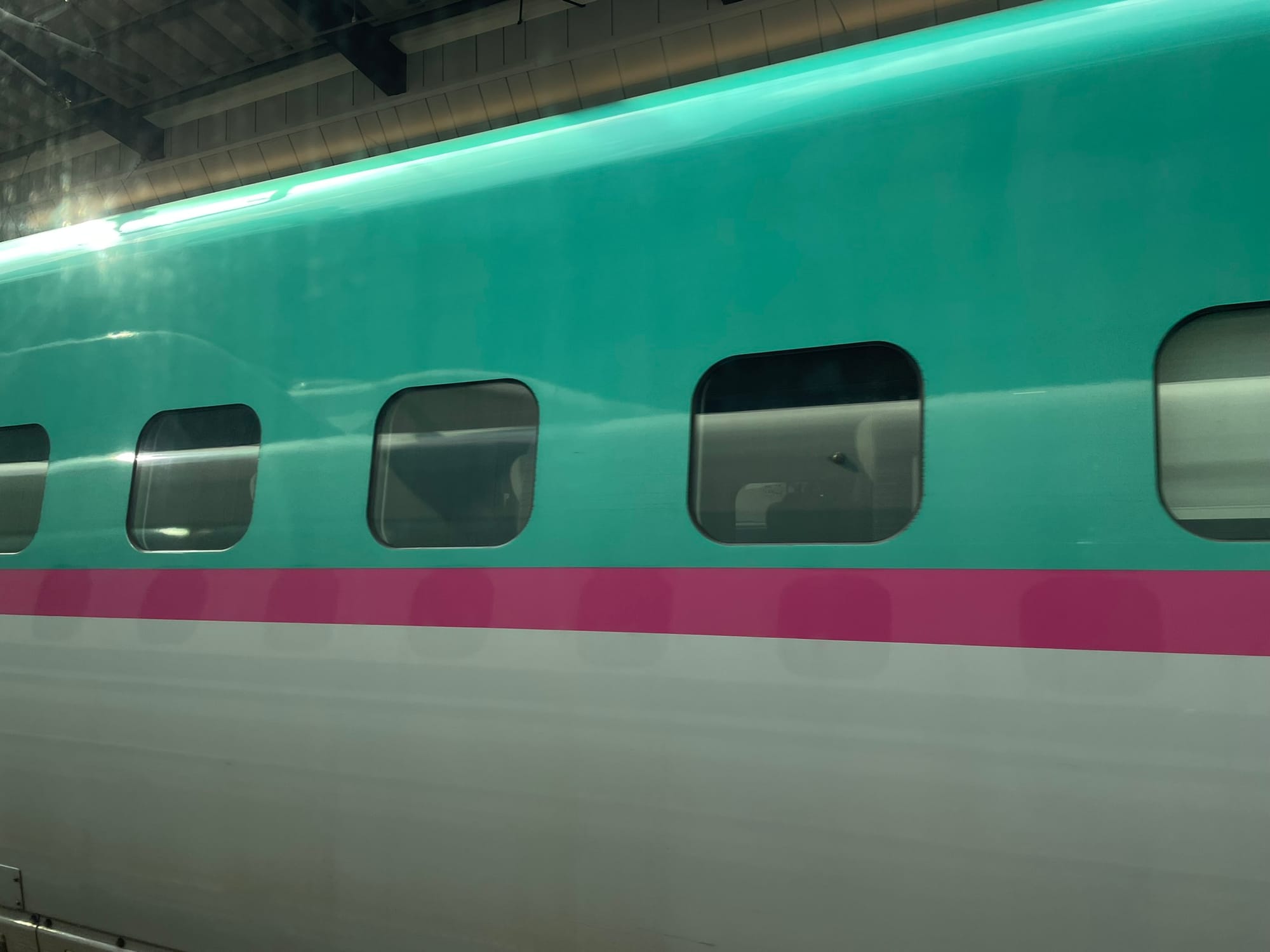
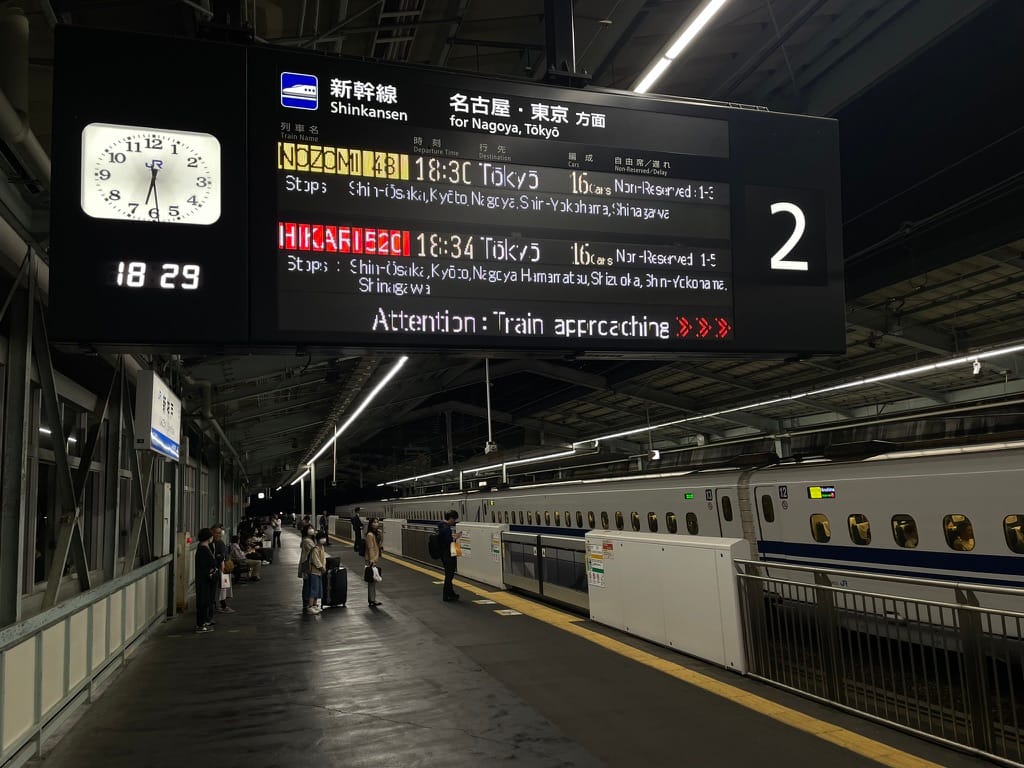
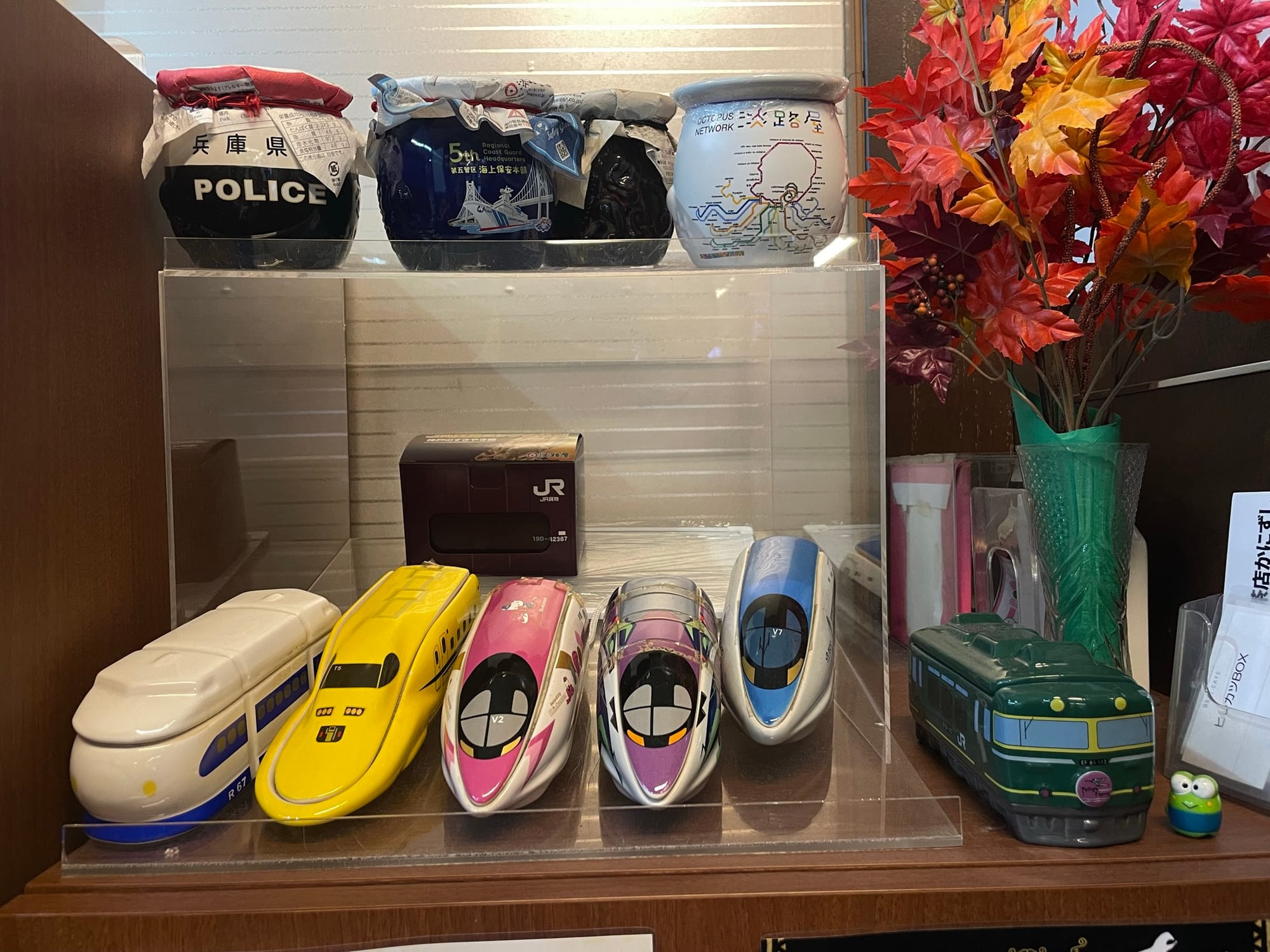
1. Posters | 2. Bullet train arriving | 3. Shinkansen-shaped bento box | 4. Hello Kitty-themed mega train | 5. Platform superintendent at work | 6. Throwback train for regional connections | 7. Miami Dolphins-colored Shinkansen passing by | 8. Look at the arrival times!!! | 9. Shinkansen mini trains made of ceramics
Train travel is a big deal in Japan.
- In Japan, 85% of all miles are traveled by train. // For comparison, in the U.S. only 1% of all miles are traveled by train and in Germany it's 8%. // Disclaimer: I cannot find the source for this but I feel like I read this on one of the train rides. Will add the source once I find it.
- Japan Railways (JR) used to be a state-owned enterprise with all the baggage that came with it: (a) high debt, (b) low service quality, and (c) no incentive to improve. In 1987, JR was privatized and restructured. It is considered a success story.
- JR is split into 6 passenger transport companies and 3 other businesses (Freight; Research; IT Services).
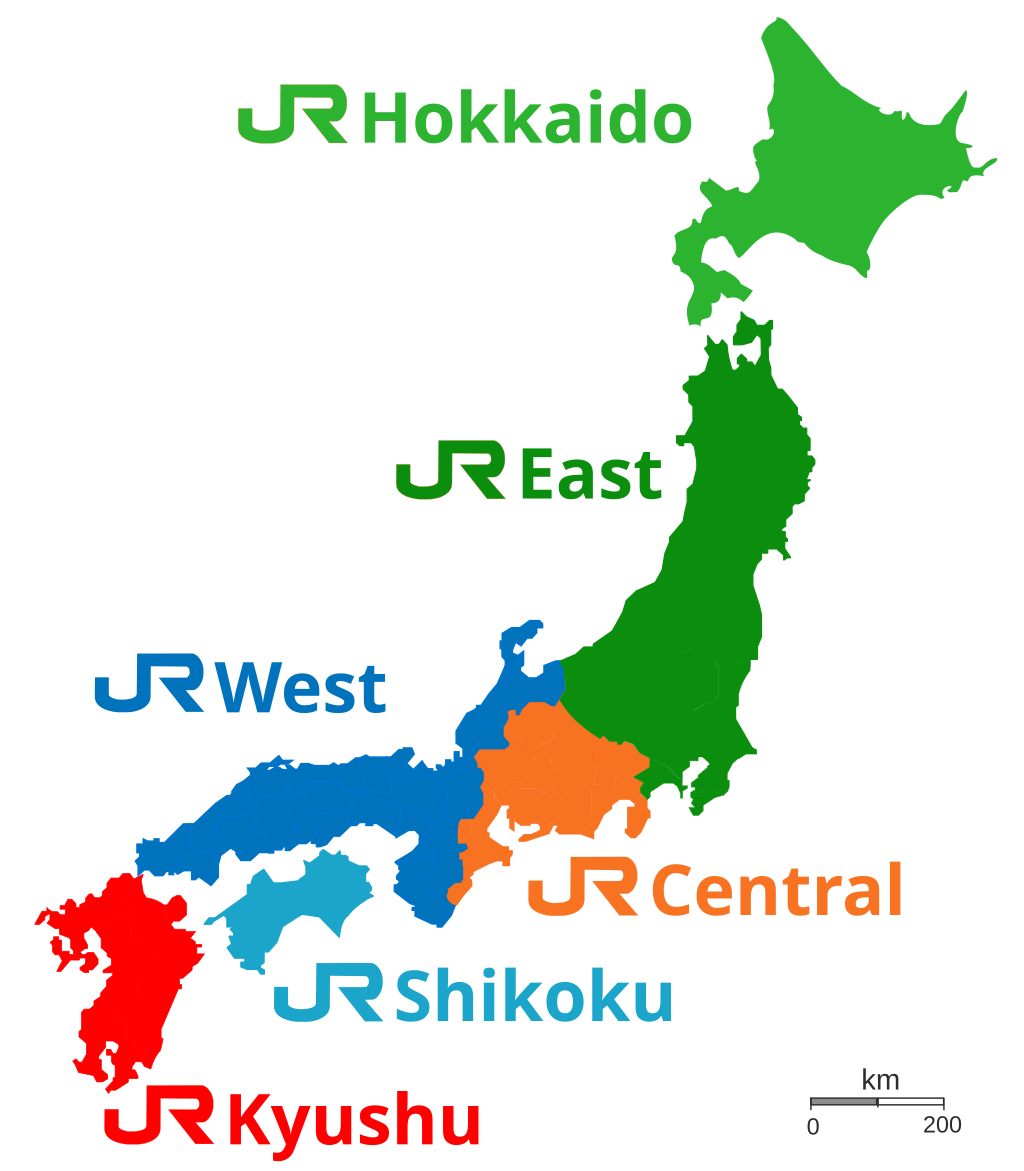
- People love their trains. There's a railway museum and as you might have seen in the TrainCore gallery, there are tons of train-themed toys and accessories.
Shinkansen Confidential
Now, let's talk about the famous bullet trains - the Shinkansen 🚅
First, let's appreciate how incredibly punctual they are:
Less than a minute of delays per year. Think about that the next time when you're waiting for your DB, OEBB, or SBB train in sub-zero temperatures.
The Shinkansen line various trains that can be distinguished by train type and the amount of stops they take.
A couple of observations from me:
- It just works.
- Each train wagon is cleaned by a dedicated cleaning person before the train departs. This entire procedure takes less than 5 minutes (max).
- The cleaning person is also responsible for flipping the chairs. → Each row of chairs has a lever at the bottom with which you can swirl the row by 180 degrees. That way, you can make sure that the passengers always face in the direction of travel. This procedure takes less than 2 minutes per wagon.
- Conductors of the trains are frequently in the middle of the train. Don't ask me why but they are.
- The most incredible thing is that two fully-sized and fully-booked Shinkansen trains can arrive, exit passengers, accept passengers, depart four minutes apart from each other. On the same platform. Think about that for a second. Truly mind blowing 🤯 I'm lucky if I can tie my shoe laces in this time.
- JR passes - the popular train ticket for tourists - is also valid for the JR metro lines (more about that in a minute).
- Mount Fuji is visible from the Shinkansen train on the route between Tokyo and Kyoto.
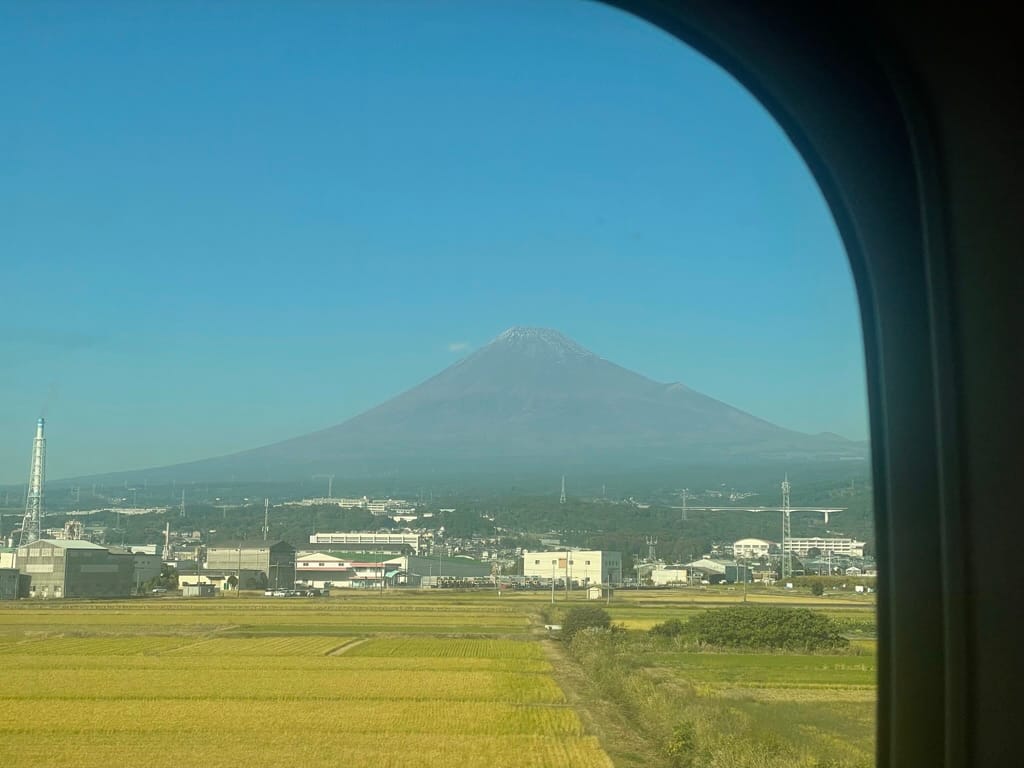
Metros & Other
Like any major city, Tokyo has multiple metro lines.
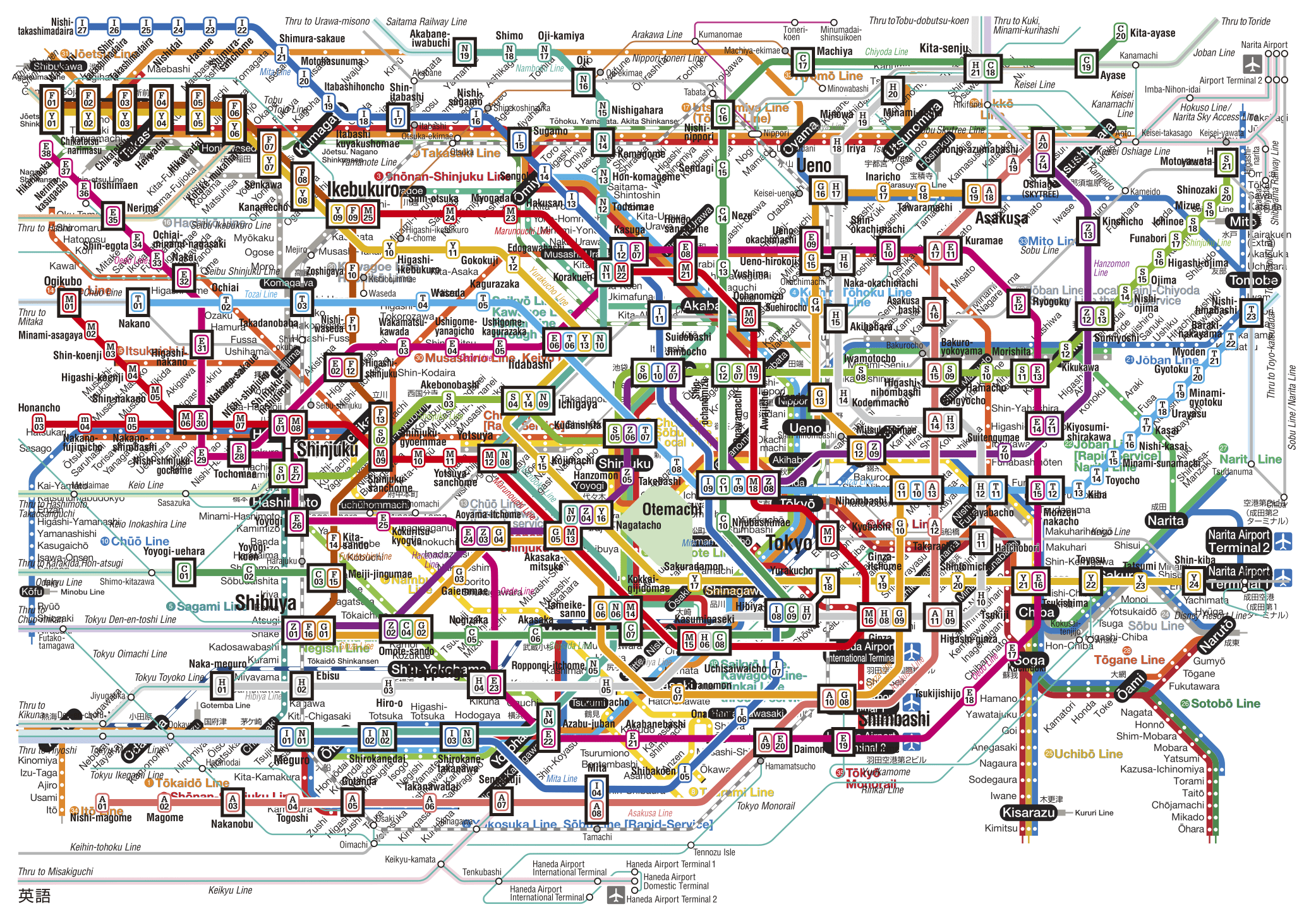
BUT those lines are not operated by the same company.
What does this mean in practice?
- You need different tickets for different metro lines
- You need to get out of the JR metro section to get into the other metro section - all on the same station. Ticket swapping included.
Other than that, transportation by metro works like a charm.
A few more observations:
- You can get a digital metro pass → just upload it to your Apple Wallet or Google Wallet and tap your phone to pay the fare.
- The biggest card operators are Suica (the one I chose - with the penguin mascot 🐧), ICOCA (with the palatypus mascot 🐤), and Pasmo (without any mascot ☹️).
- Physical Suica and ICOCA cards are sold out across the country.
- Some lines offer women-only cars during rush ours due to prevalence of groping and whatever it's called when perverts try to take pictures under skirts. Interesting way of "solving" the problem although it's sad that it requires such measures.
- As a result, phones are required by law to make a sound when they take a picture. Imagine buying an iPhone in Japan and not being able to turn off the shutter sound 📸
Most importantly, people pass out in metros.
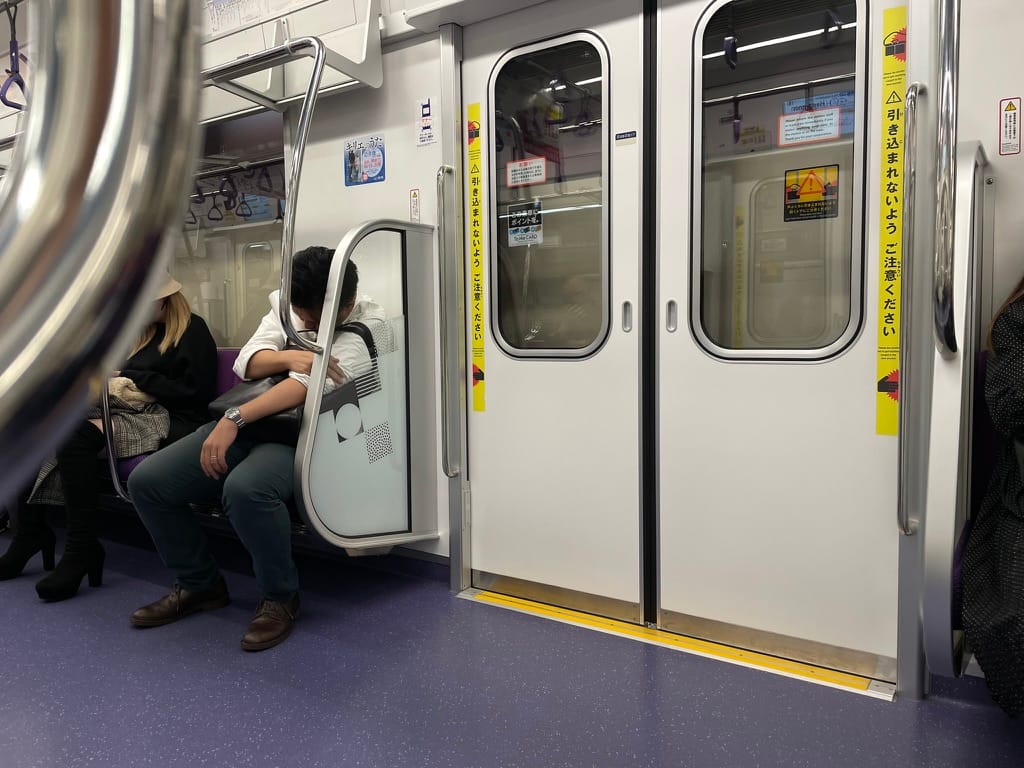
MetroCore
Here a little glimpse of how stylish Japanese metros can be.
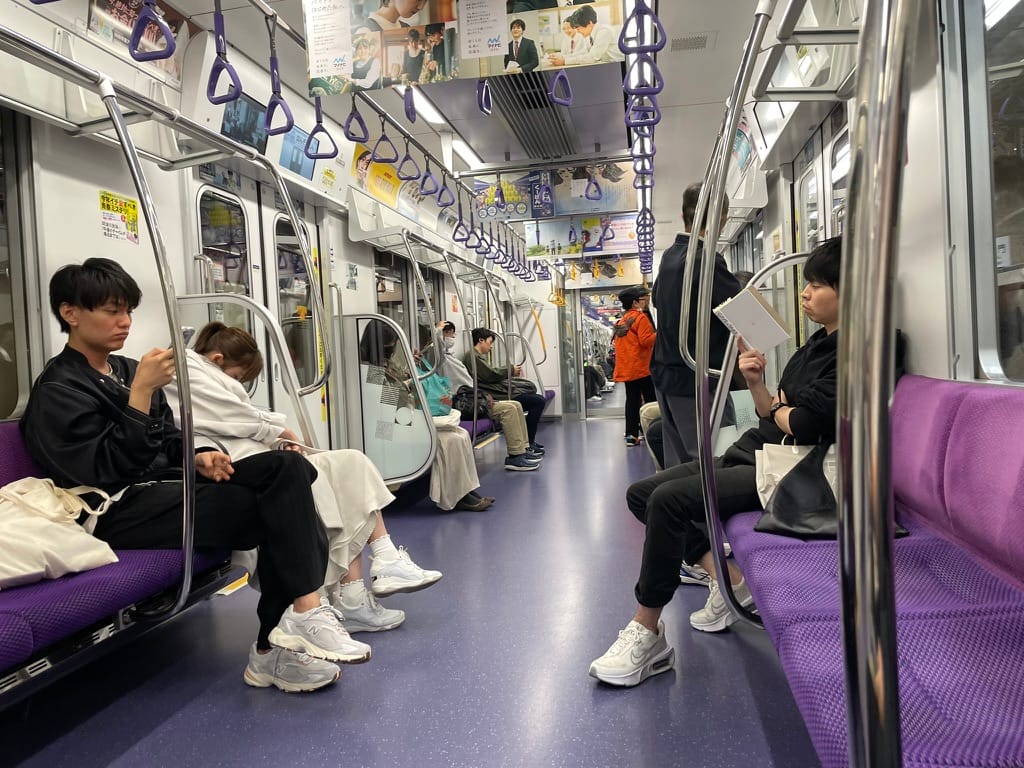
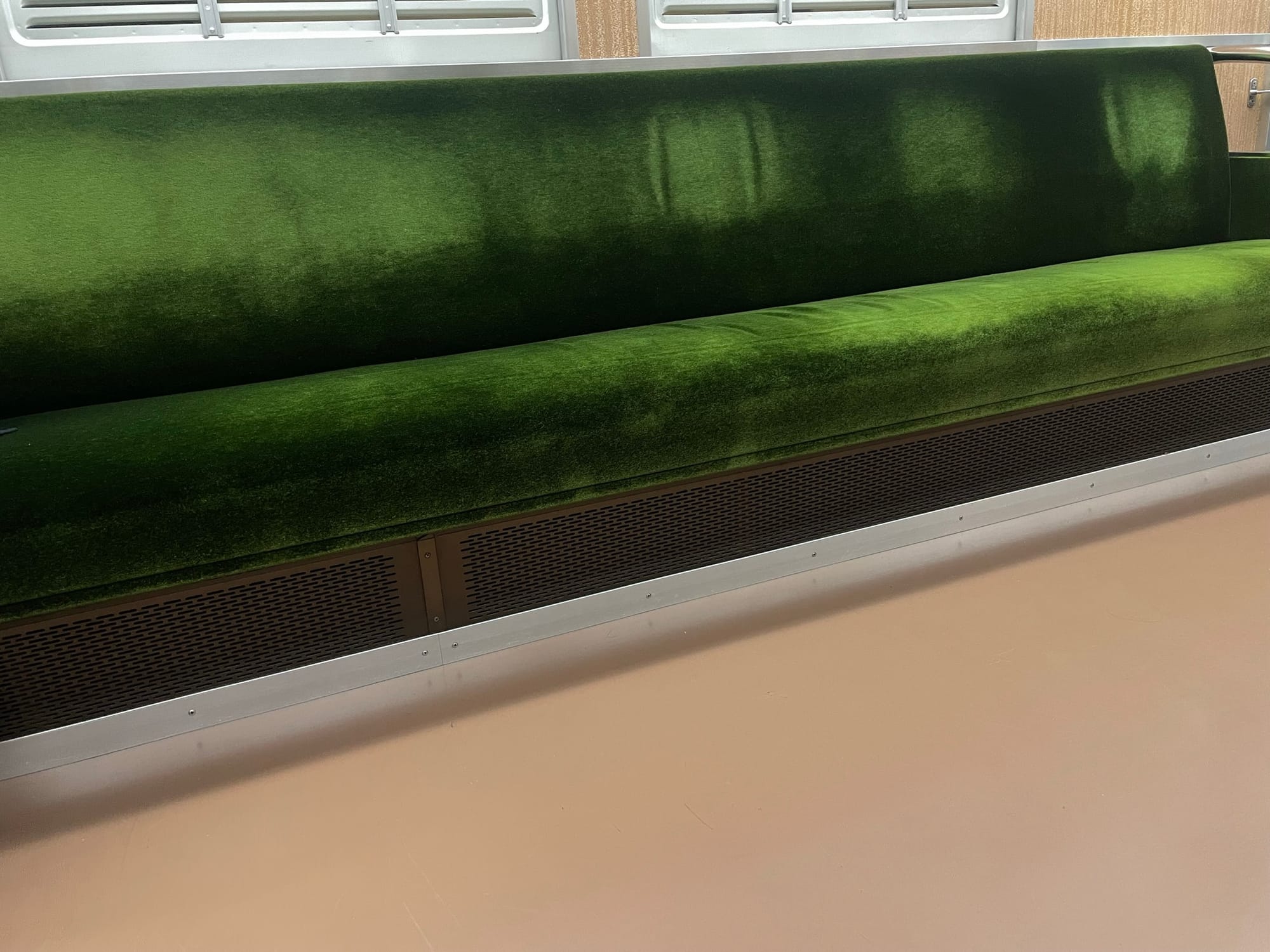
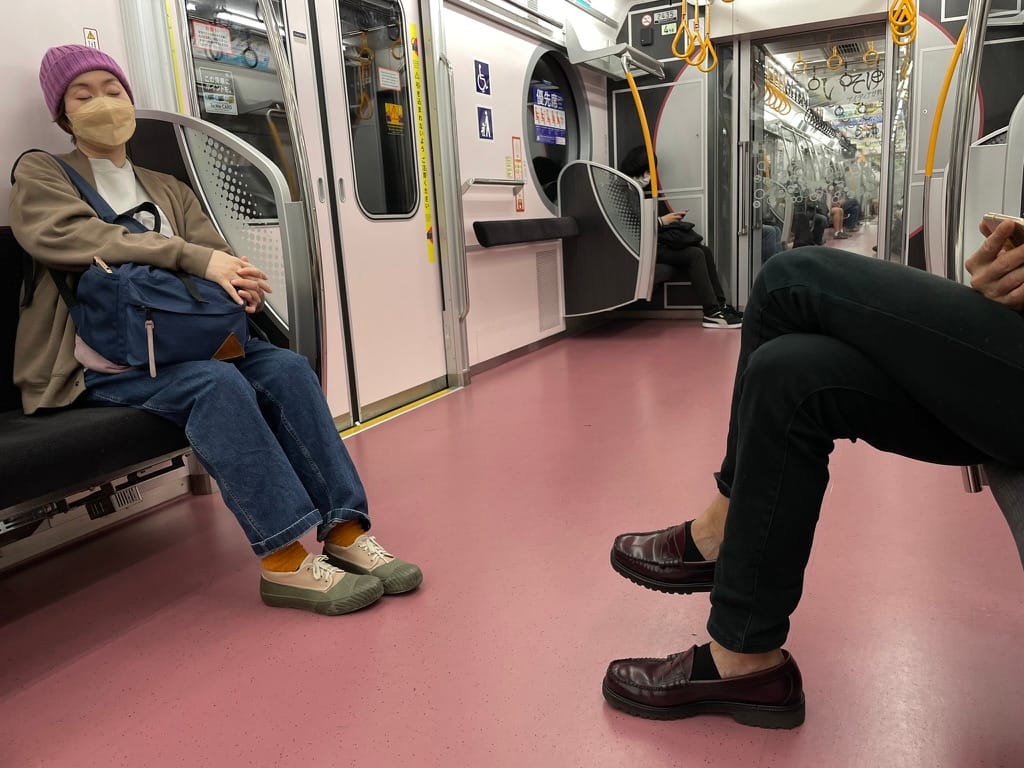
Tokyo (left) | Kyoto (center) | Tokyo (right)
Suade sofa seats in green. Count me in 👌
Train Stations
Train stations are also totally whacky:
- Tokyo Station is one of the largest train stations in the world. It processes ~500,000 passengers daily == >180,000,000 passengers every year! // this number is 2x of what the largest commercial airport in the world (ATL) processes annually.
- Kyoto Station is also massive. It is built 12 floors up! // Twelve. Floors. Up.
- The food selection on Japanese train stations is next level. (1) You have food courts with a wide selection of domestic and international restaurants at top-quality level. (2) The take-away sections are comparable to some premium food courts in New York, Berlin, and Paris.
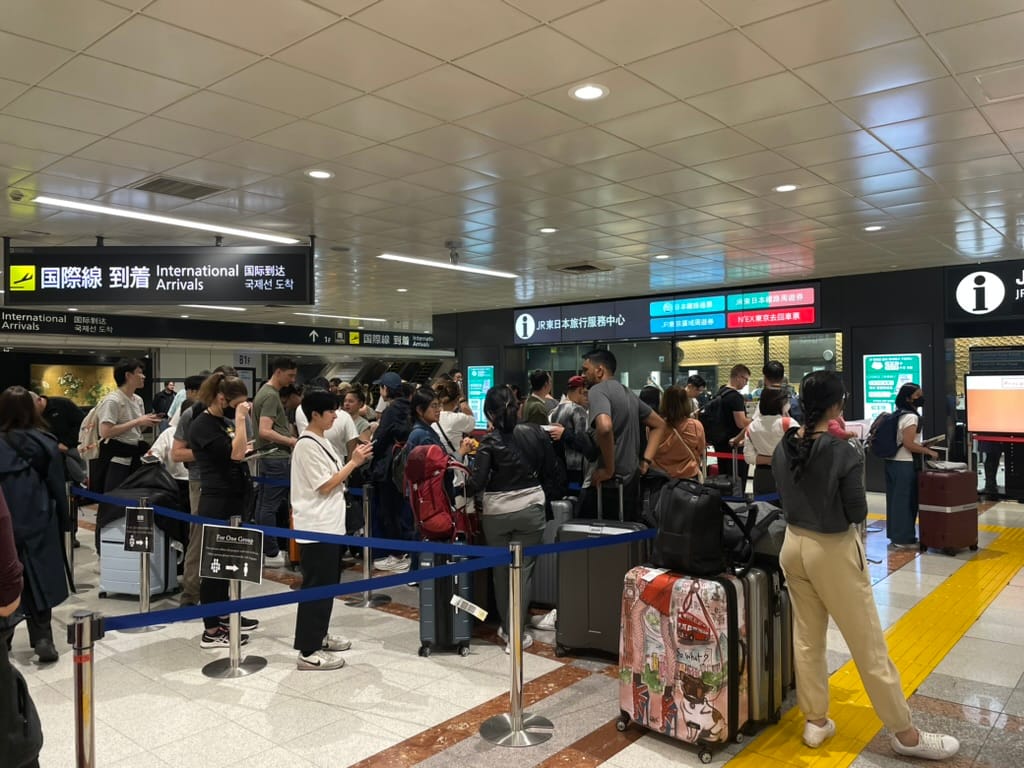
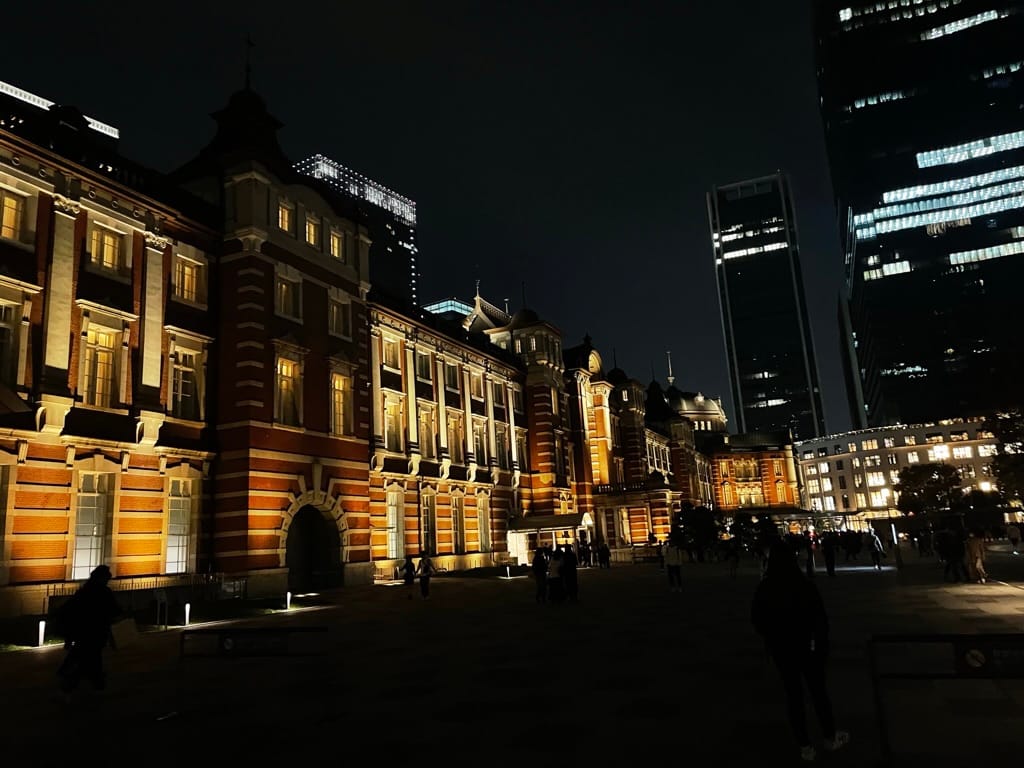
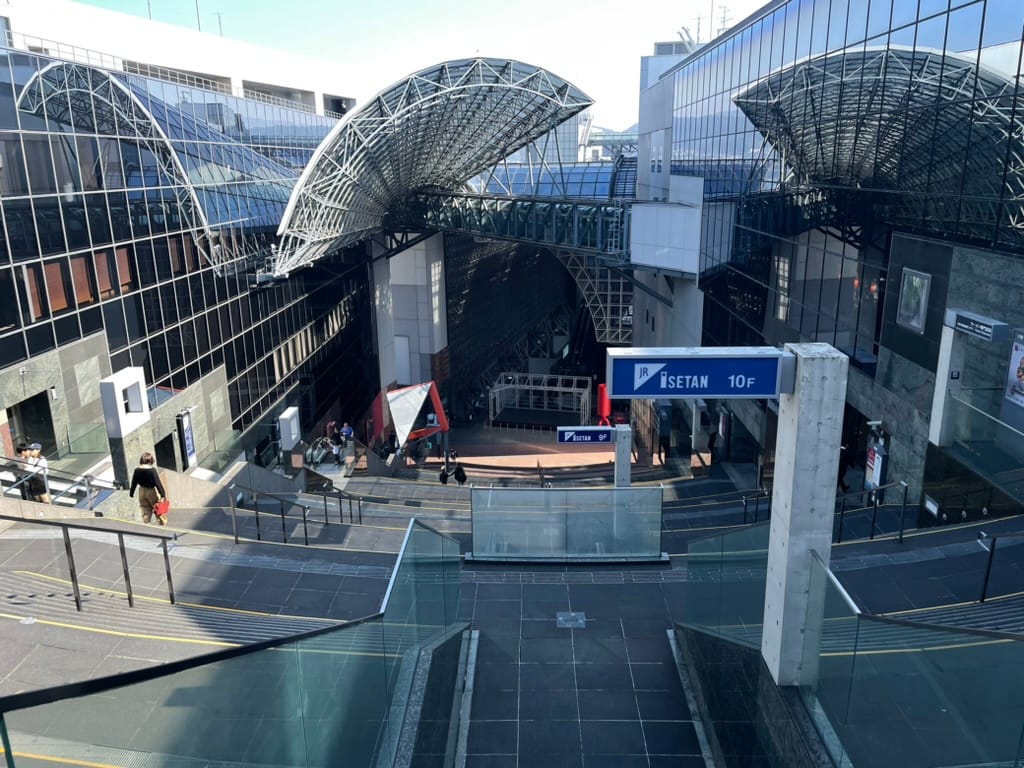
Line to collect JR Pass at Narita Airport (left) | Tokyo Station at night (center) | Kyoto Station as seen from its 11th floor! (right)
Toilets
Let's address the elephant in the room 🚽
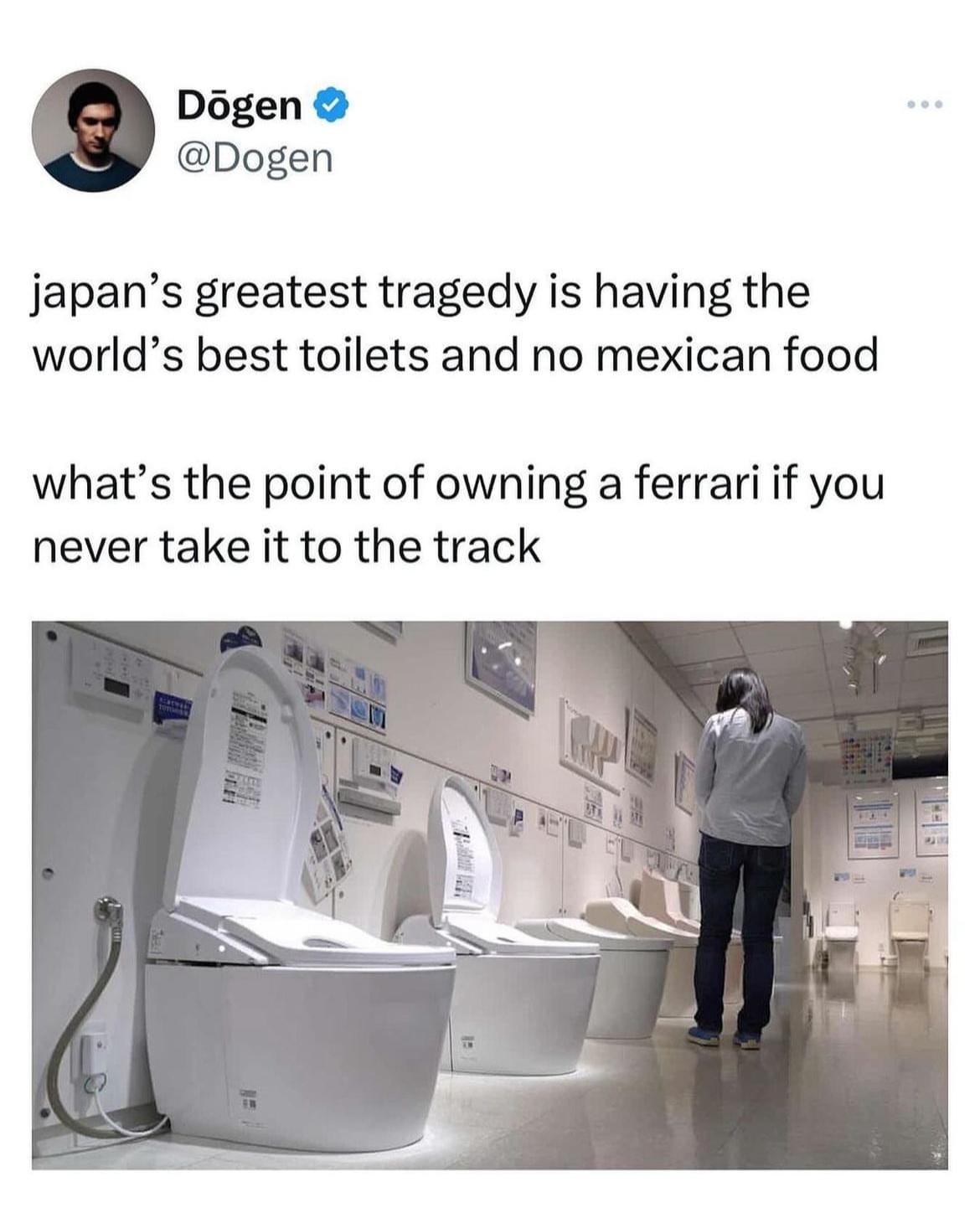
No joke, Japan's toilet game is ahead of its time.
- Toilets everywhere. Coffee shops, restaurants, public transport stations. There are even toilets in some metro train cars! Everywhere.
- Toilets are clean.
- Toilets are heated.
- Toilets have a built-in butt-sprinkler.
- Toilets have built-in privacy noises - which you can adjust in volume 🎚️
I'm glad we got this out of the way.
Travel
Everybody seems to be going to Japan.
Maybe it is one of those neuro-science effects where you see more of something once you start paying attention. But in my friend group alone, there are a dozen people who have been or will be traveling to Japan right now.
Why is that? My guess it's a combination of the following:
- Japan re-opened end of 2022 after a 2-year Covid shutdown.
- Japan is a relatively expensive travel destination for people in my network. (1) Far from Europe/US → expensive flights , (2) rather expensive country, (3) requires significant time off from the job.
- Japan's currency is historically weak.
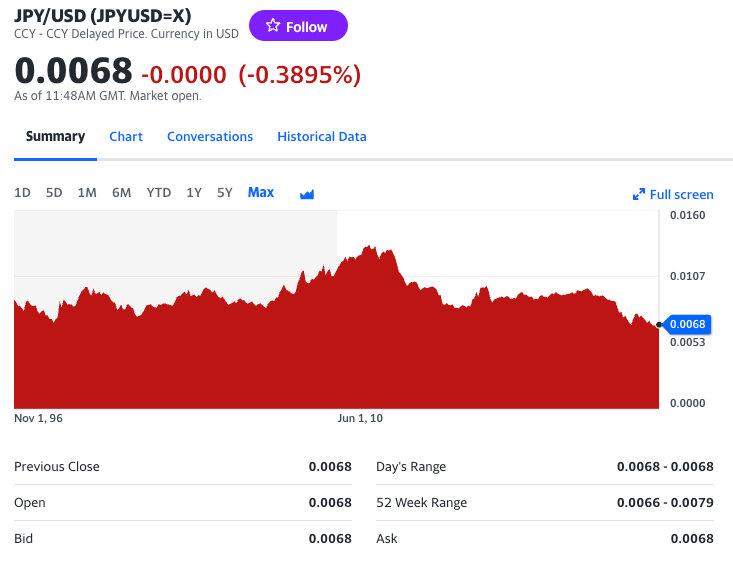
I think for my folks, now was a good time to venture out and explore Japan.
I'll share impressions from our travels to the various cities & regions of Japan.
Kyoto: Traditional Beauty 🌸
To be completely honest, I was expecting Kyoto to be a tiny village in the middle of nowhere.
Why?
People always contrasted it by saying: "Tokyo is the modern Japan and Kyoto is the traditional counterpart."
Somehow traditional sounded like wooden villages, trees, and shrines.
While some of it is true, I was off by some orders of magnitude in terms of scale.
It started by looking at the hotel location on Google Maps. On the map, it was soooo close to Kyoto Station and only one metro stop away. But... it was 30+ minutes walking distance 🤔
So, I did some research and found the following:
- Kyoto has 1,600 temples and shrines
- Kyoto has a population of 1,500,000 people
- Kyoto is the size of 10 Manhattans

After spending a week in Kyoto, I would subscribe to the notion that it represents traditional beauty.
Some parts were overrun by domestic and international tourists.
But other parts were calm and cute. Like a time capsule to a different era.
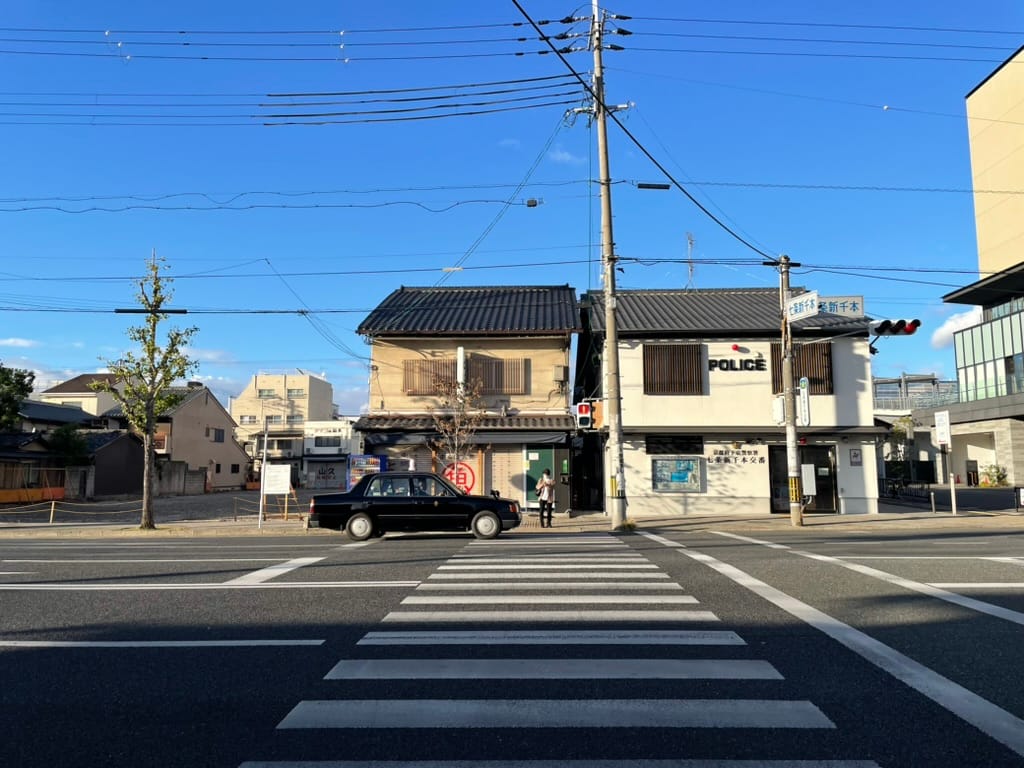
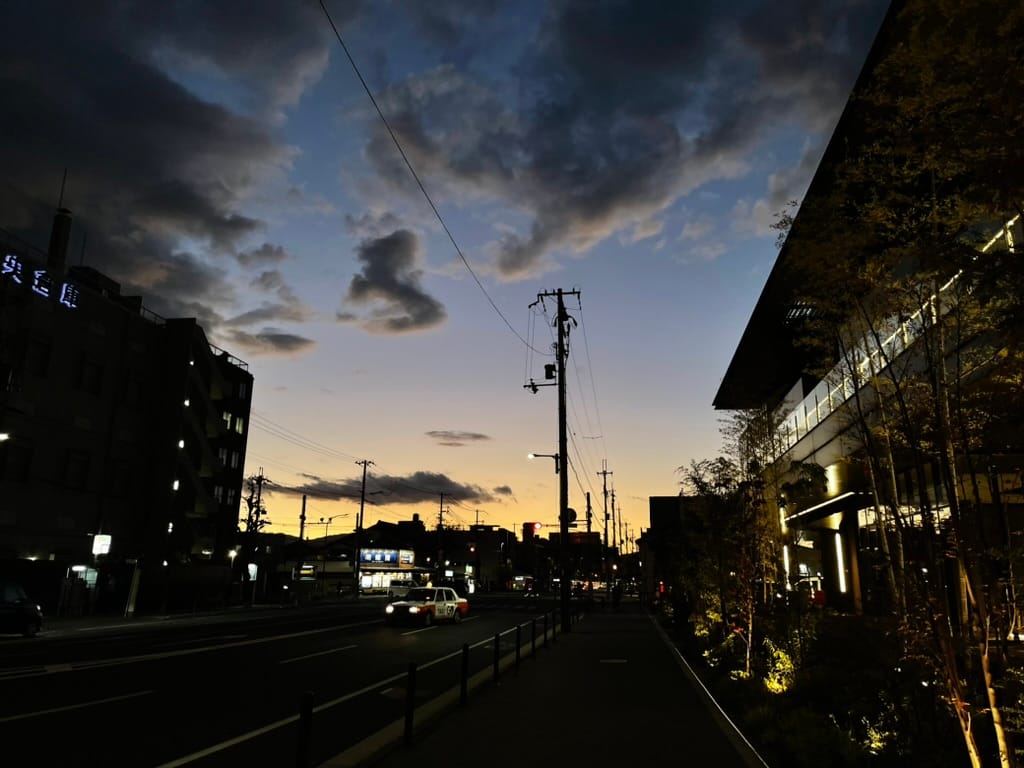
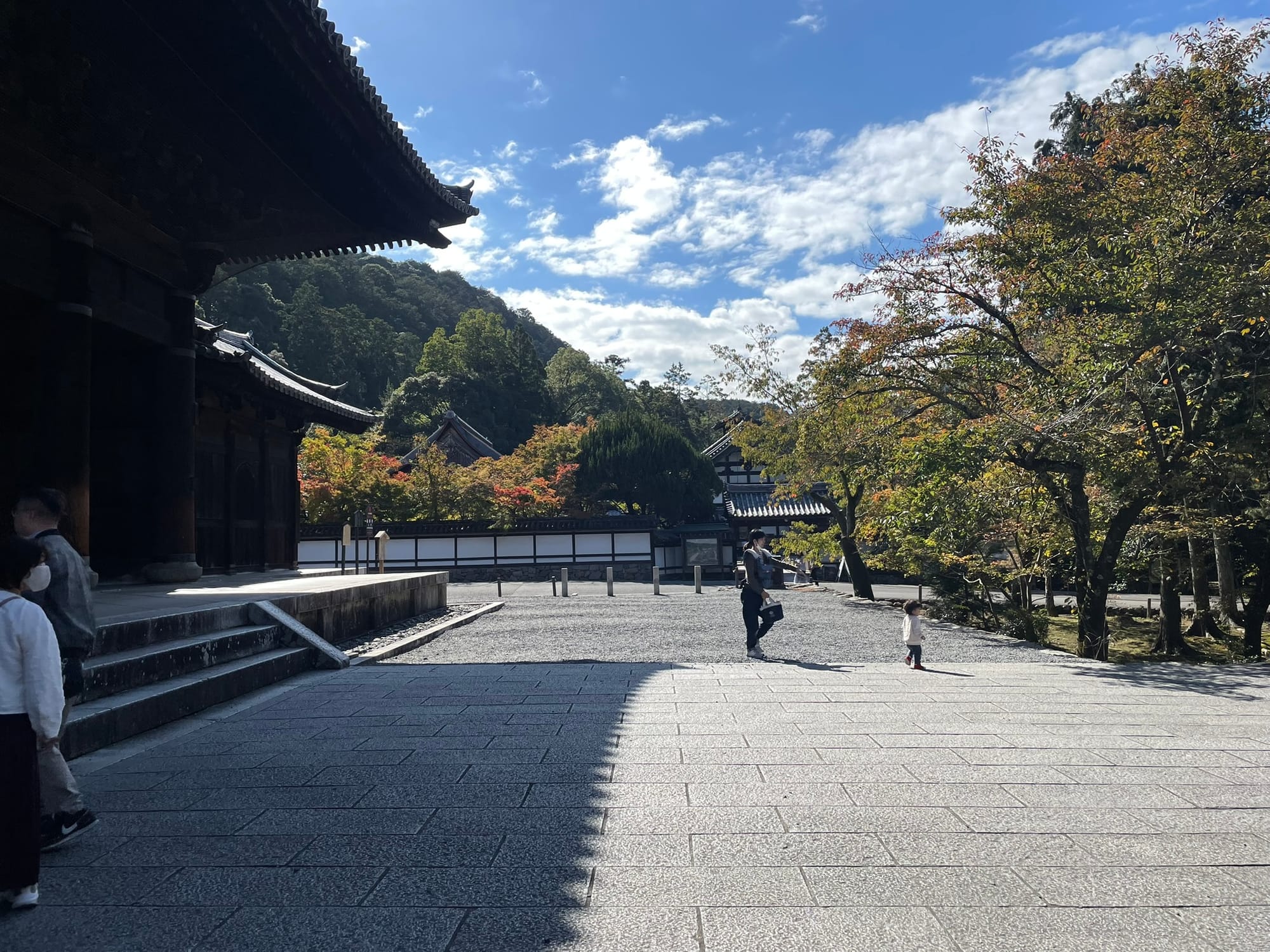
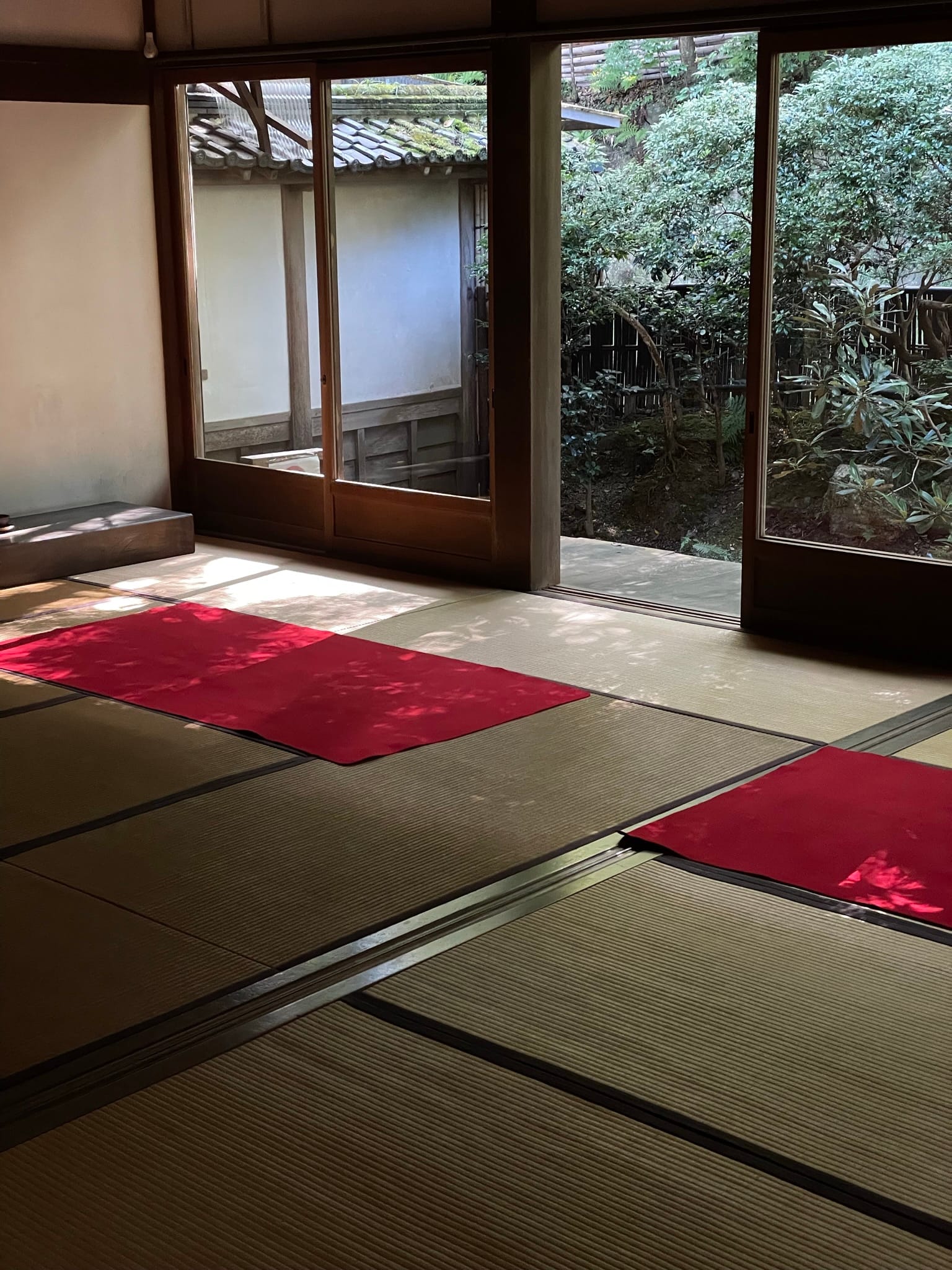
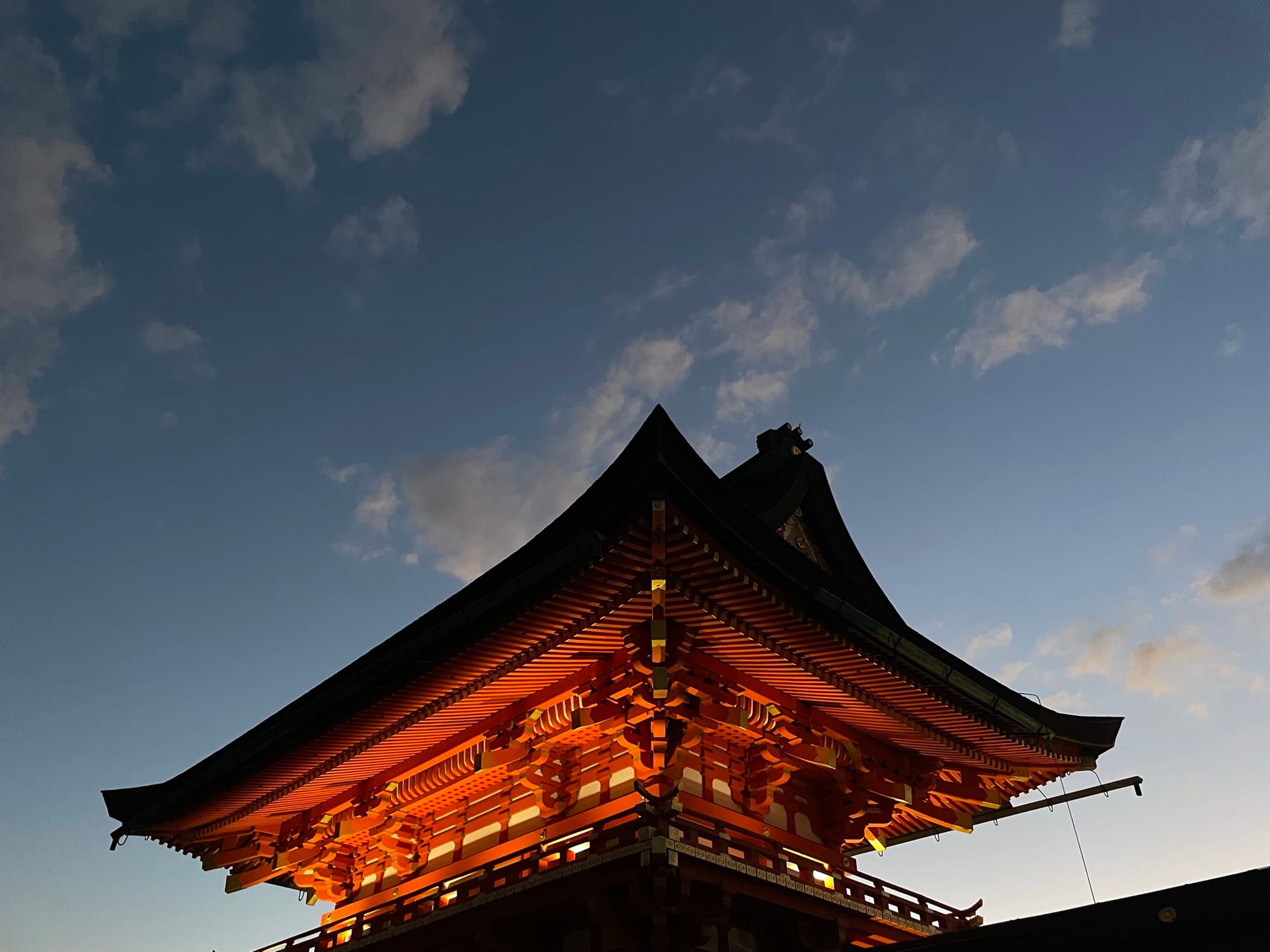
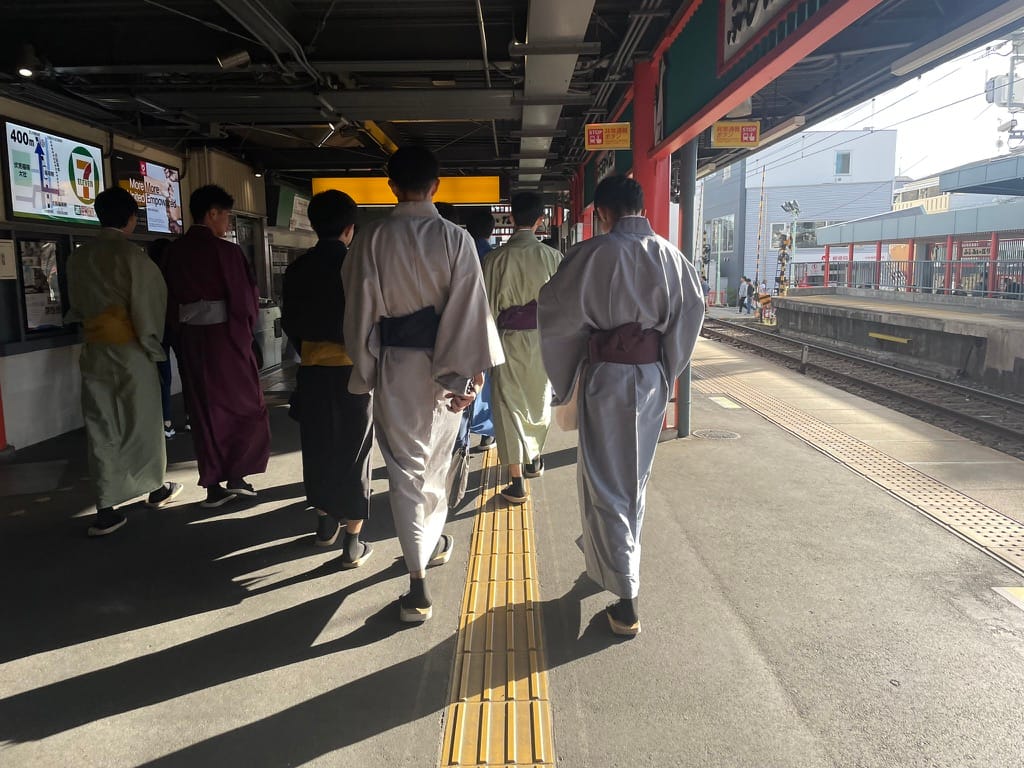
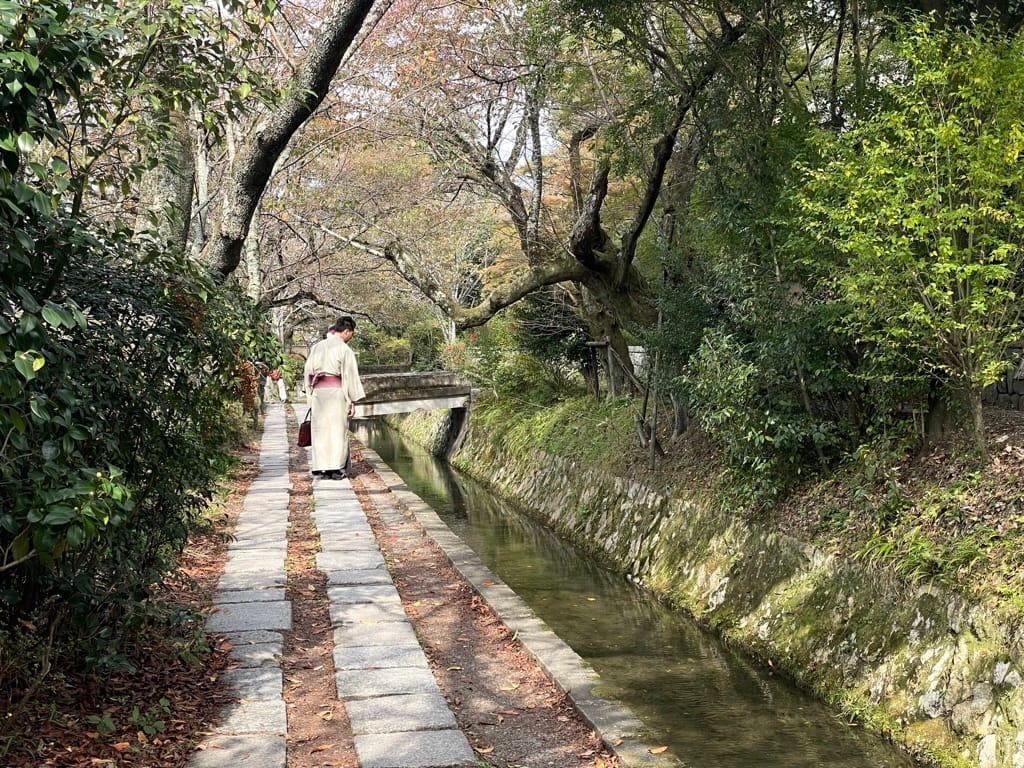
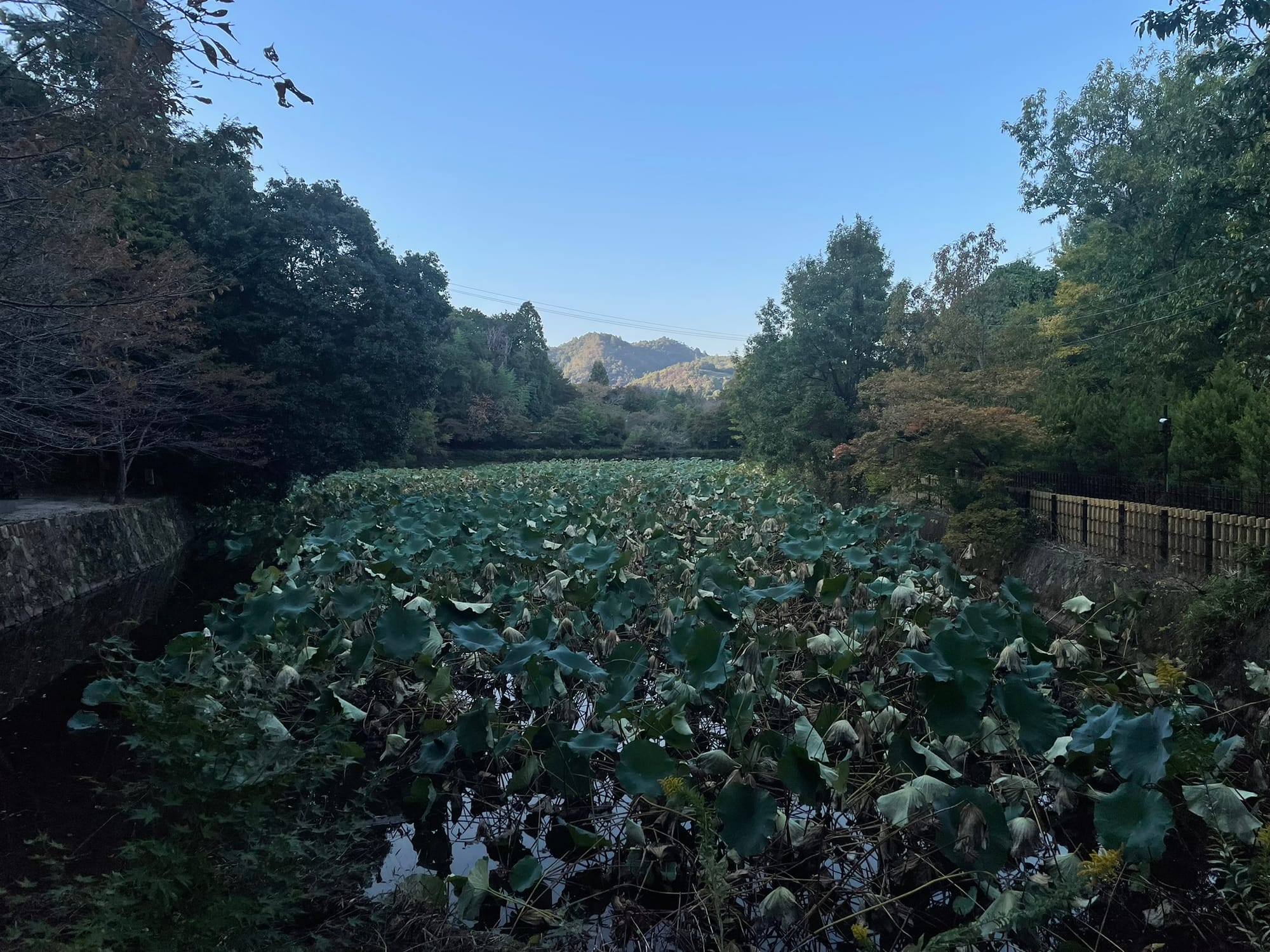
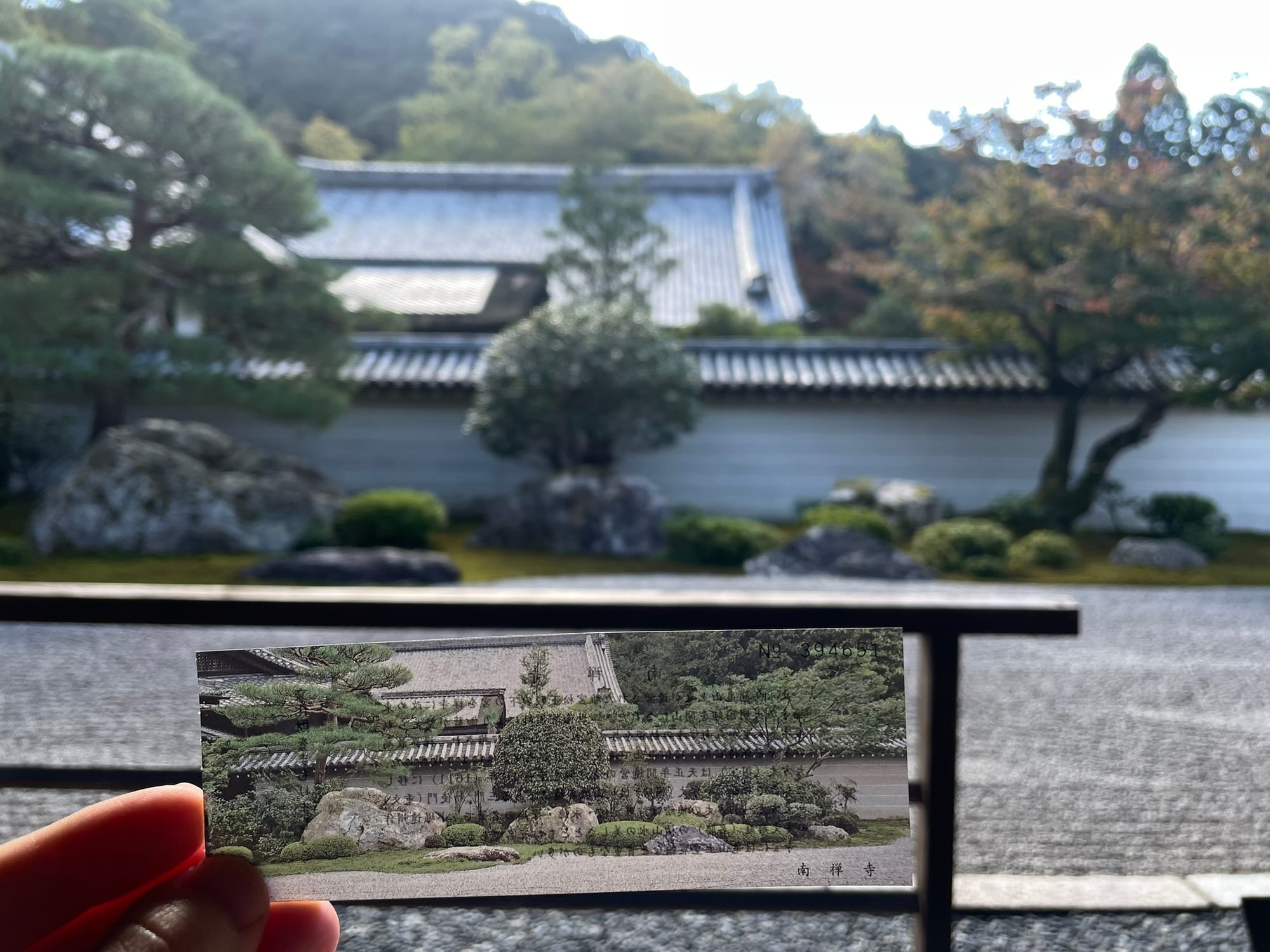
Impressions from Kyoto's traditional beauty.
Food in Kyoto
Kyoto introduced me to a couple culinary things:
- 🍵 Matcha - A ground green tea mixture. Originated in Kyoto. High in caffeine. A very potent diuretic (yes, I spelled this word incorrectly more than once). // Grab it here.
- Soba Noodles - Before traveling in Japan, I never understood why you would want to have a plate of cold, unseasoned noodles. Now I get it. Such a unique & refreshing meal. // Grab'em here.
- Curry Udon - Never heard of it. Not bad, but not my fave. // Grab it here.
- ⭐️ Spicy Chicken Ramen - Wow. Five stars! // Must try here.
- Okonomiyaki - Delicious pancakes. // Grab'em in this family-run resto.
- 🍺 Izakaya - Think of cross-over between a pub and a tapas place - but Japanese. Small tasty plates (nigiri; fried chicken; etc.) with beer, sake, or whiskey high balls. Amazing and I'm surprised that there aren't more Izakaya's in Europe and/or the US.
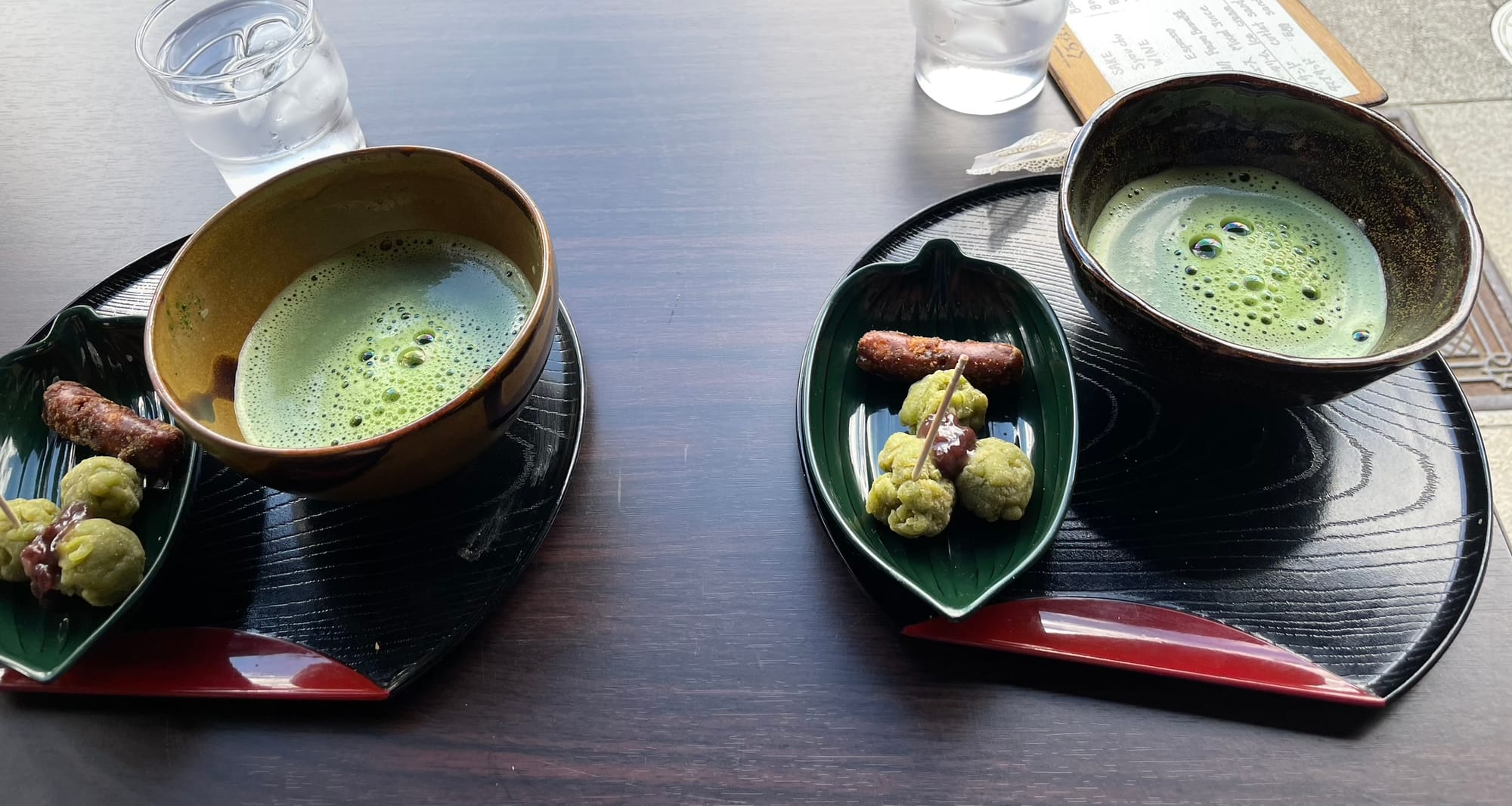
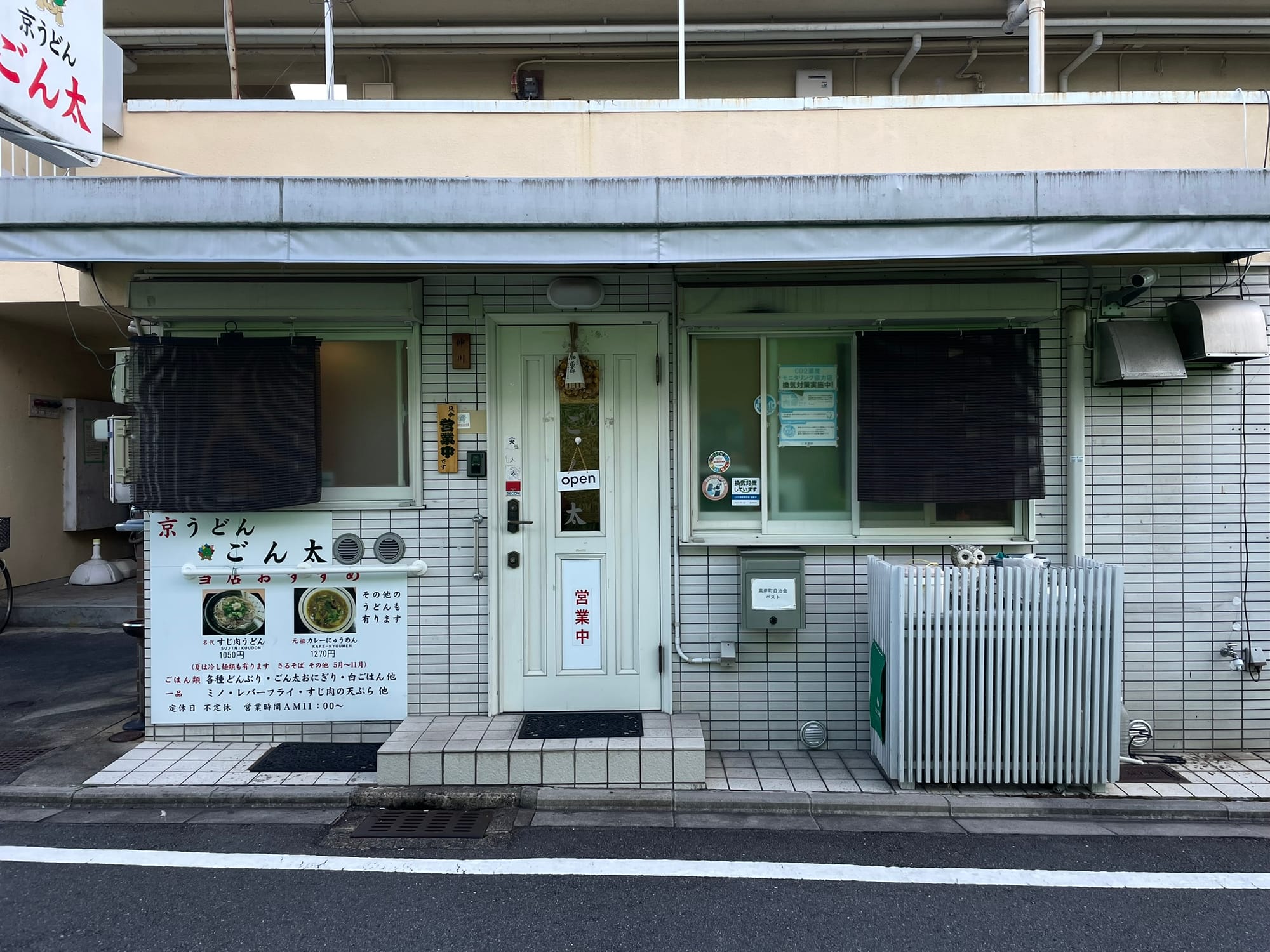
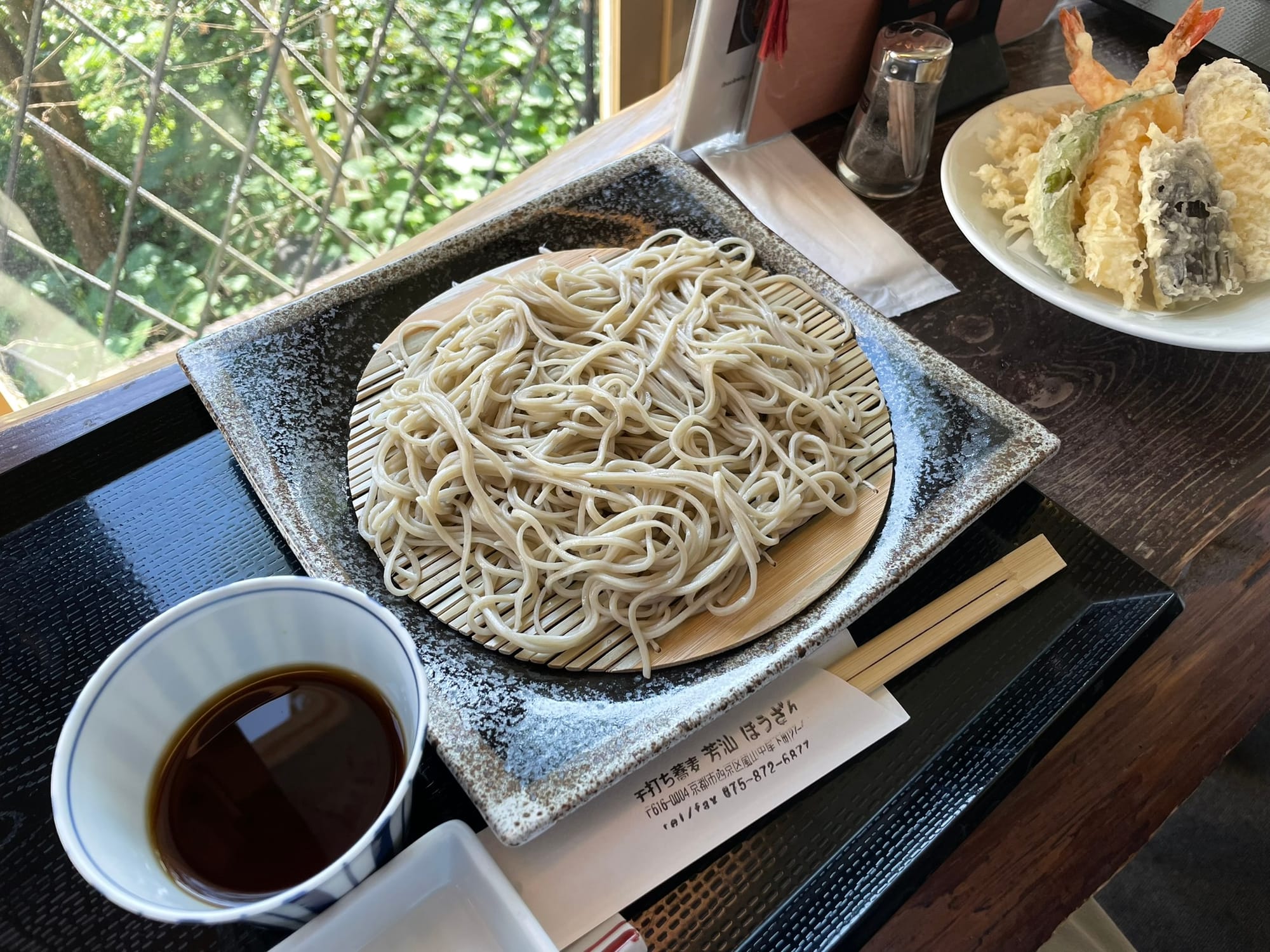
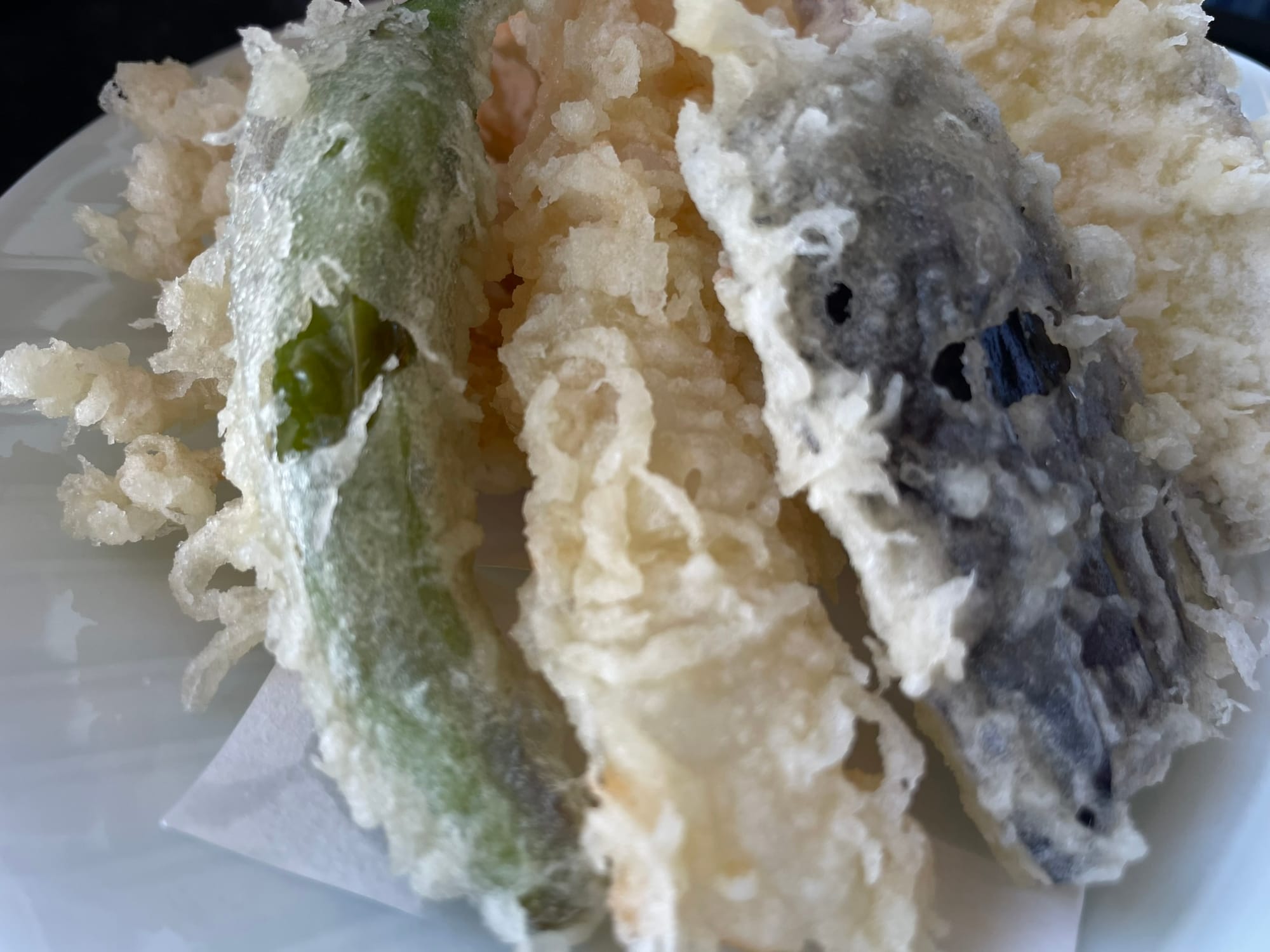
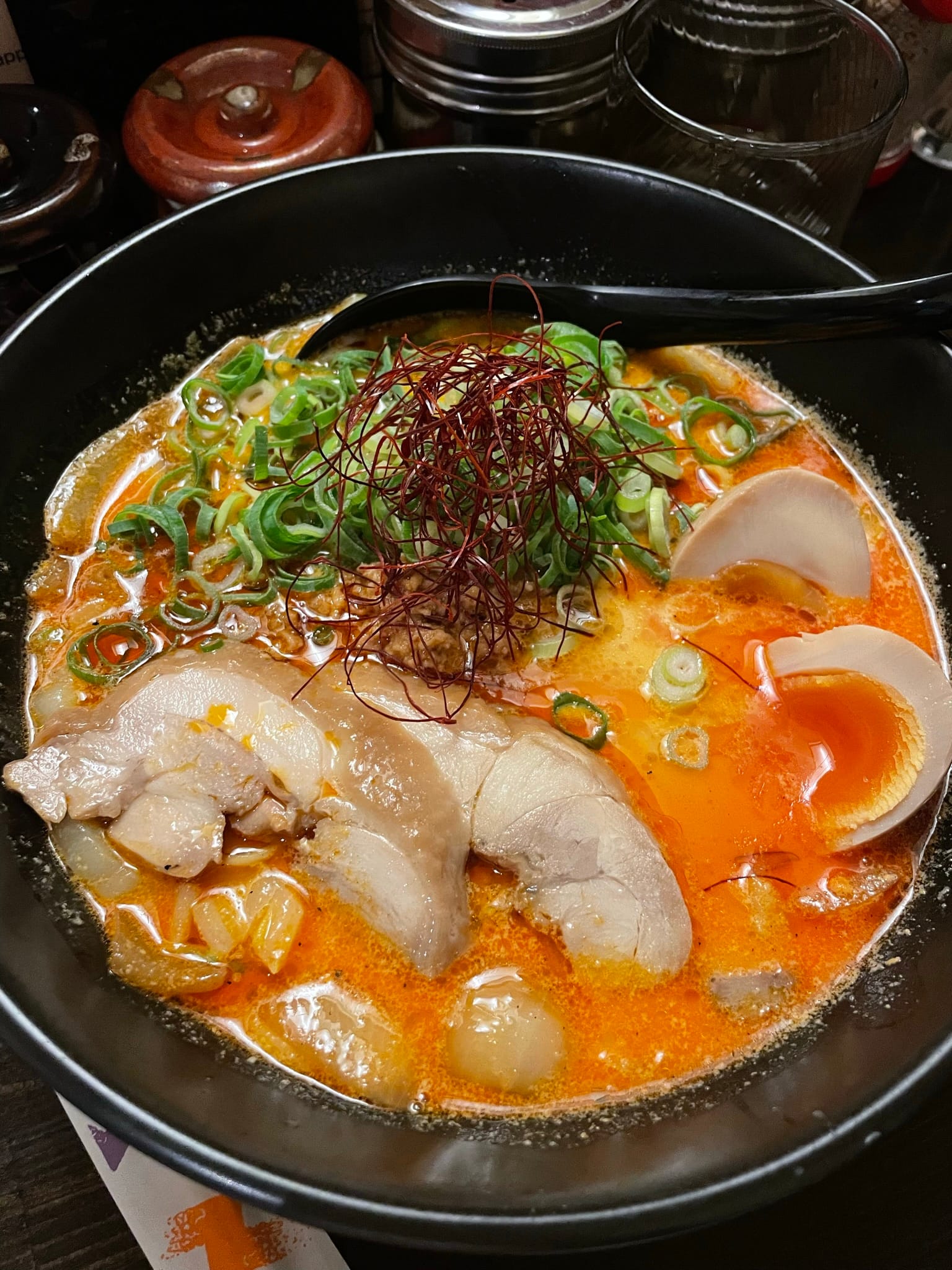
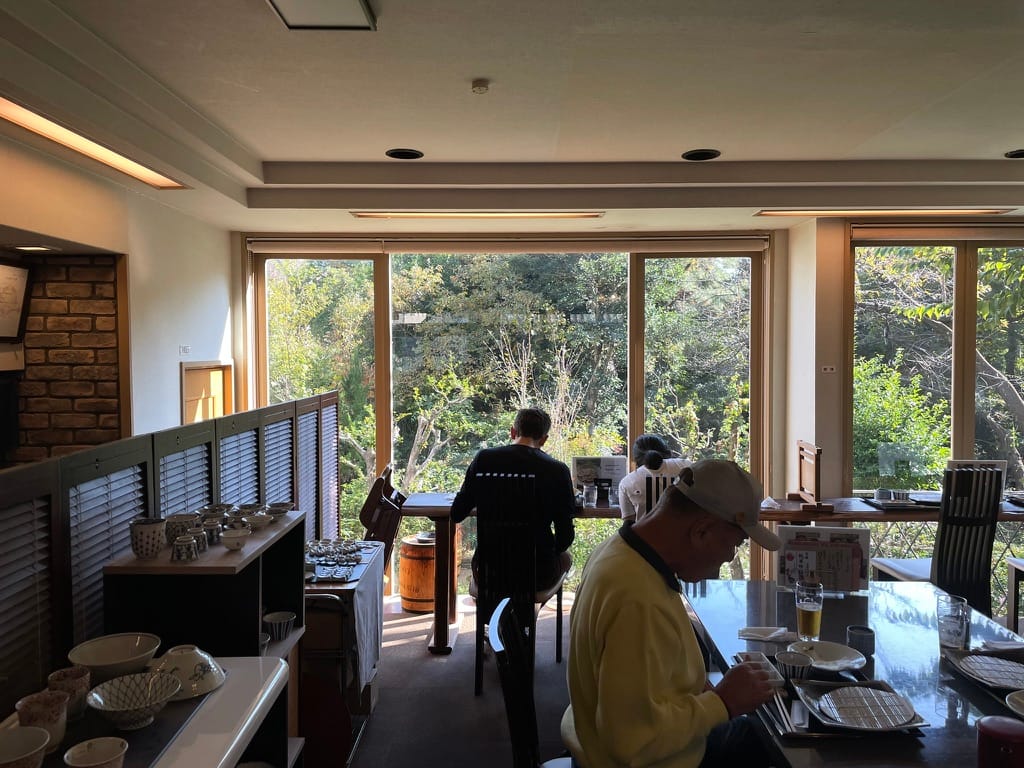
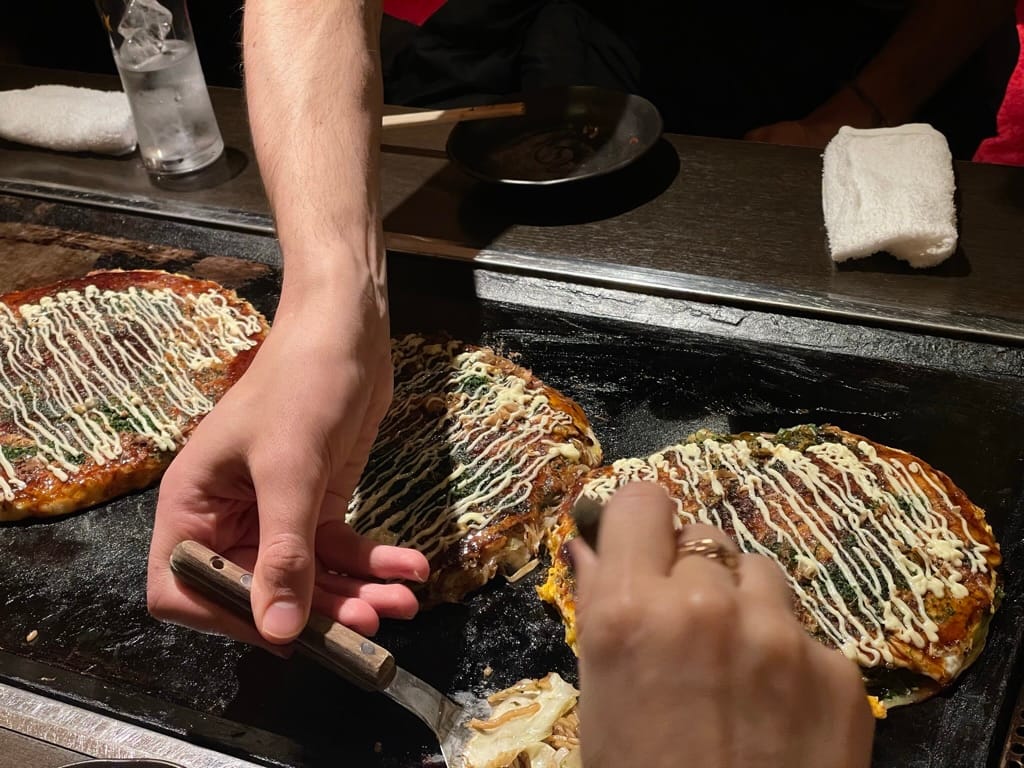
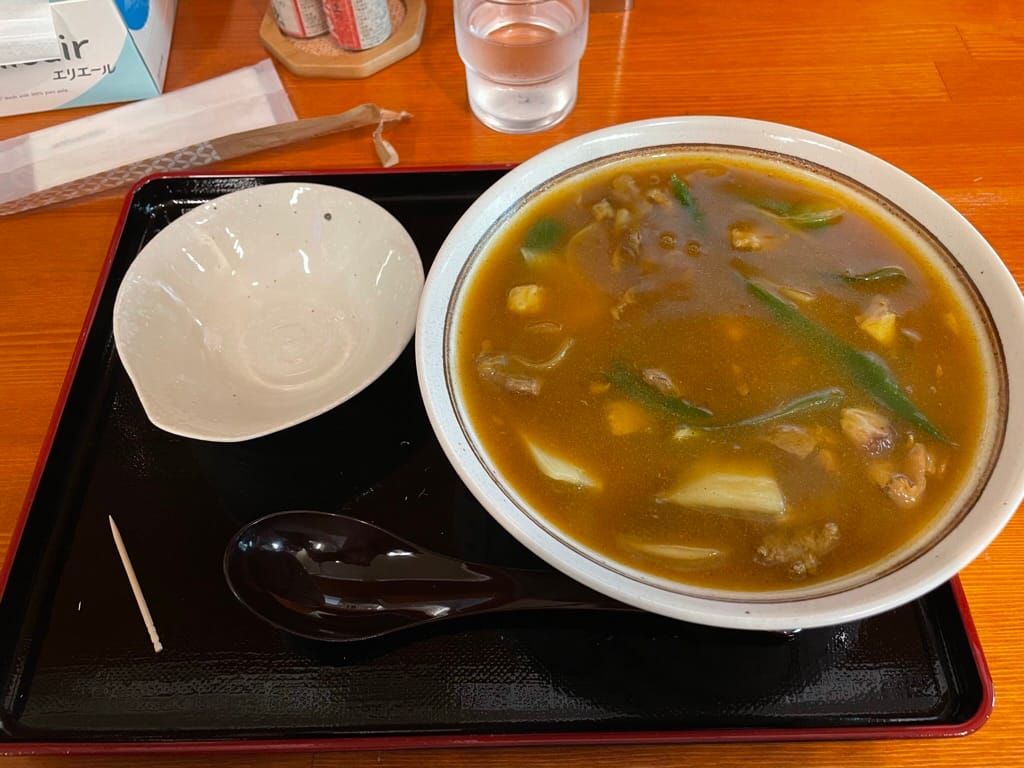
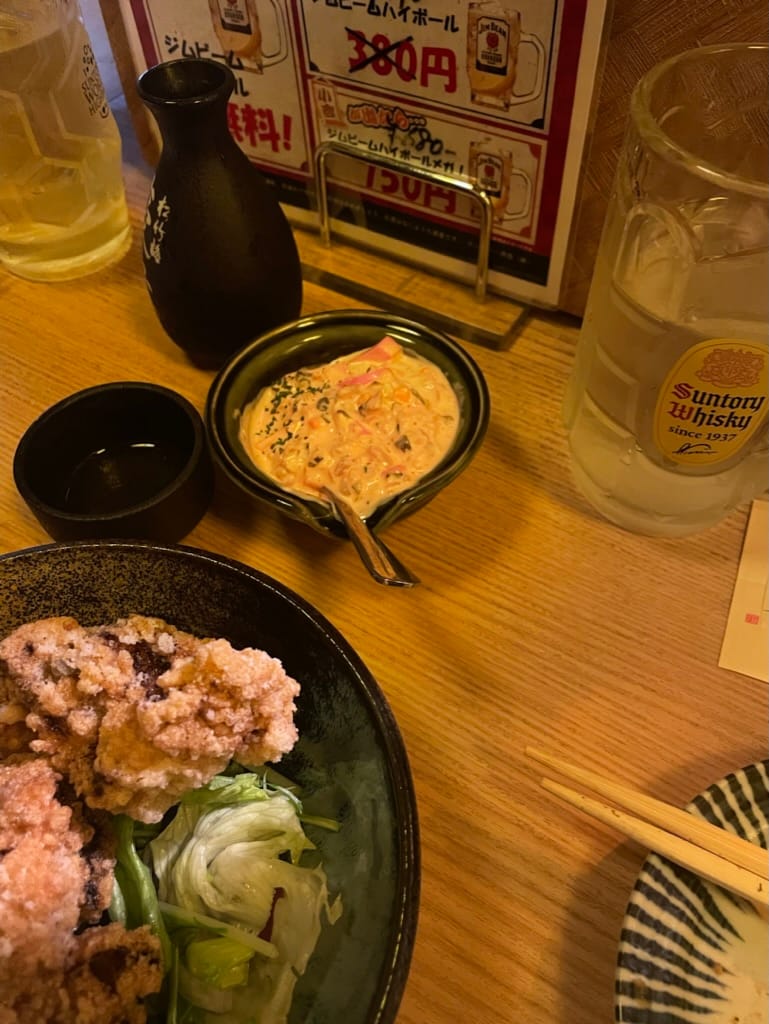
1. Matcha. Bowels, beware! | 2. A tiny hole-in-the-wall curry ramen place. | 3. Soba noodles. | 4. Tempura veggies. | 5. Spicy chicken ramen. | 6. Inside view of the Soba resto. | 7. Okonomiyaki. | 8. Curry Udon. | 9. Izakaya food with drinks.
Kyoto Favorites
Ranked by yours truly:
- Walk along the Philosopher's Path - No questions asked. Do it. // Walk through a residential area along a small river in East Kyoto. Bonus points if you check out Nanzenji Temple, grab a Matcha (see above), and walk by the area of Kyoto University on your way back.
- Saihō-ji Temple - Check out the beautiful moss temple. This is what bliss feels like.
- Ogura Pond - A pond with lotus flowers. Hard to explain. Beautiful. // The surrounding area is full of shrines, gardens, and walks. Definitely worth a day trip.
- Stroll around the Kamo River Area - Shopping, food markets, and a killer chicken ramen (see above).
- Hike up the Fushimi Inari Shrine - Ok, this one is suuuuper touristy, but still worth the hike. You'll be walking through hundreds of Toriis ⛩️ Remember? // At the top of the hill you have a great view + if you catch the blue hour at the entrance, you can take snaps like this one 👇
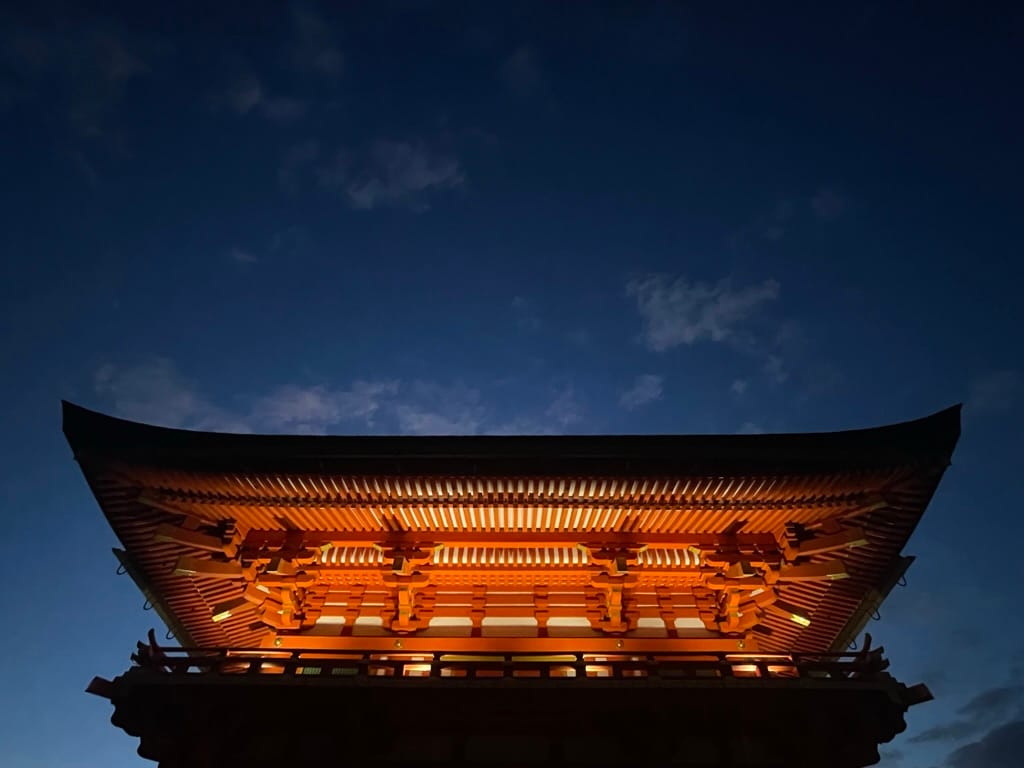
A couple of GMaps bookmarks.
Hiroshima & Miyajima ⛩️
One thing I would recommend to everyone who is already in Kyoto: Take a day-trip to Hiroshima & Miyajima.
We followed this guide to the dot and it worked out perfectly.
Miyajima Island
First, we traveled to Miyajima, which lays across the bay of Hiroshima.
The region is famous for a couple of things:
- ⛩️ Itsukushima Shrine as in one of the holiest sites in Shintoism
- 🍋 Lemons as in lemon beer
- 🍁 Momiji as in leaf-shaped pastry
- 🦪 Oysters as in oysters
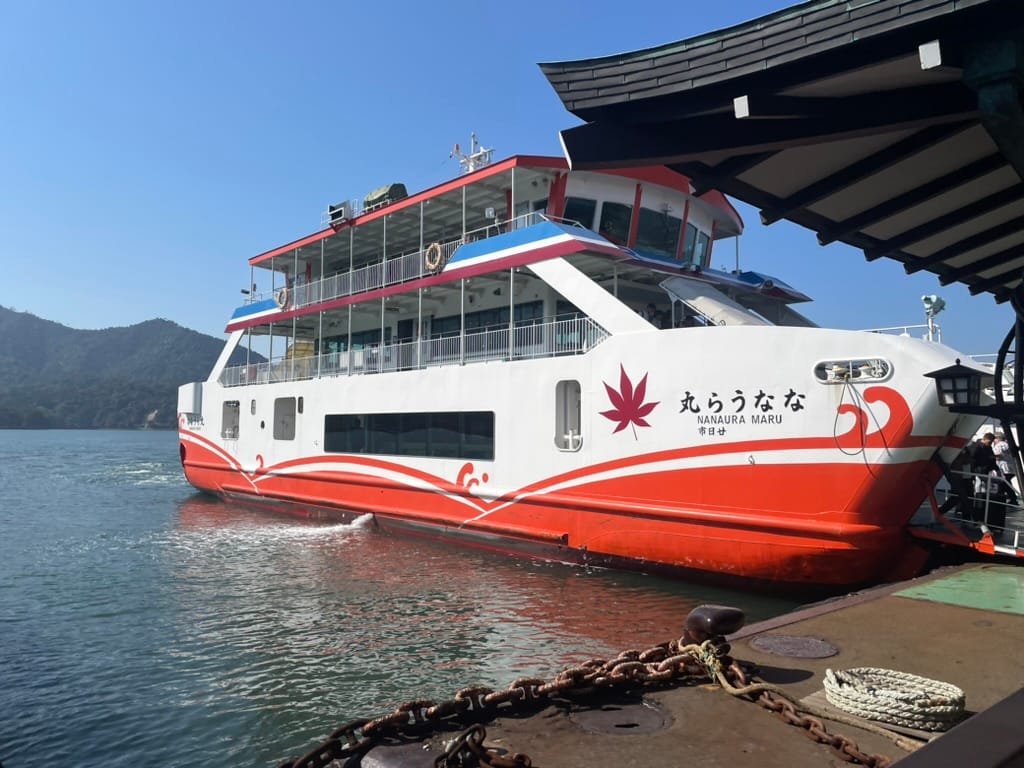
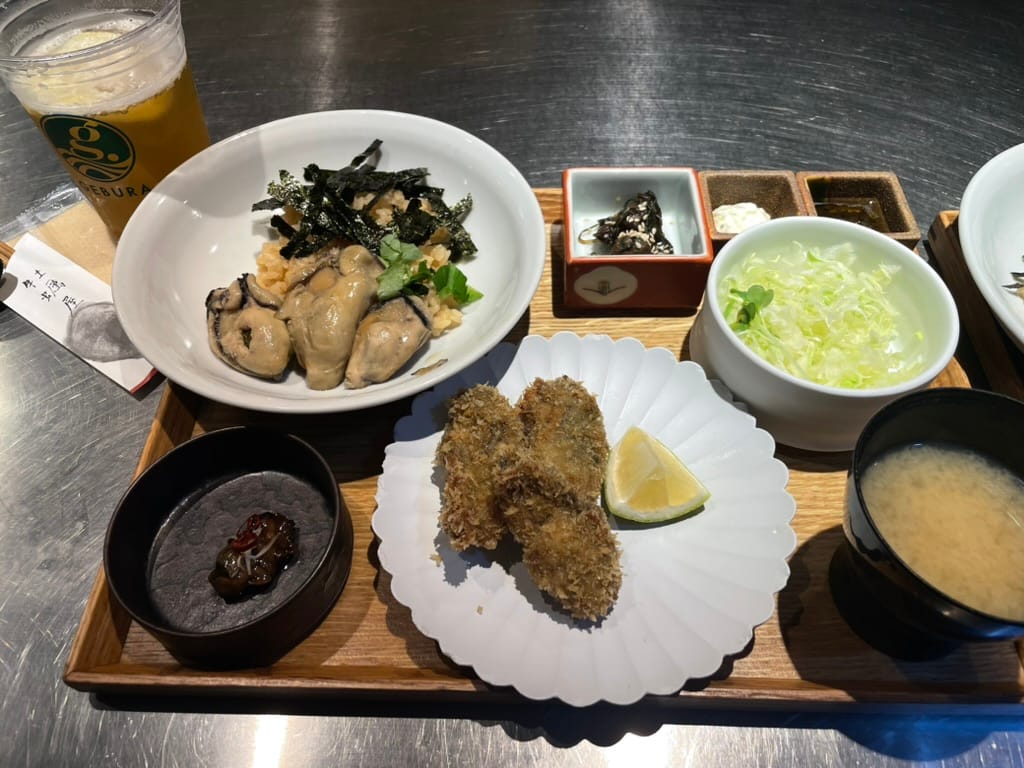
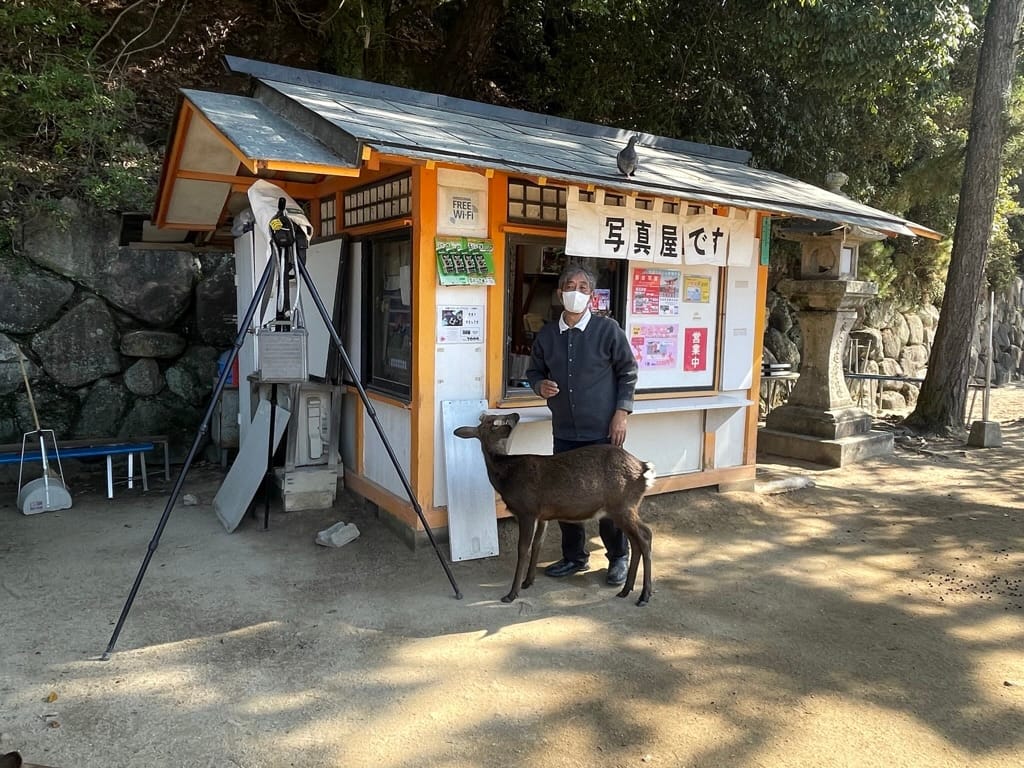
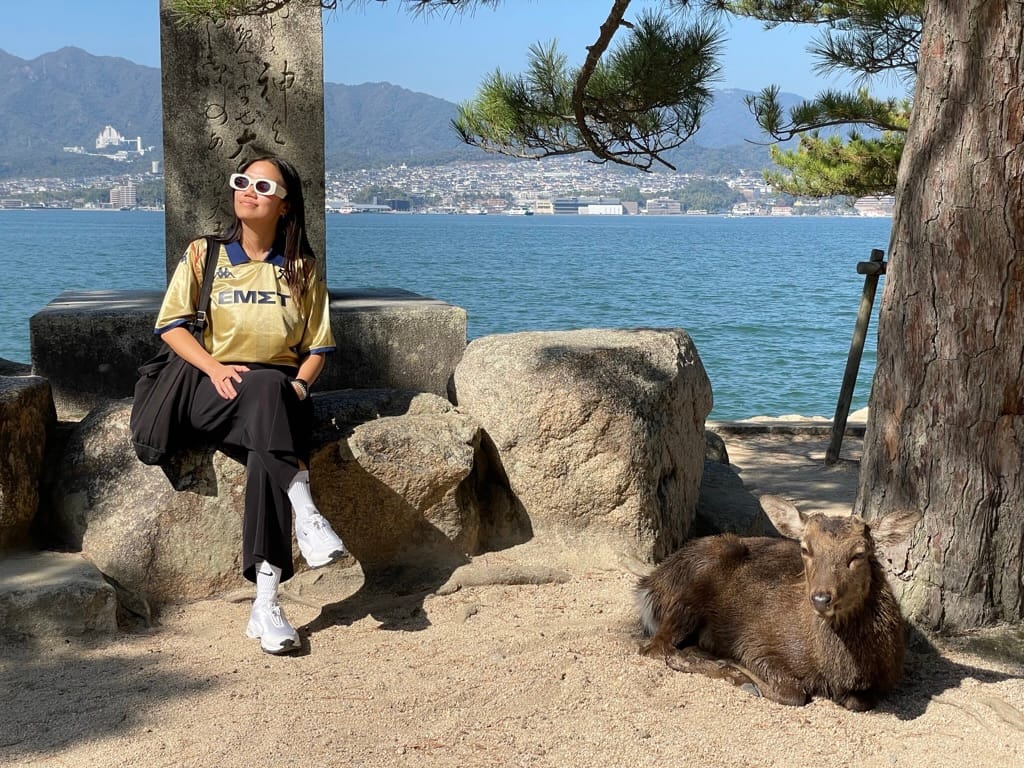
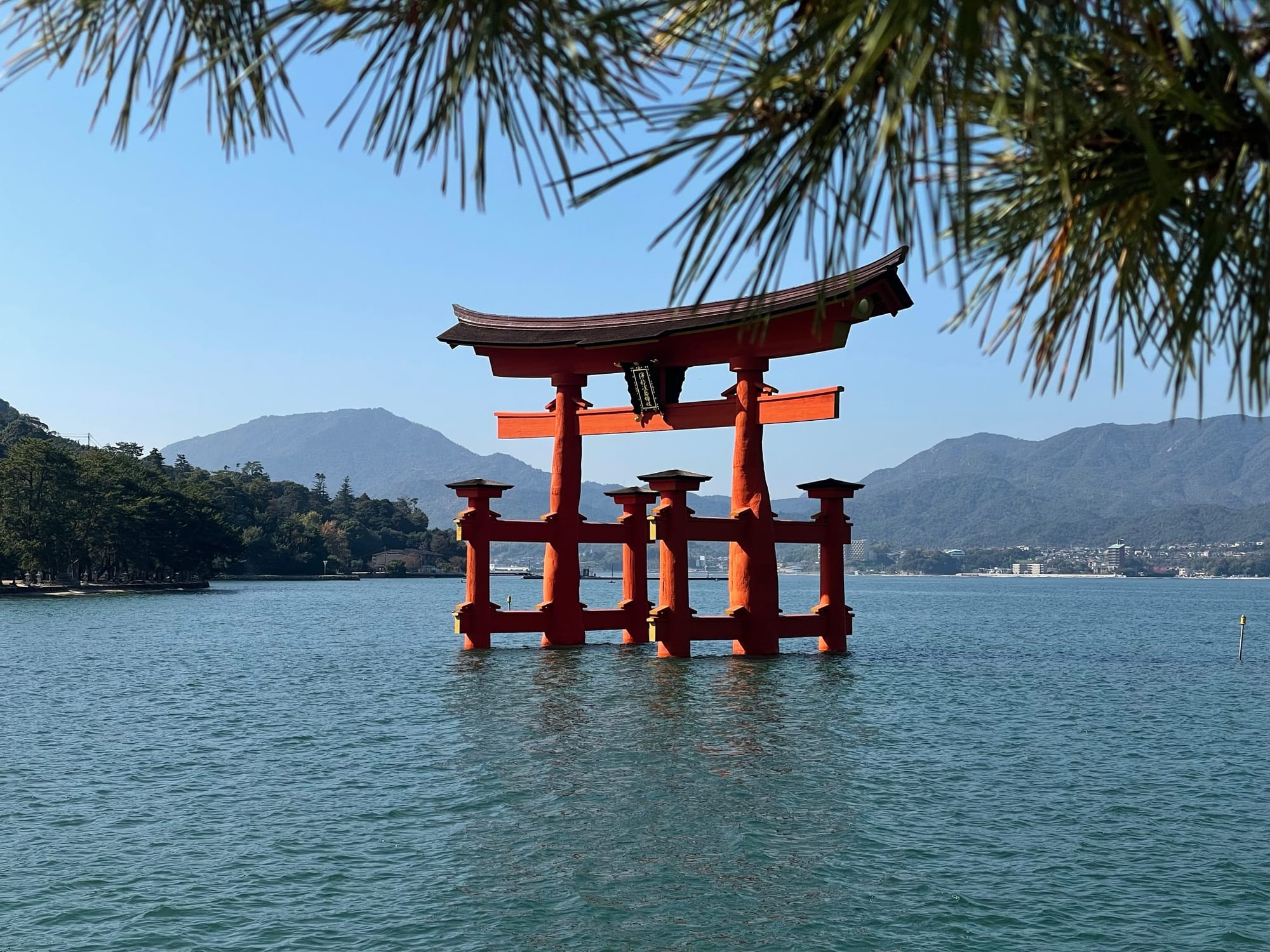
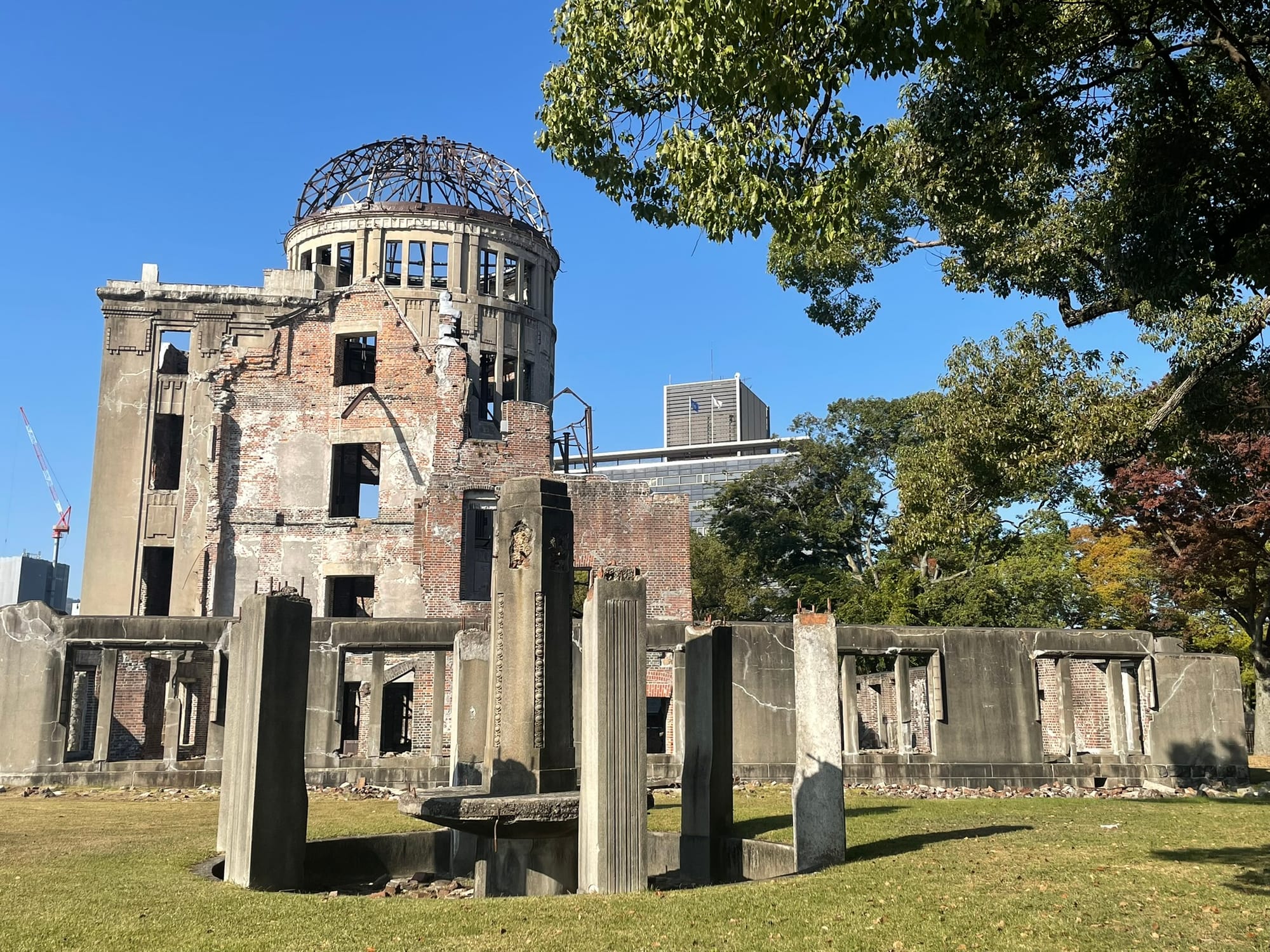
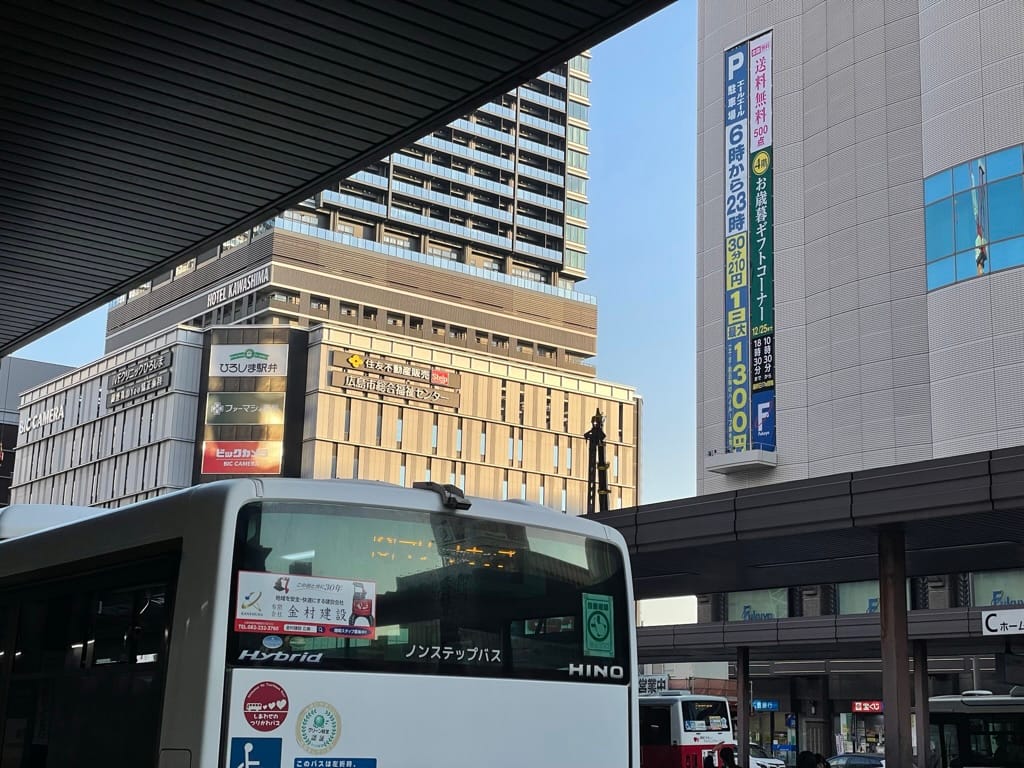
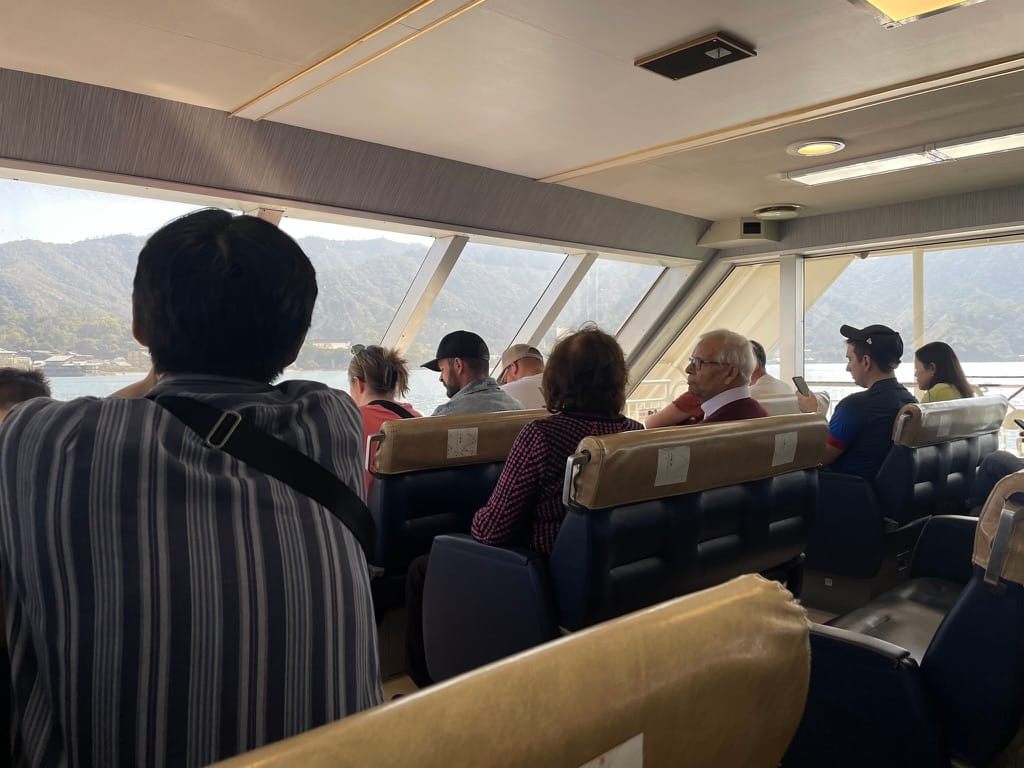
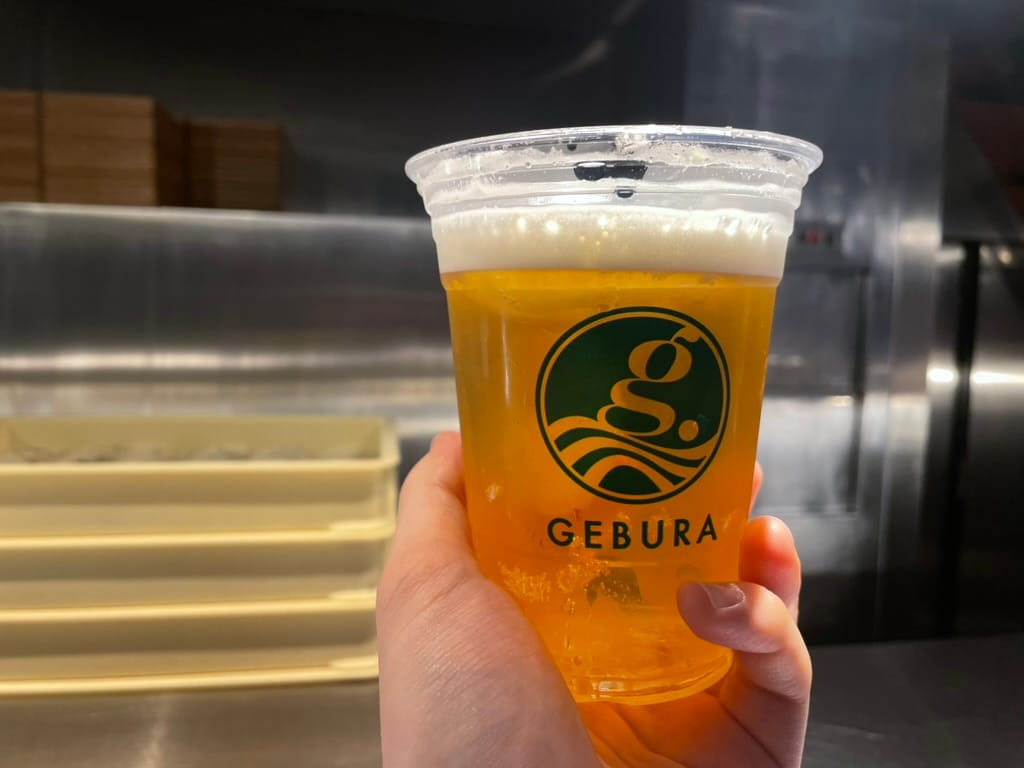
1. Ferry to Miyajima | 2. Oyster lunch | 3. Japanese sartorialist with a deer | 4. American tourist with a deer | 5. Itsukushima shrine | 6. The Atomic Bomb Dome in Hiroshima | 7. View from Hiroshima station | 8. Ferry vibes | 9. Lemon ale 🍋
Then we traveled to a more somber place.
Hiroshima and the Dropping of The Atomic Bomb on August 6th, 1945
If you don't live under a rock, you have learned in history class about the dropping of the atomic bomb on Hiroshima.
I don't even know where to begin, so I'll just start with some things I did not know before visiting the place:
- The selection of Hiroshima was somewhat random. The city was part of a short-list, but eventually, the clear weather tipped the odds and the U.S. decided to drop the bomb on Hiroshima due to the clear view on target.
- The city was wiped out in the blink of an eye. Visualize this for a moment. You look at your city, then comes a bright flash, boom, it's gone. Everything.
- Some of the biggest damage was caused by a massive fire after the dropping of the bomb.
"It was hard to believe what we saw", Tibbets told reporters, while Parsons said "the whole thing was tremendous and awe-inspiring ... the men aboard with me gasped 'My God'."
---
Source: English wikipedia Article
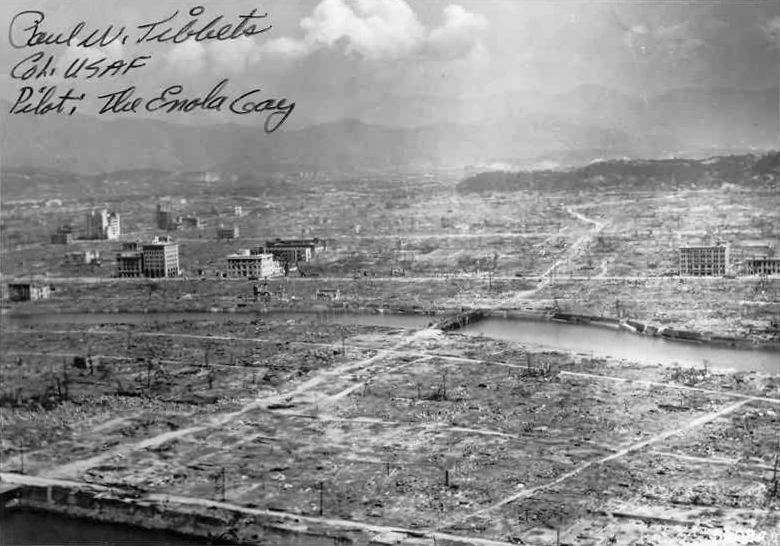
The Hiroshima Peace Memorial Museum does the best it can at telling not only the political side of the story but most importantly the individual stories of regular citizens who were affected.
Museum visitors were getting noticeably quieter by the minute. By the time we reached the last room, I would guess that half of the visitors were crying or sobbing.
The scale, speed, and malice of the destruction are impossible to grasp.
One thing I listened to in preparation for this visit was an episode of Dan Carlin's Hardcore History podcast. It is called "The Destroyer of Worlds."

It is almost 6 hours long (yes, you read correctly, a six hour podcast) and dives into various aspects of nuclear weapons:
- Development
- Political Context
- Hiroshima & Nagasaki
- Arms Race
- Nuclear Strategy
- People who were had access to the red button
In the year 2023, the city is vibrant and looks like a modern Asian city.
Yet, I don't think this history will ever be removed from its core.
Now, how to pick up after this... I don't know.
I'll just tell you about Hakone.
Hakone 🧼
Hakone is an hour away from Tokyo and is famous for its nature and its traditional hot springs - also known as Onsen.
There are different ways you can experience the hot springs:
- Public hot springs
- Hotel room with a private Onsen en suite
- Hotel room with access to public and private Onsen* that are not en suite // *(is Onsen the plural of Onsen? ... I don't know)
We booked the latter.
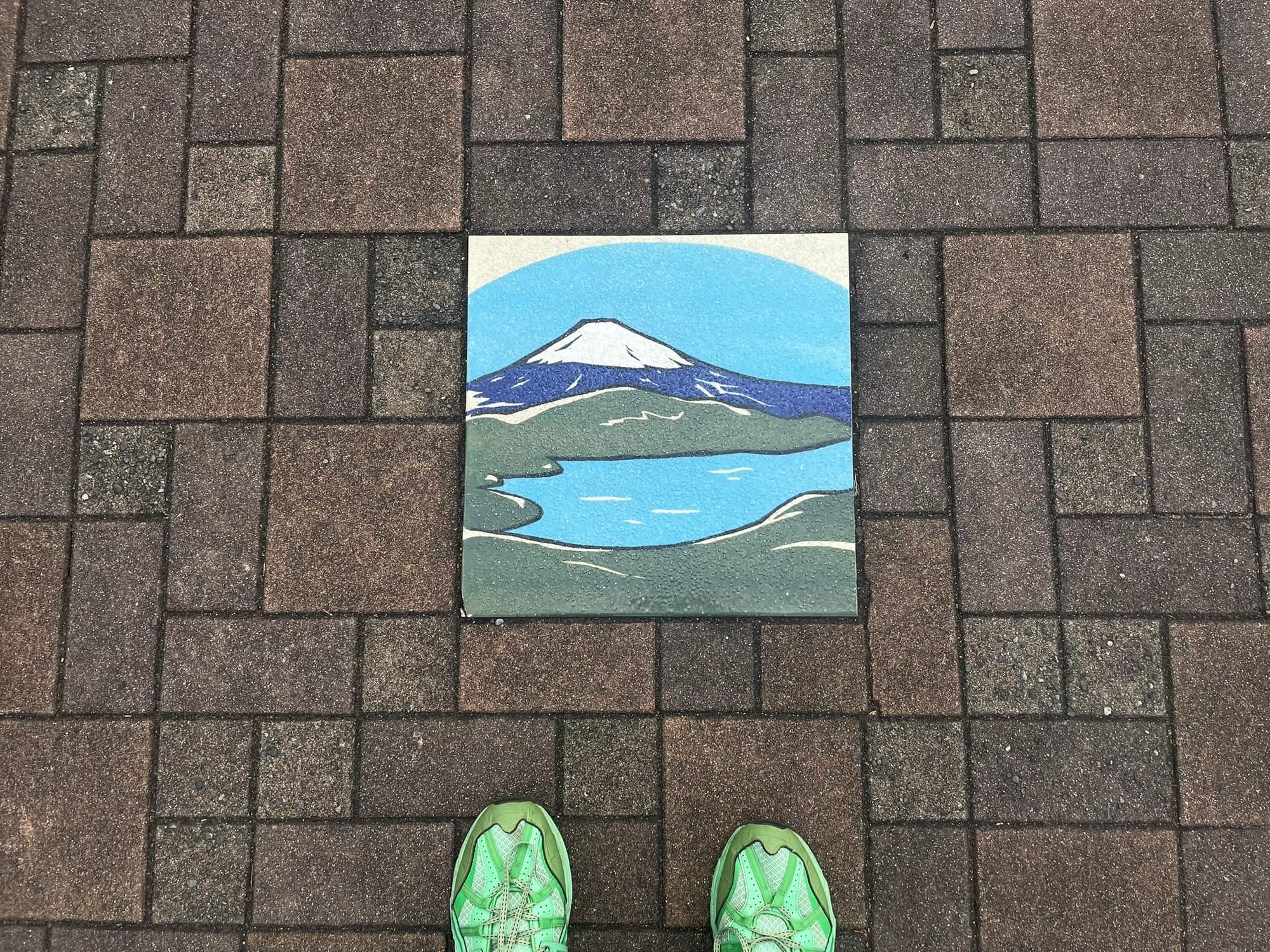
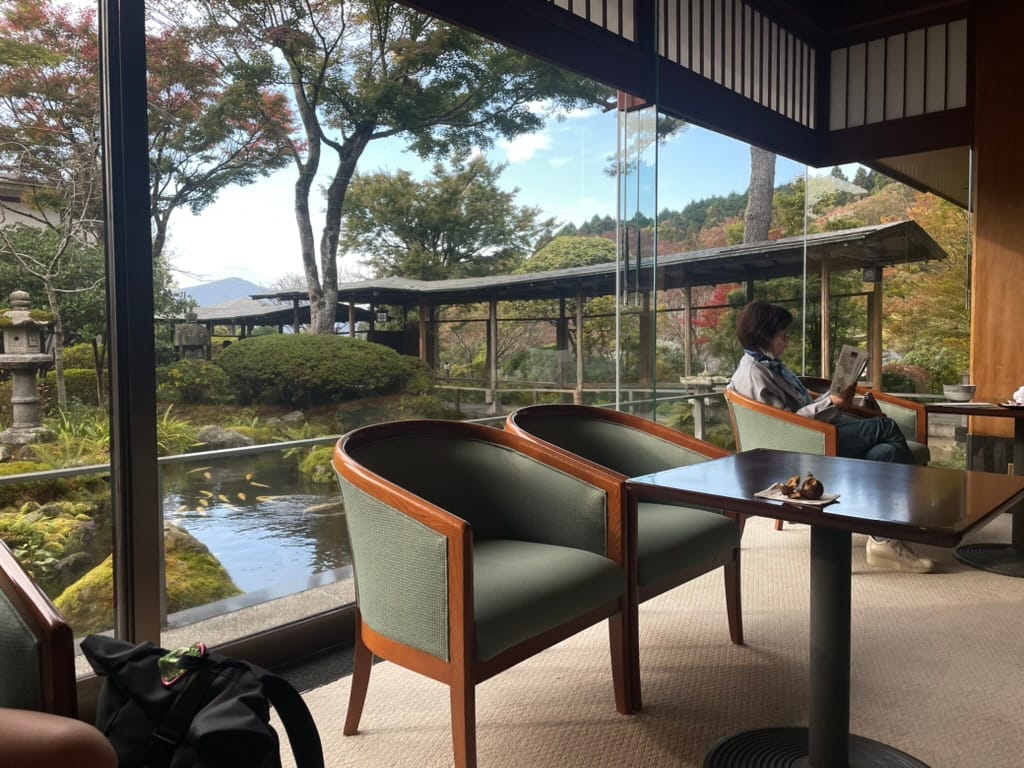
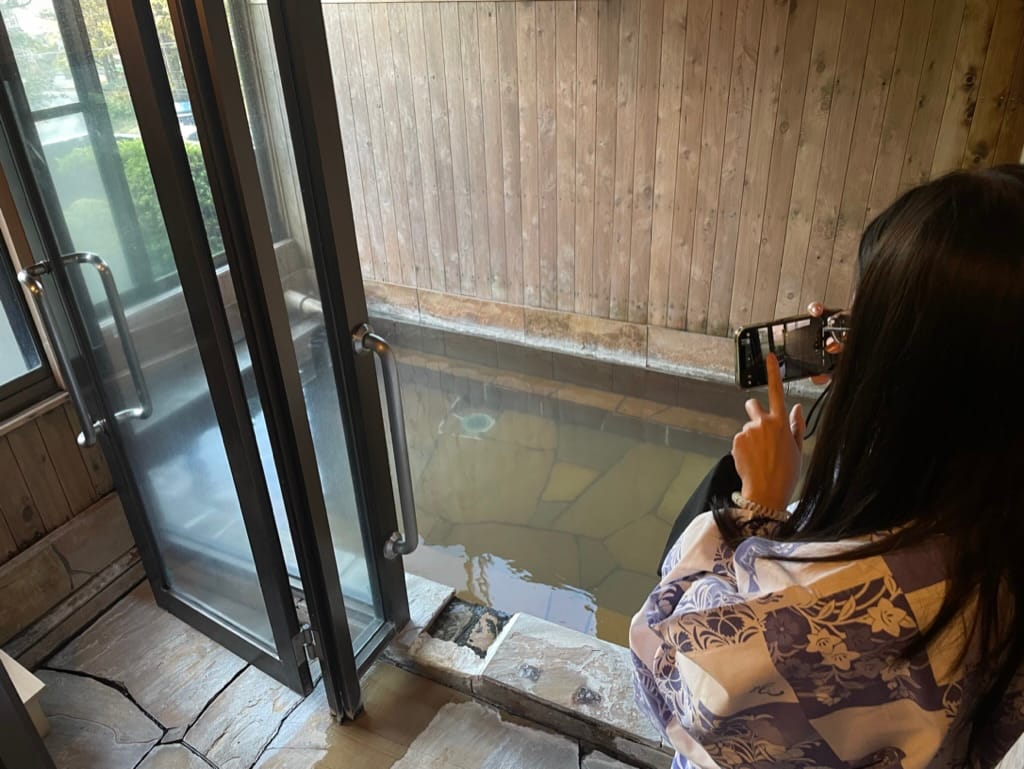
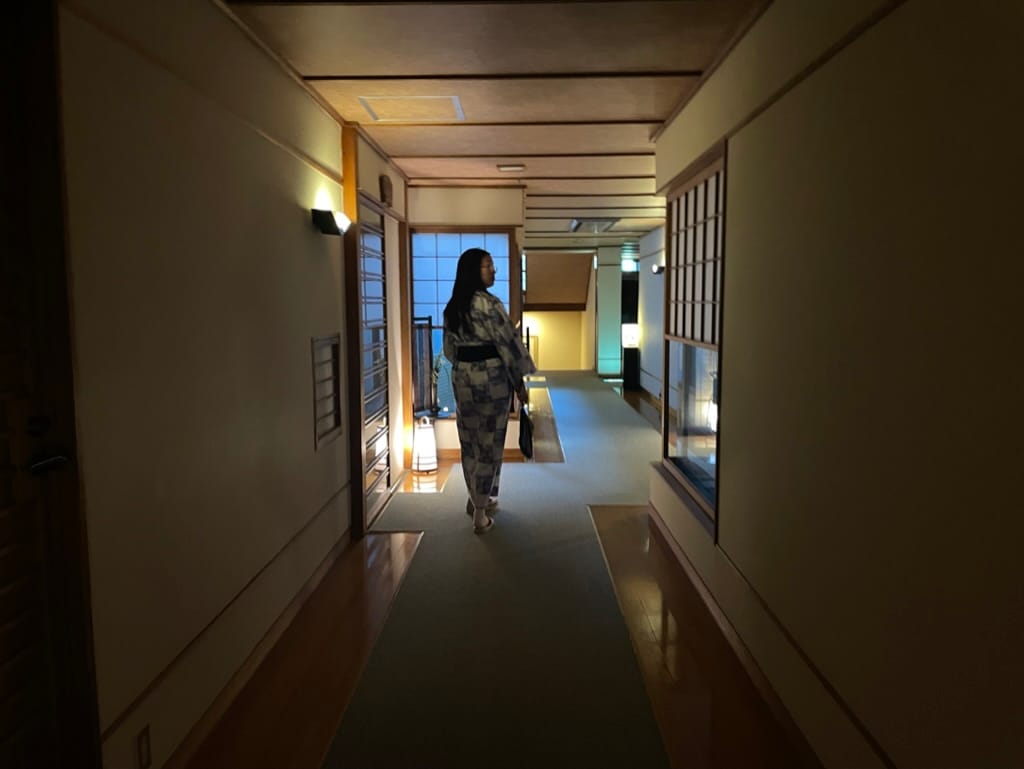
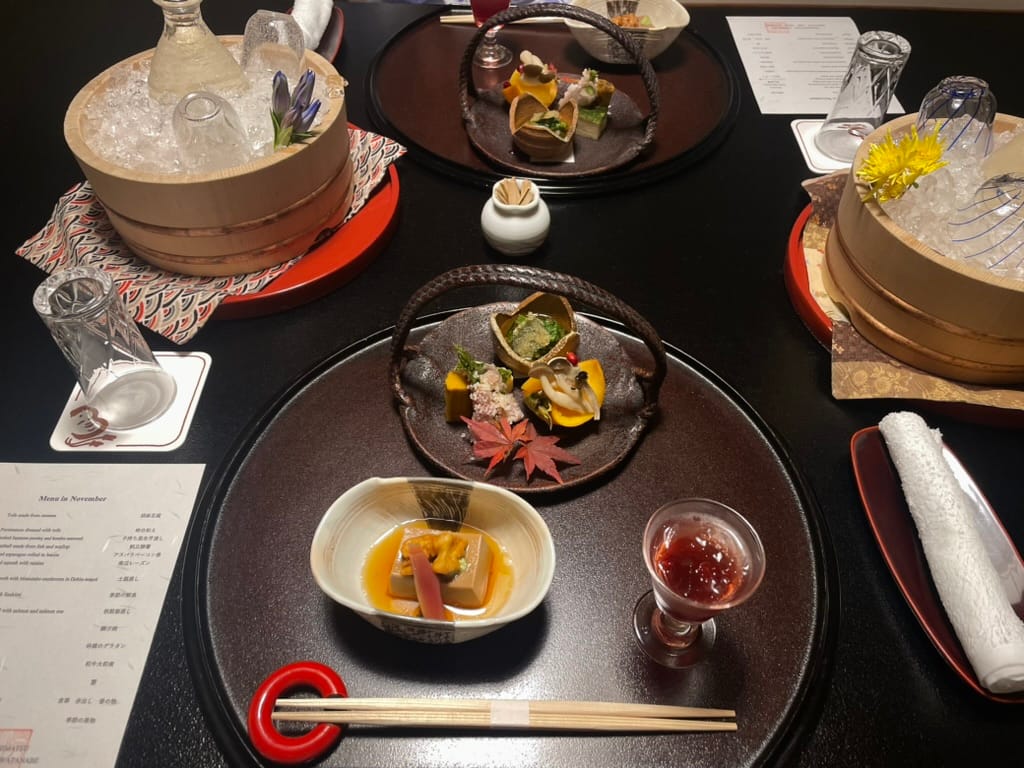
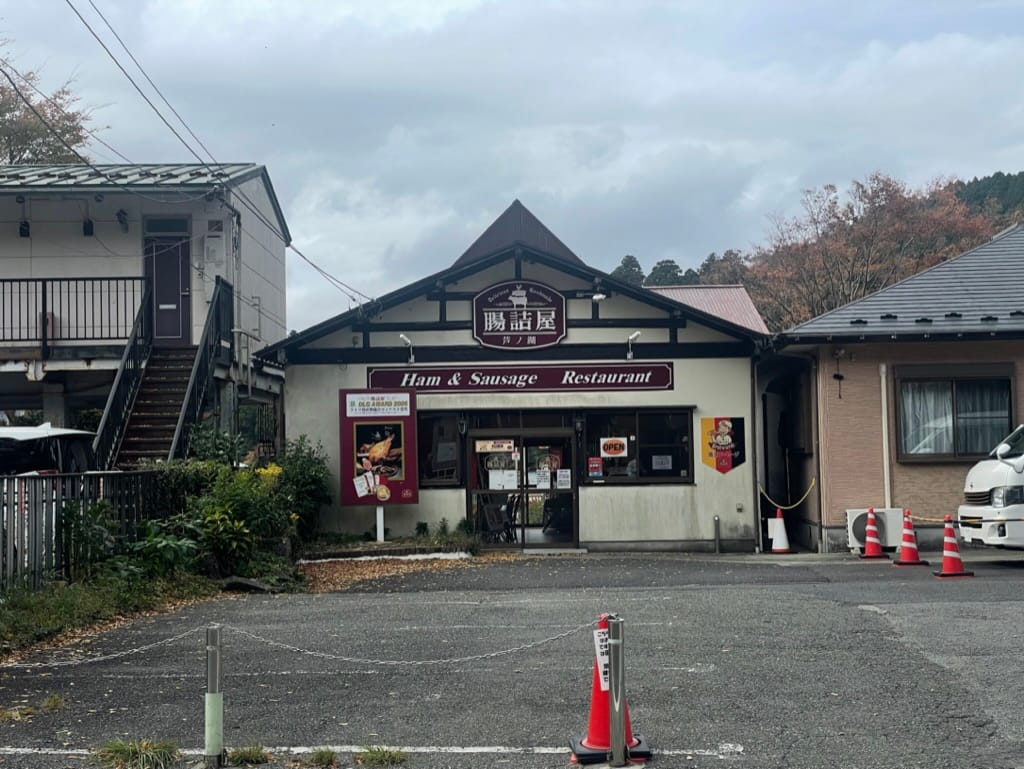
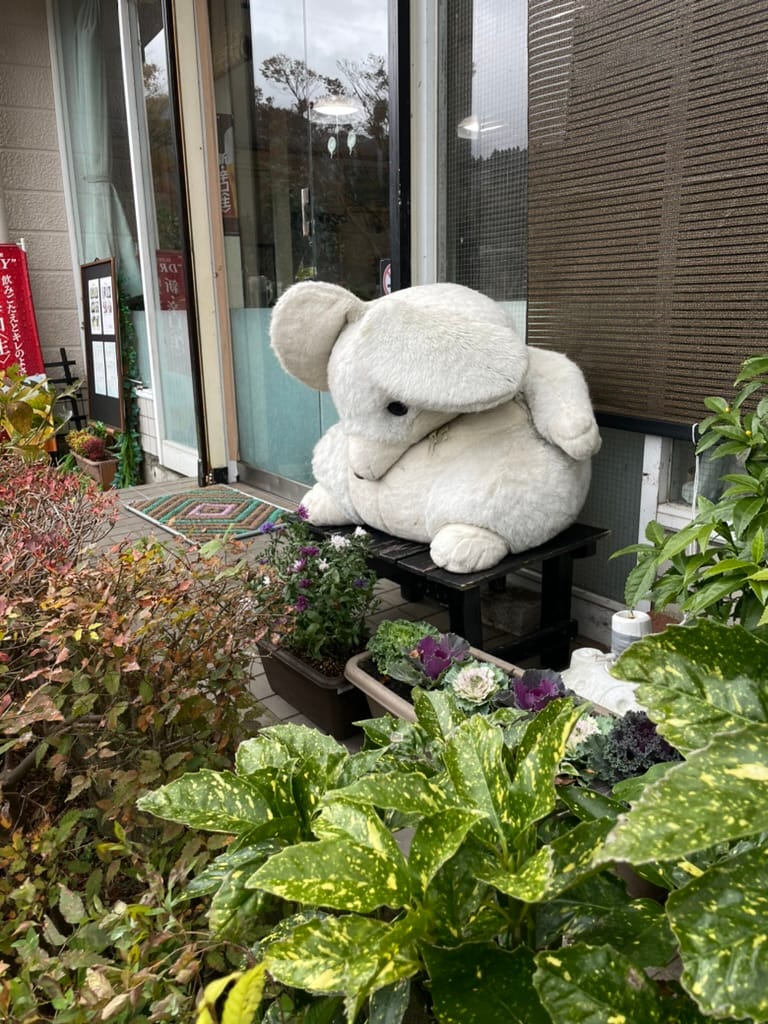
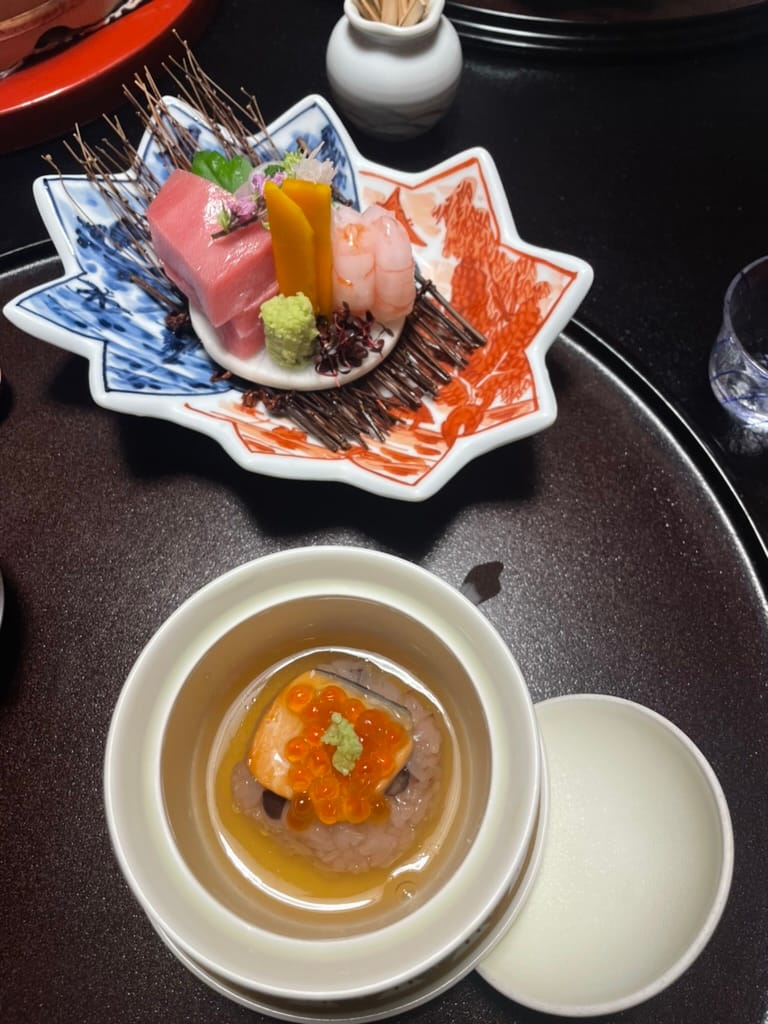
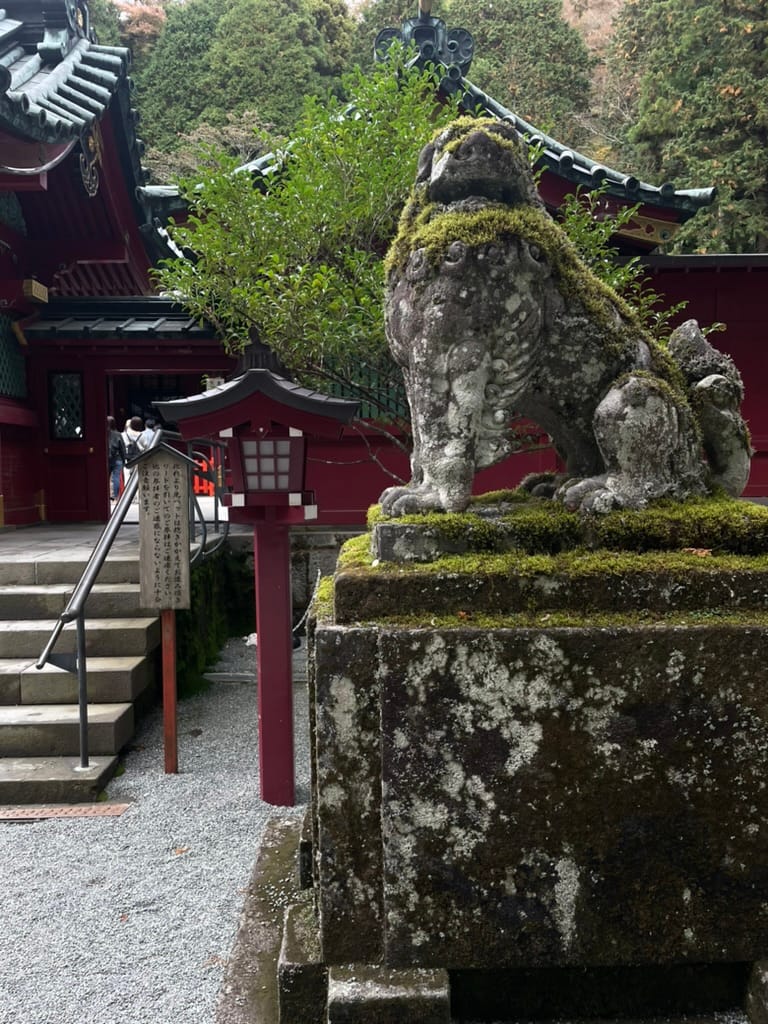
1. Beautiful tile | 2. Waiting area in our hotel | 3. Access to a private Onsen | 4. Wandering around in traditional drapes | 5. Dinner service at the hotel room | 6. Ham & Sausage restaurant in the village... sure, why not eat Ham & Sausage when you literally have world-class food around every corner? | 7. A fatty mouse-like mascot | 8. More food | 9. Dragon-lion-esque statues at a Shinto shrine
So, turns out that these private hotels specialize in breakfast and dinner service.
In Europe, you would get a piece of toast with some ham & cheese and some jam if you're lucky. Clowns 🤡
In Japan, they bring you a full 11-course meal of the finest chow imaginable. I mean, check out this menu 👇
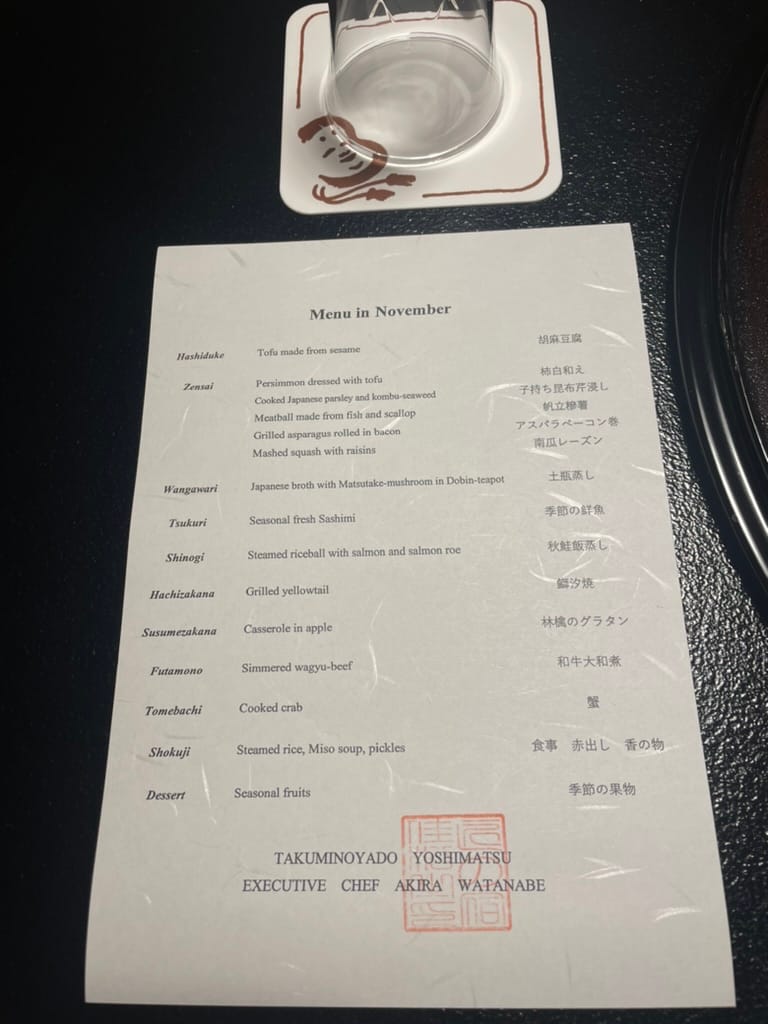
How does it work you ask?
You wear traditional clothes and sit at the table in your room. Japanese people sit cross-legged on the floor. Foreigners get chairs and the tables get propped up. Everyone who's sitting 9+ hours at a desk and has limited hip mobility is elated about this special setup.
Then, a service employee brings every course one after another.
You feel like they bring a Michelin-star restaurant to your living room while you're wearing pajamas.
Wild.
Japanese Art in Hakone
Another thing I wanted to share about Hakone is their national art museum.
It has a nice selection, is well curated, and features a killer view over the lake.
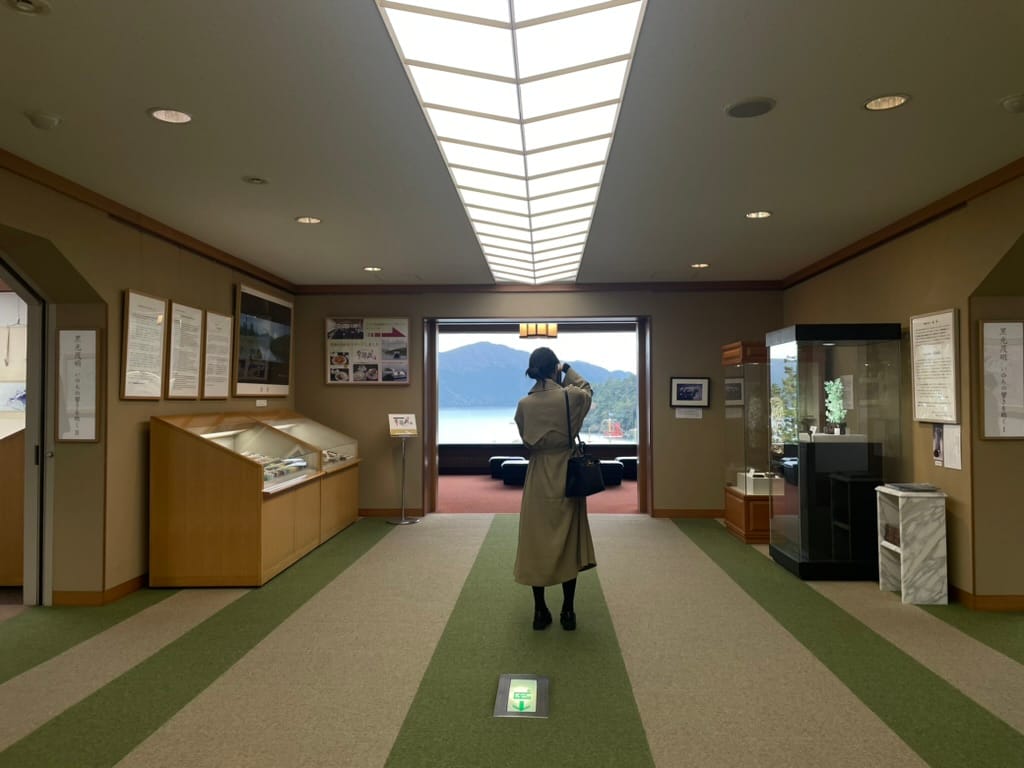
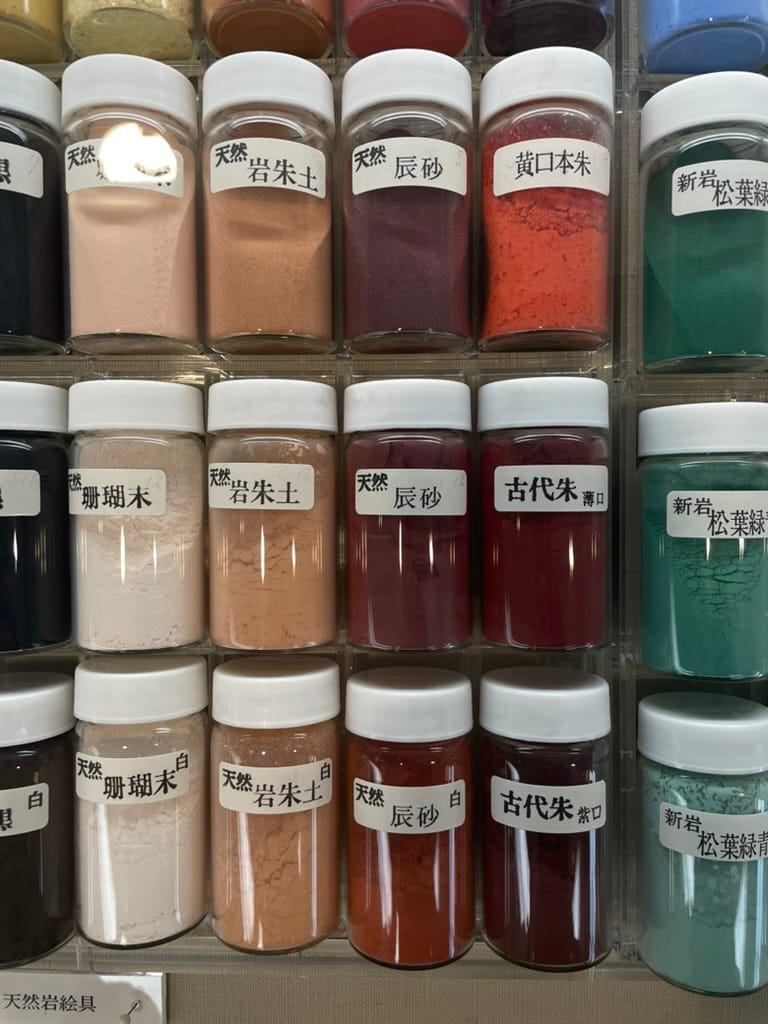
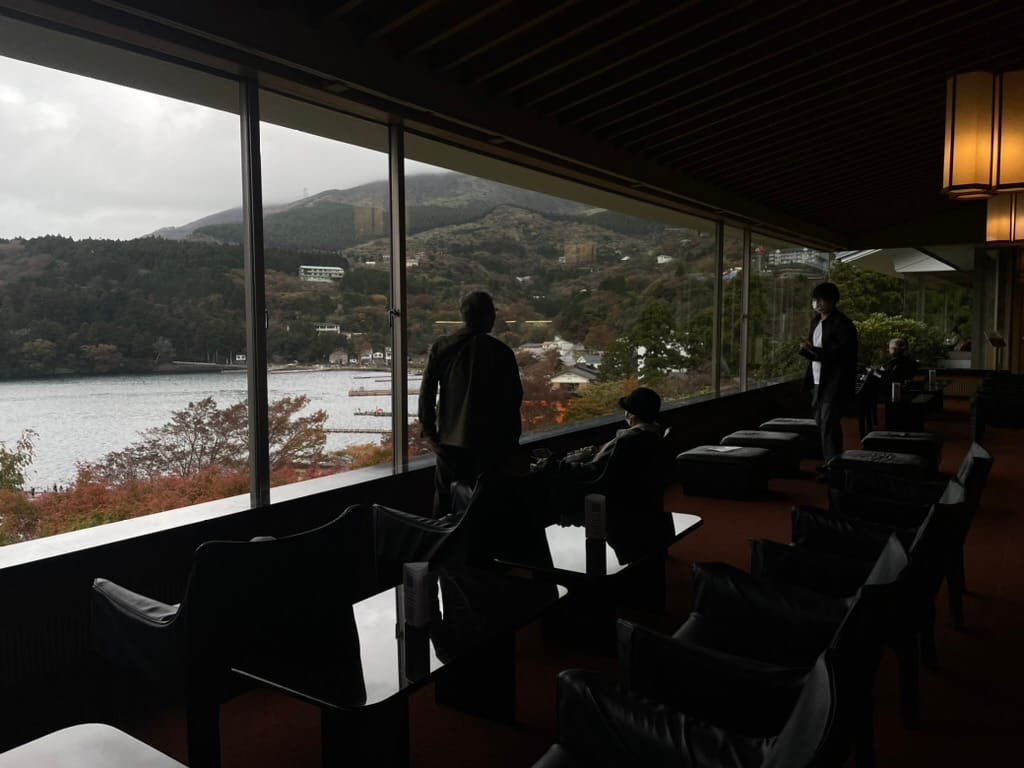
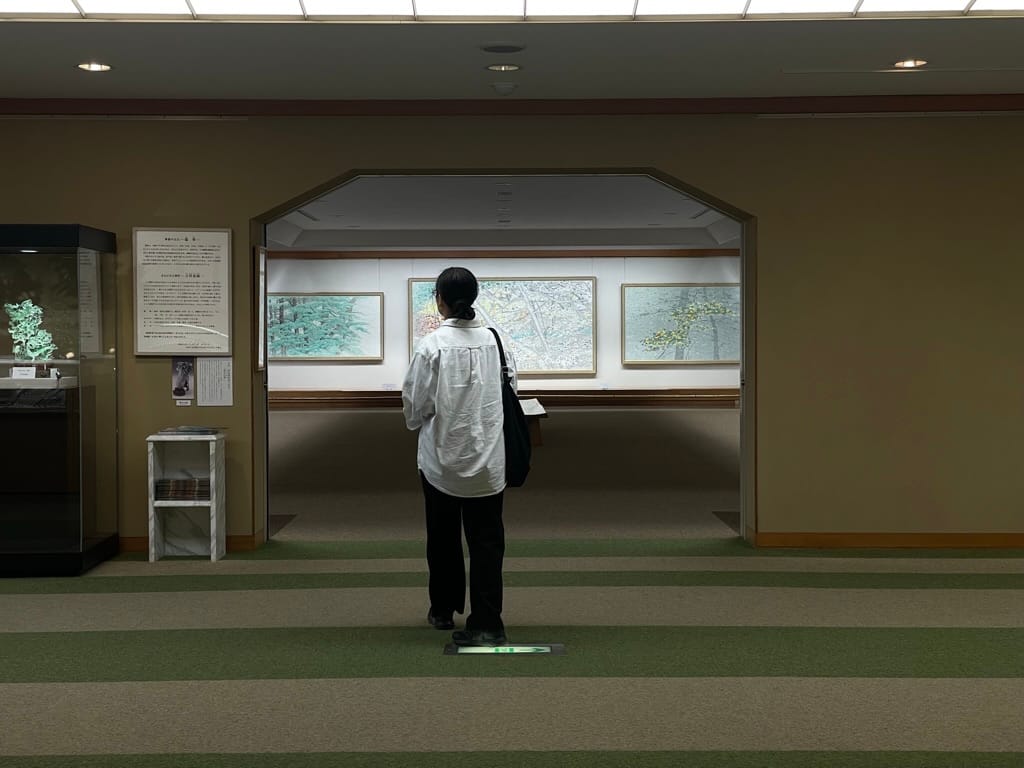
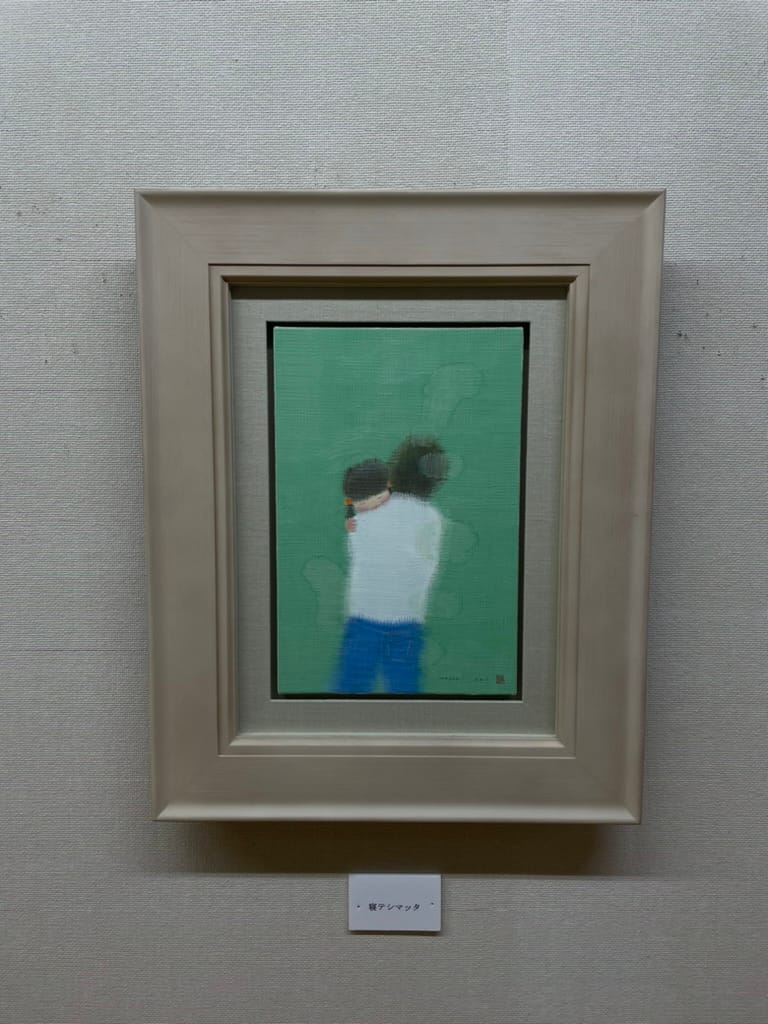
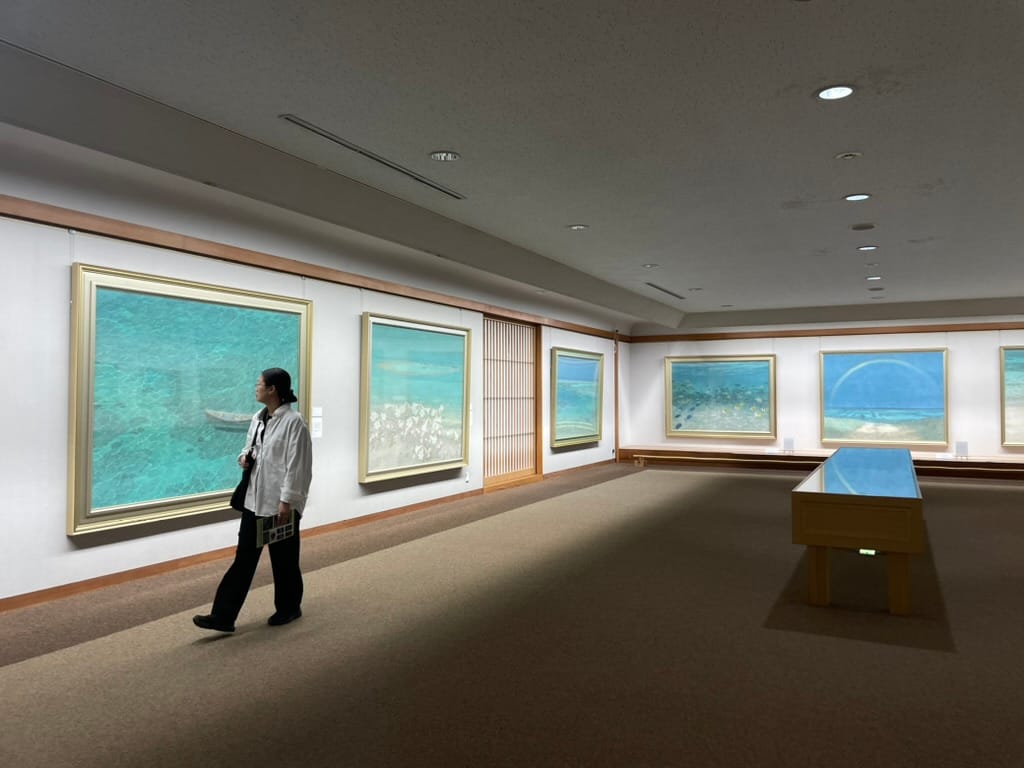
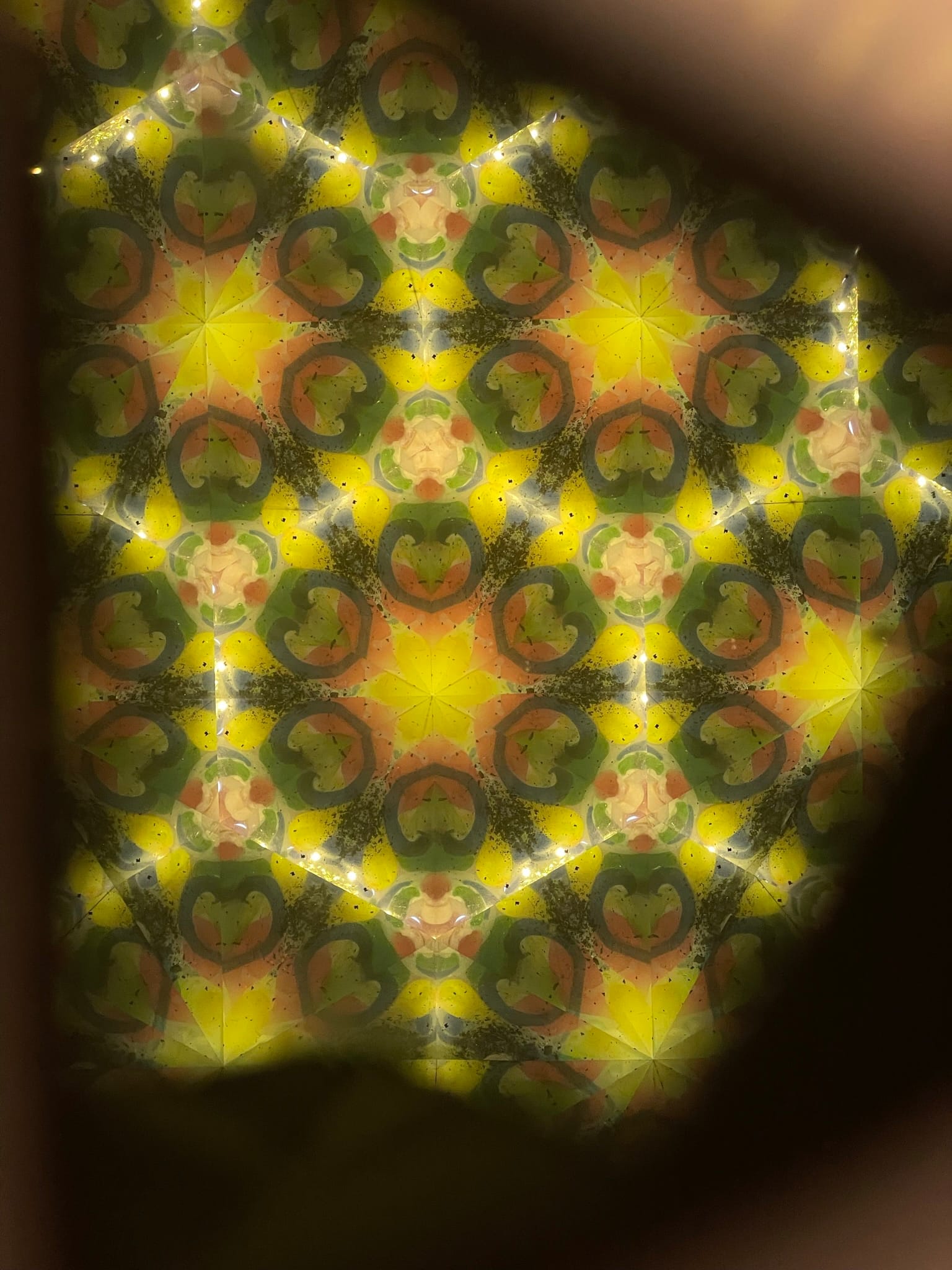
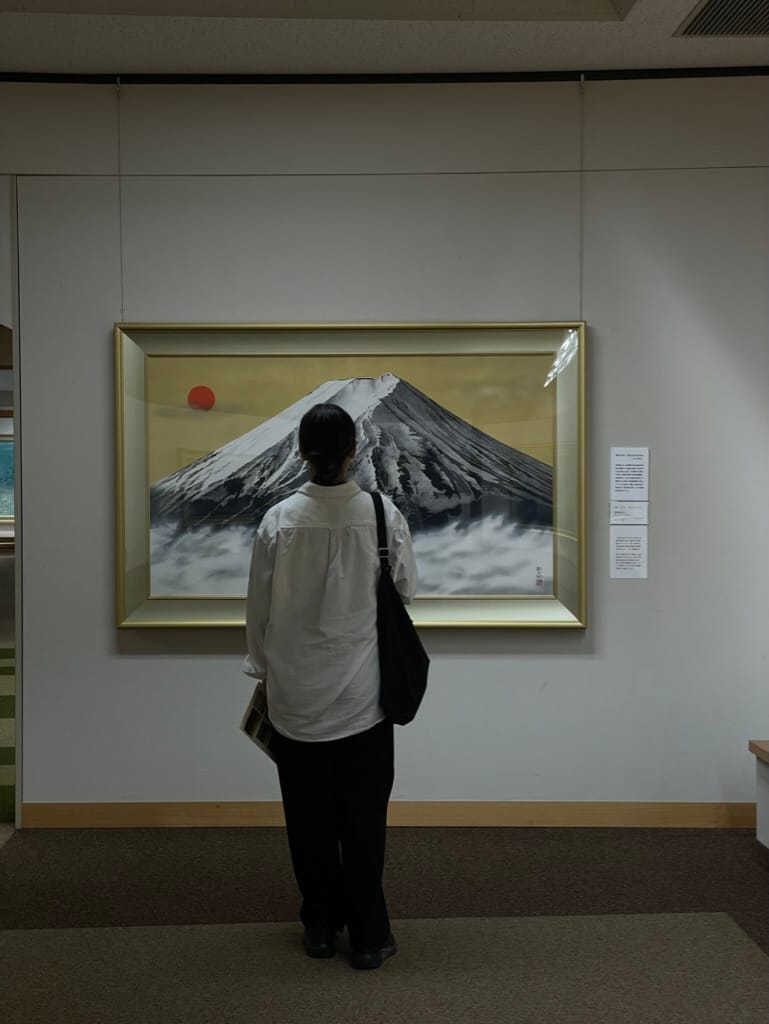
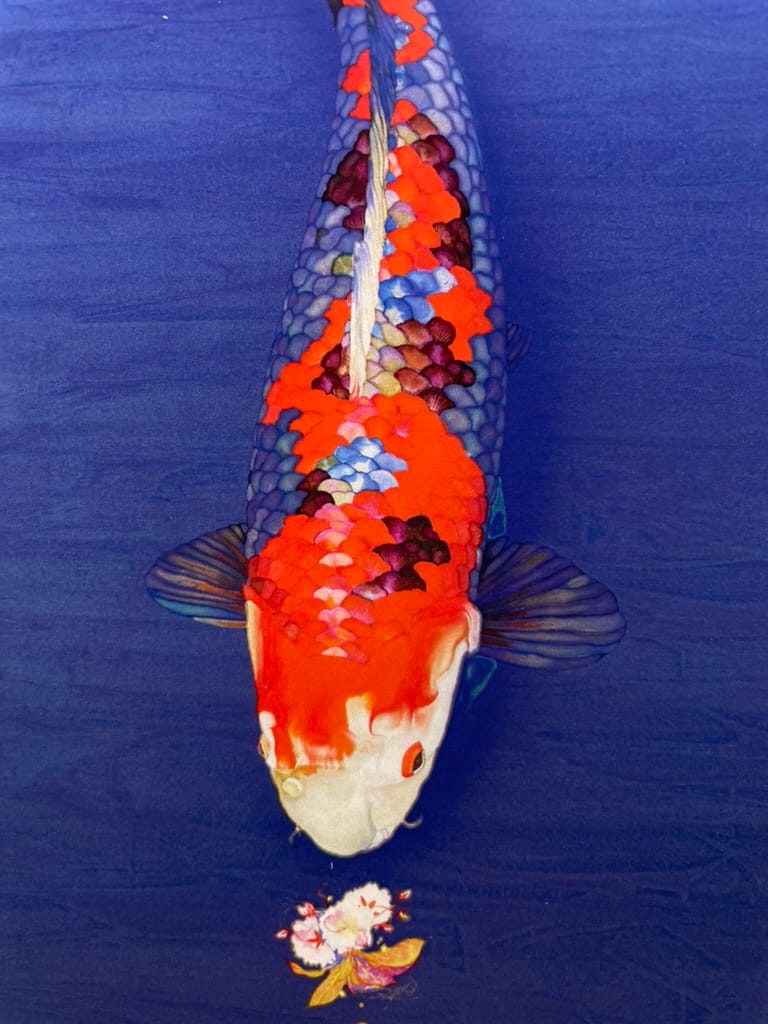
Impressions from the museum.
Intermission
Cities Have Bling-Bling
All the places are decked out in neon.
The Dotonburi are in Osaka feels like Vegas & Amsterdam had a baby.
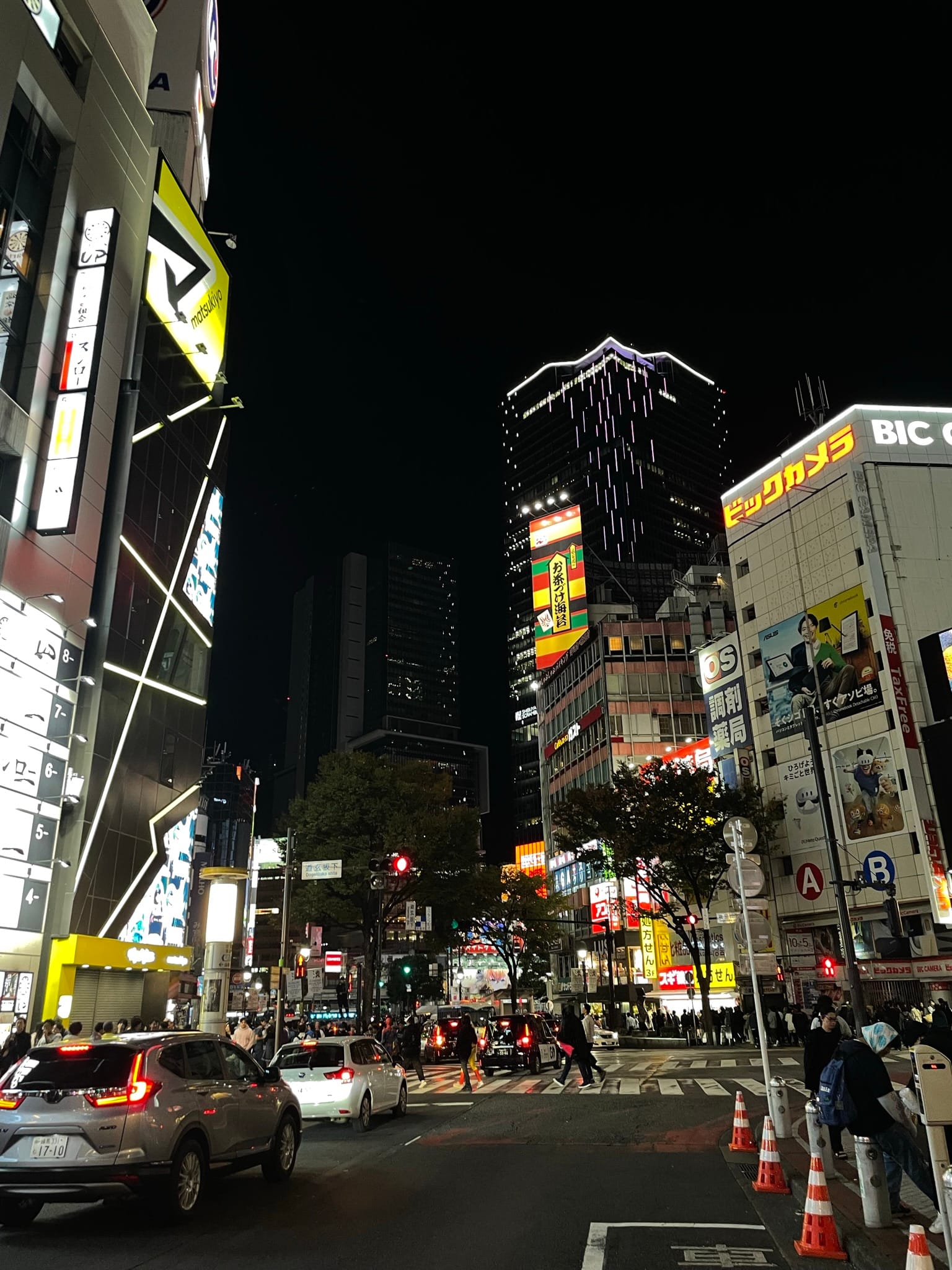
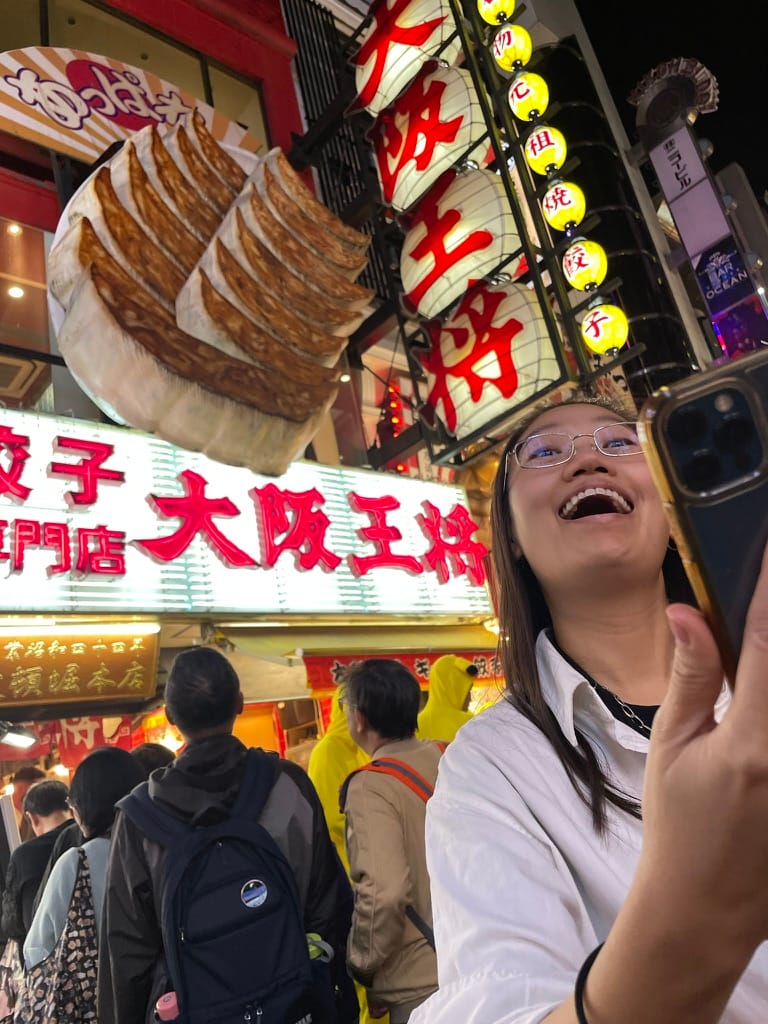
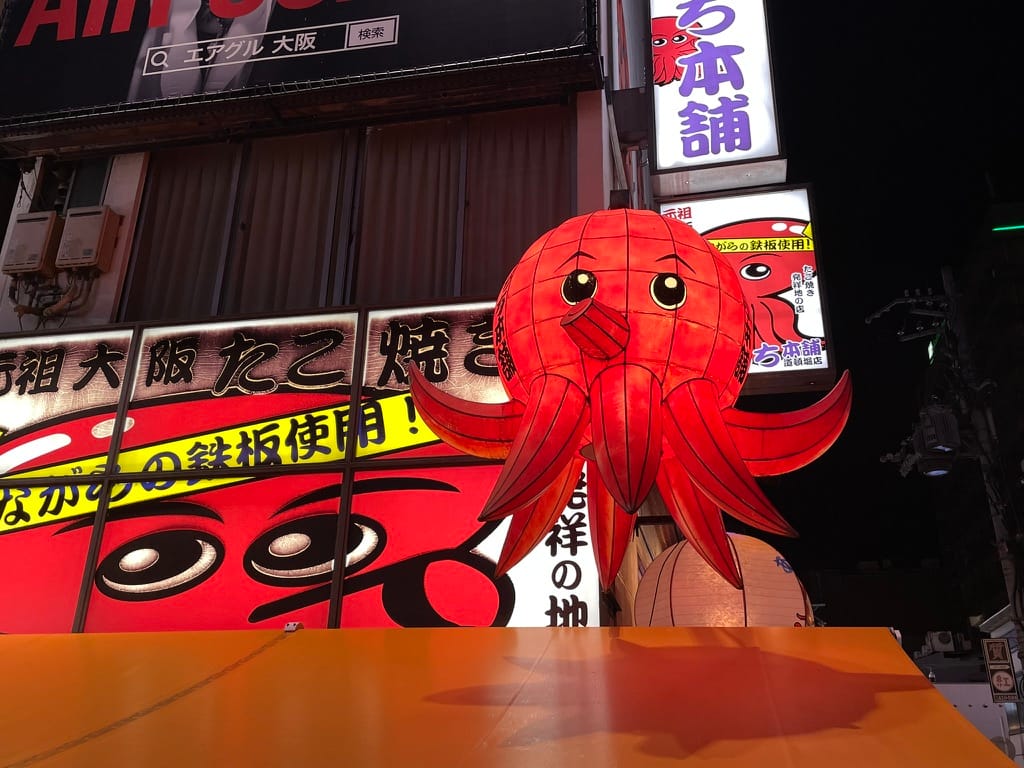
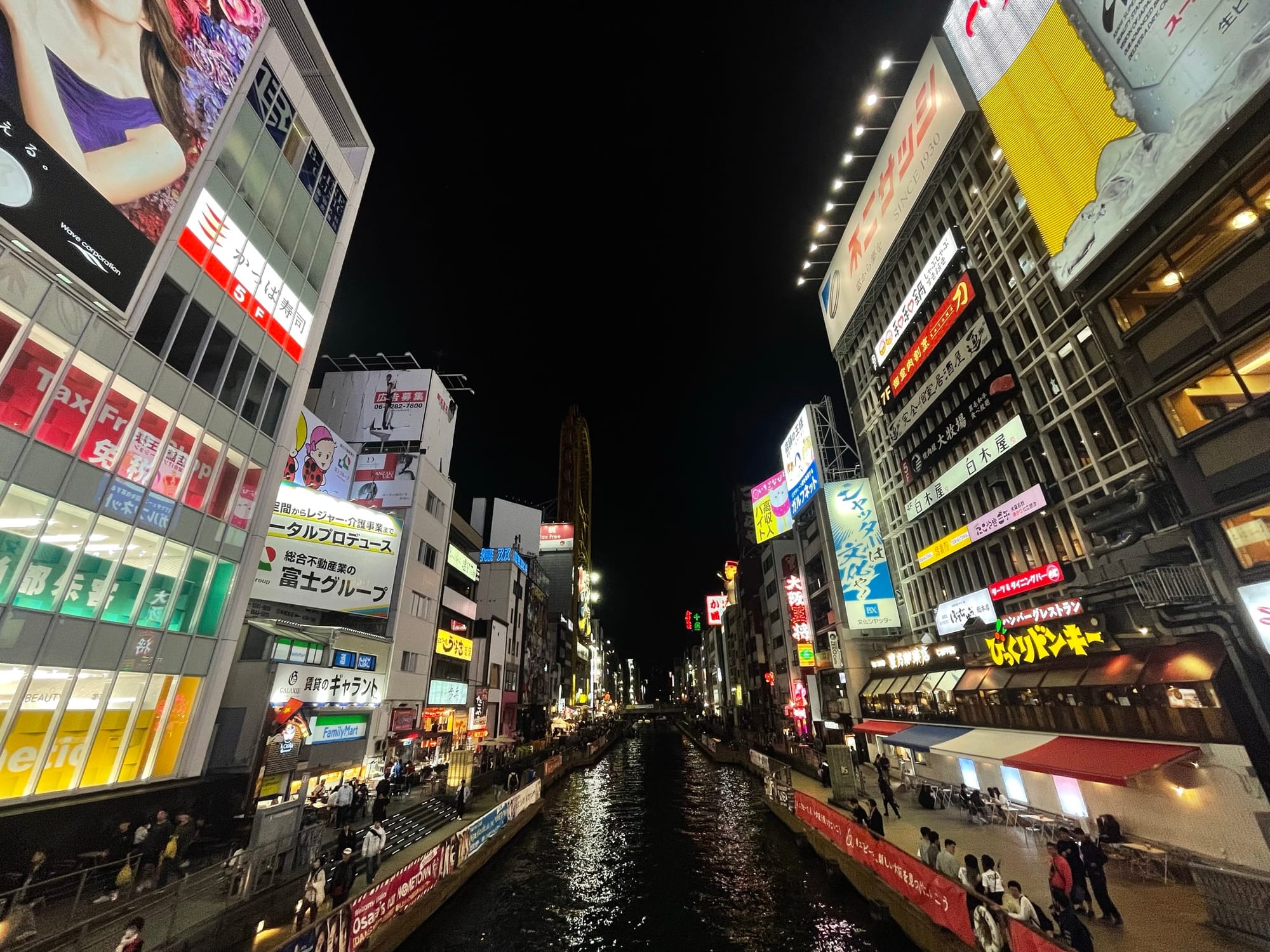
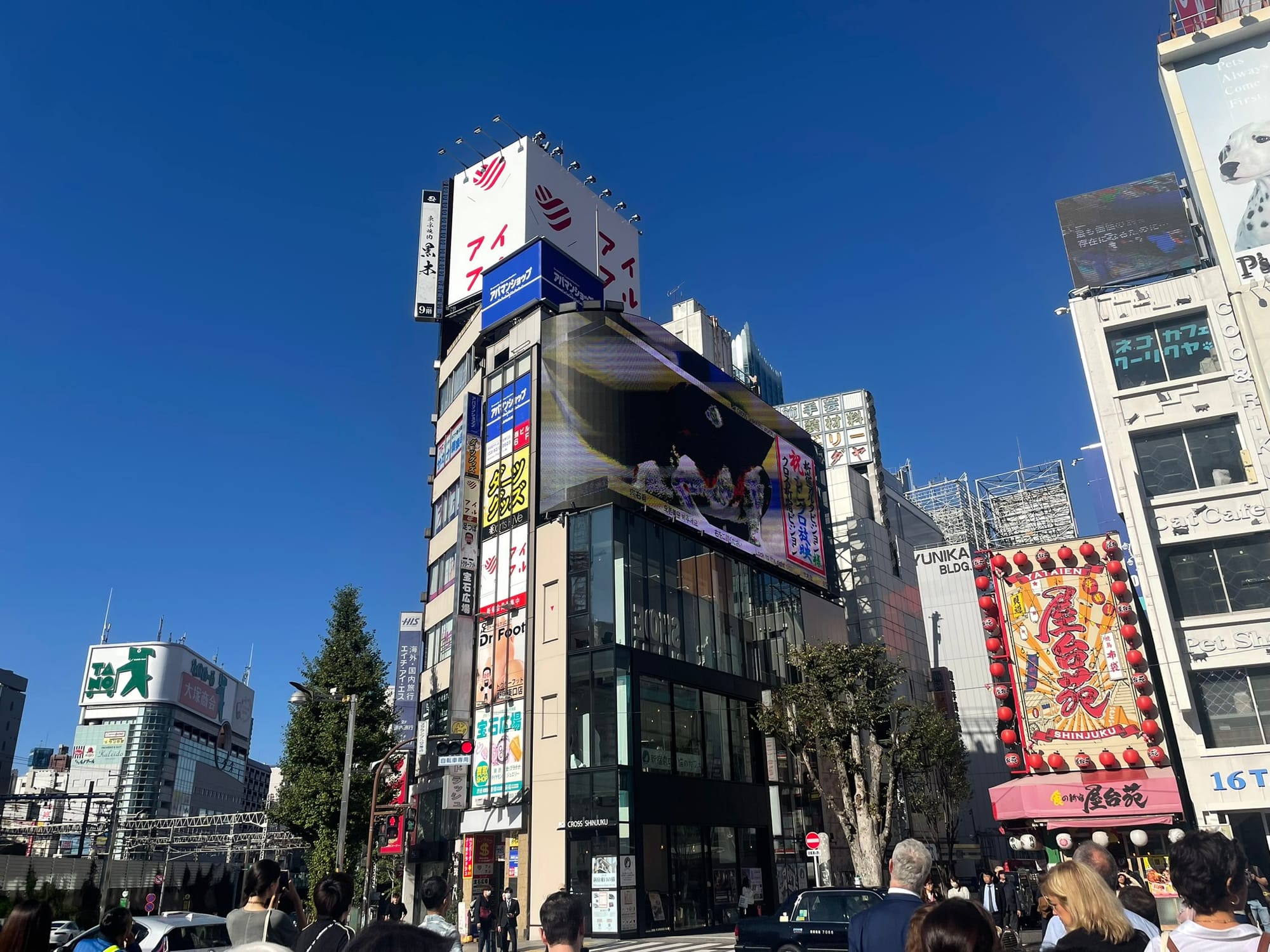
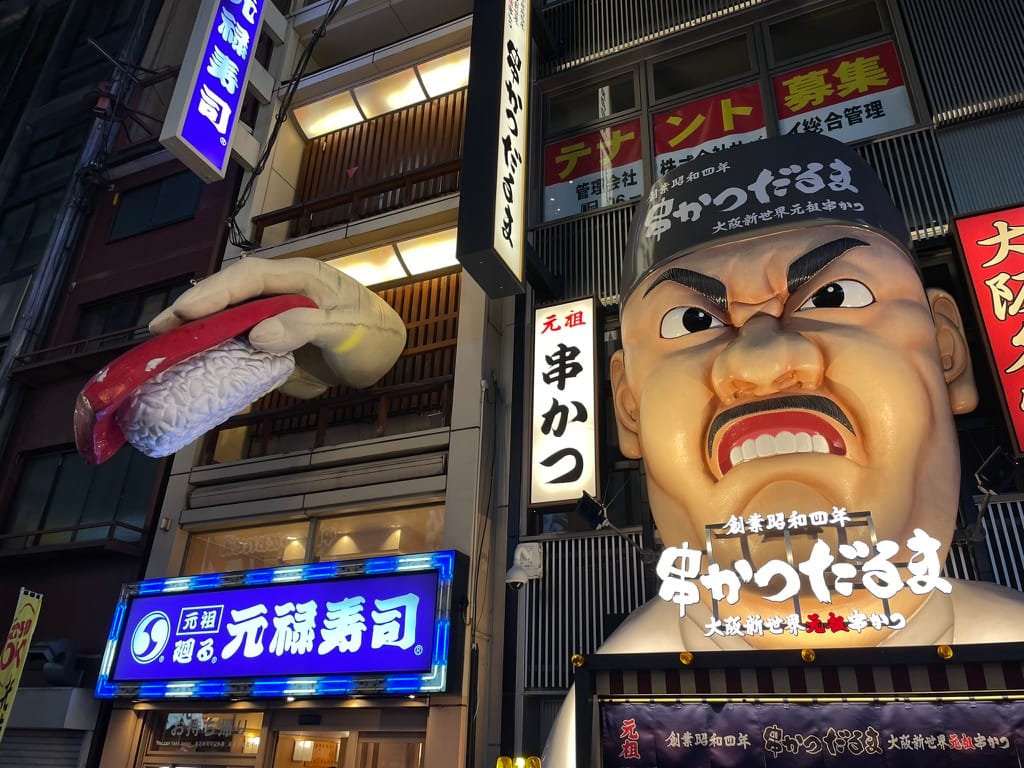
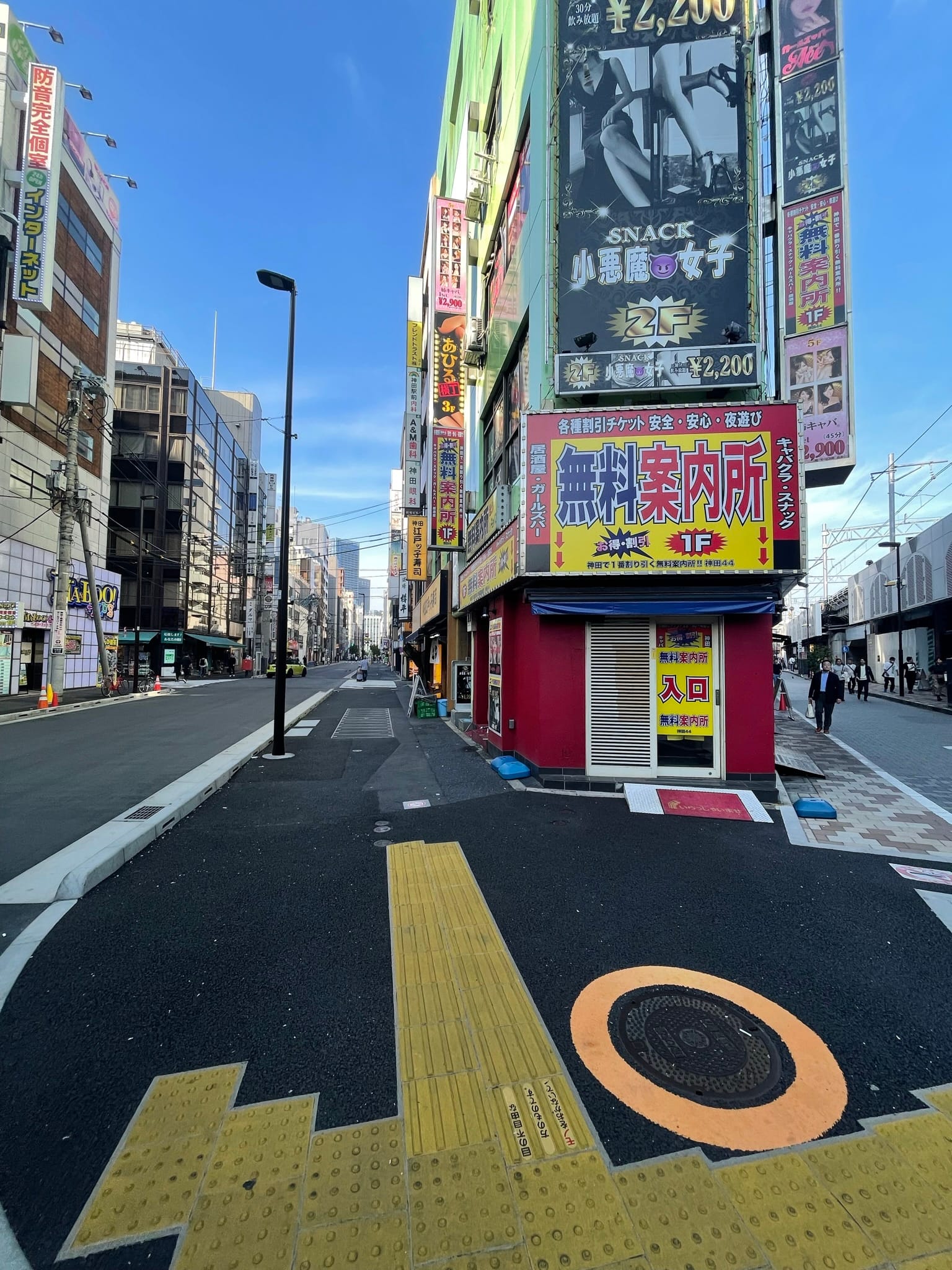
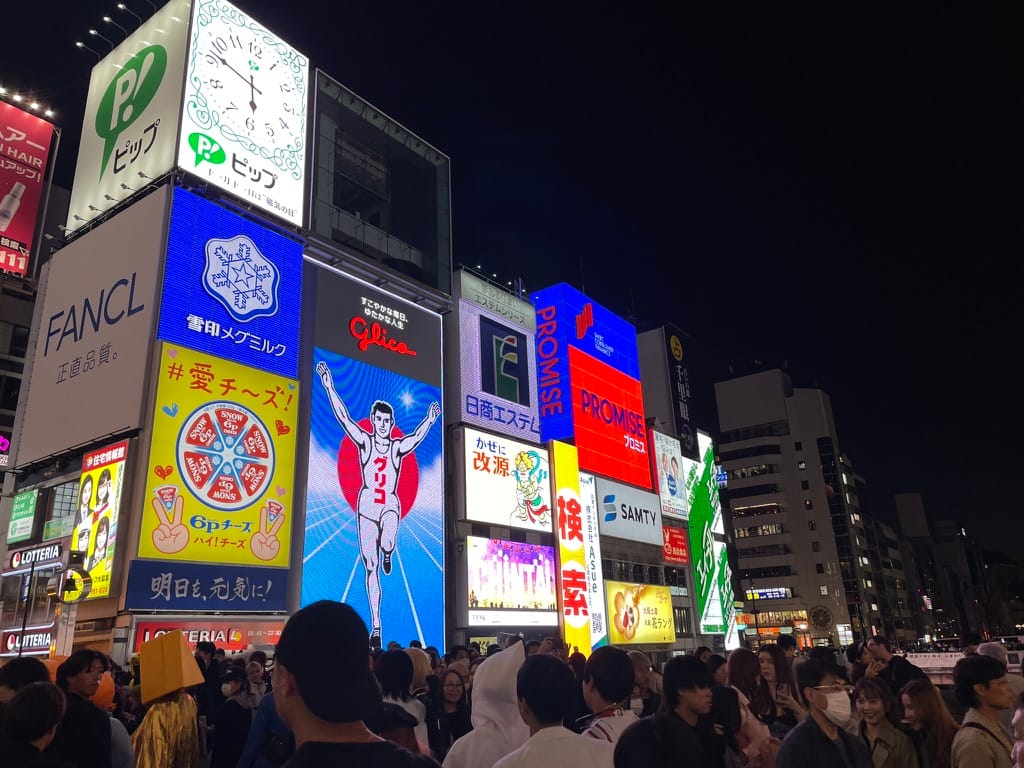
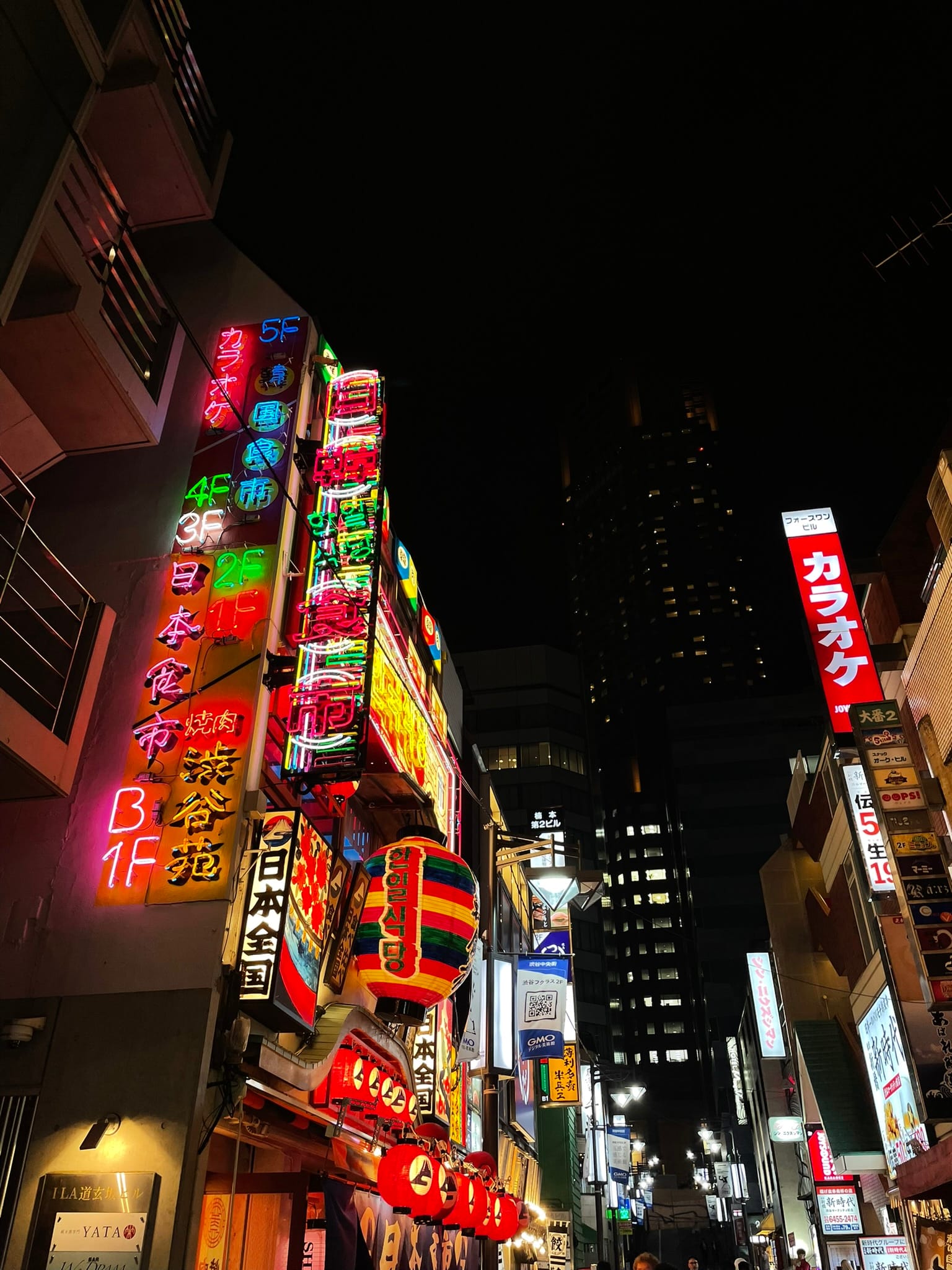
1. Shibuya | 2. Dotonburi | 3. Takoyaki squid in Dotonburi | 4. Canal in Dotonburi | 5. One of the smaller intersections of Shinjuku | 6. Nigiri fiend in Dotonburi | 7. Random street in Tokyo | 8. Dotonburi central | 9. Shinjuku by night
Convenience Stores, Fast Food, and Other Peculiarities
- There are ~15,000 7-Eleven stores in Japan. It's one of the largest convenience store chains in the country. Originally from the US, the Japanese off-shoot is its own stand-alone entity by now.
- There are 5.5 million vending machines in public. Heating and cooling stuff 24/7.
- Stand bars are a thing. Not only for drinks but also for food. You eat at a restaurant but standing.
- Traditionally, wasabi is made by grating the wasabi root on a wooden panel covered with stingray skin. What the hell.
- 🐡 The only thing my mom asked me was to avoid eating puffer fish. // It so happened, that we were sitting in an Omakase restaurant - those places that only serve 5 people per night, charge a fixed price, and the chef just gives you food and you have no choice in it. ... You guessed it, at some point we get Fugu - in English "puffer fish". The guy next to me asked the chef "Isn't this dangerous?" ... the chef only laughed, we ate it, and, knock on wood, the neuro toxins still haven't hit my dome.
- People told me that the 7-Eleven Egg Sandwich was unbelievable. Call me a gangster, I liked Family Mart's Teriyaki Chicken & Egg Sandwich better.
- Some of the flavors in the supermarkets are wild. "Wonder Taste" chips, anyone?
- Some of the brands have the coolest slogans. Like, Suntory's Boss coffee "Suntory Boss is the boss of them all since 1992." ... well, if they say so!
- The Japanese word "ikura" for caviar comes from the Russian word "ikra."
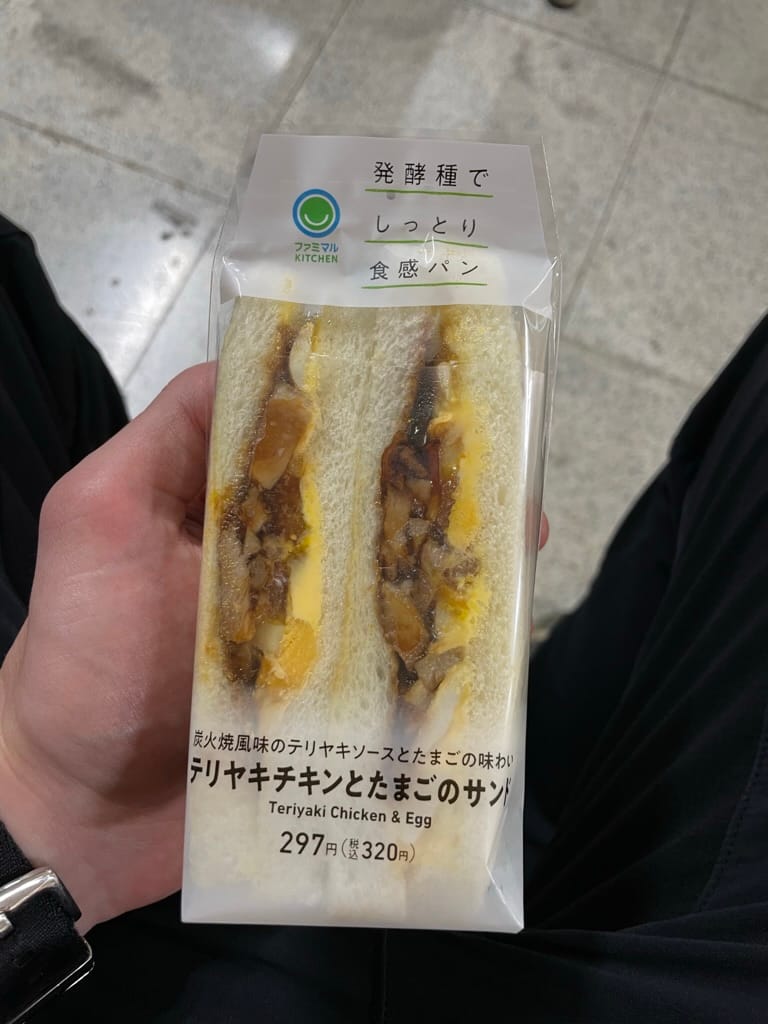
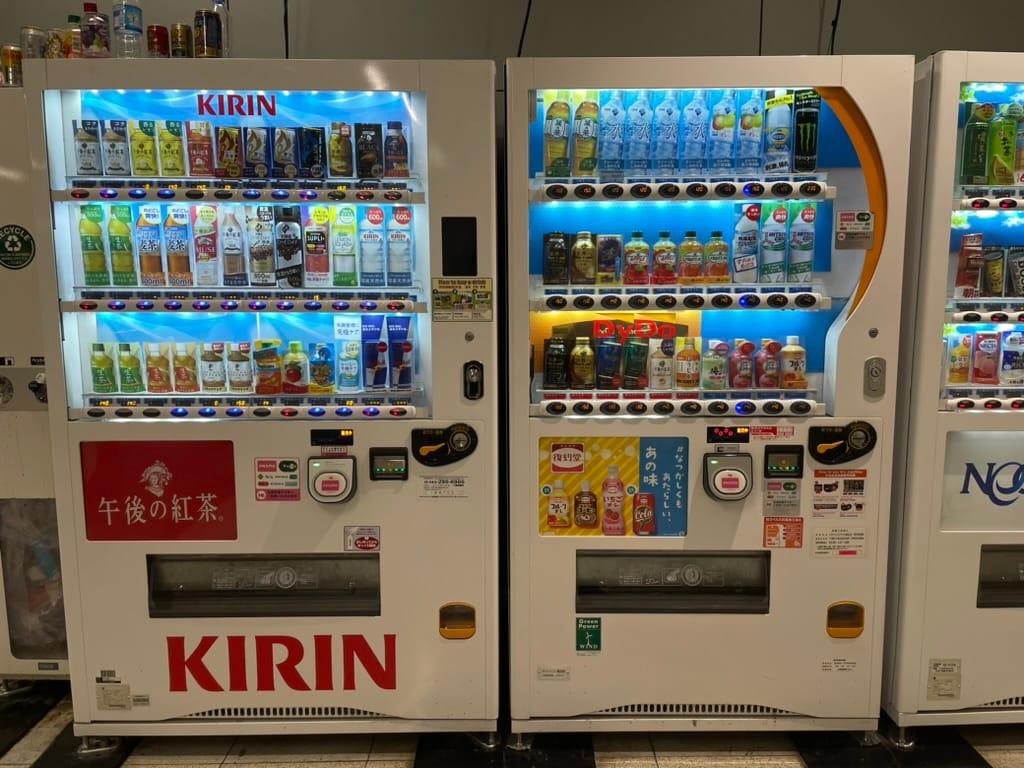
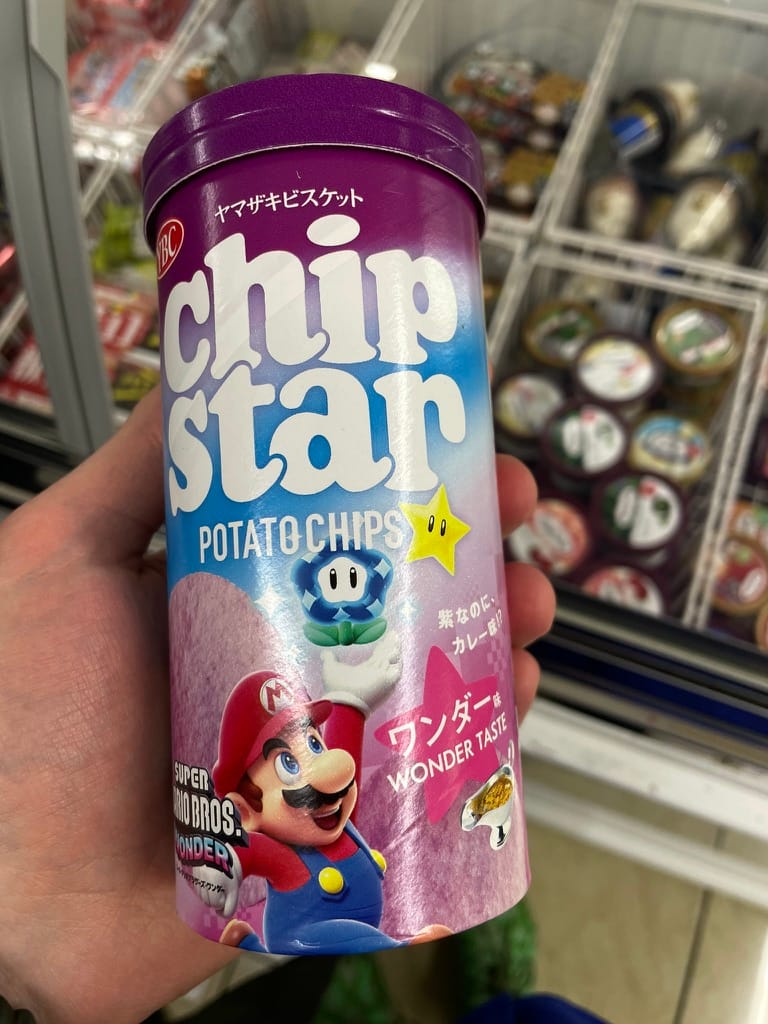
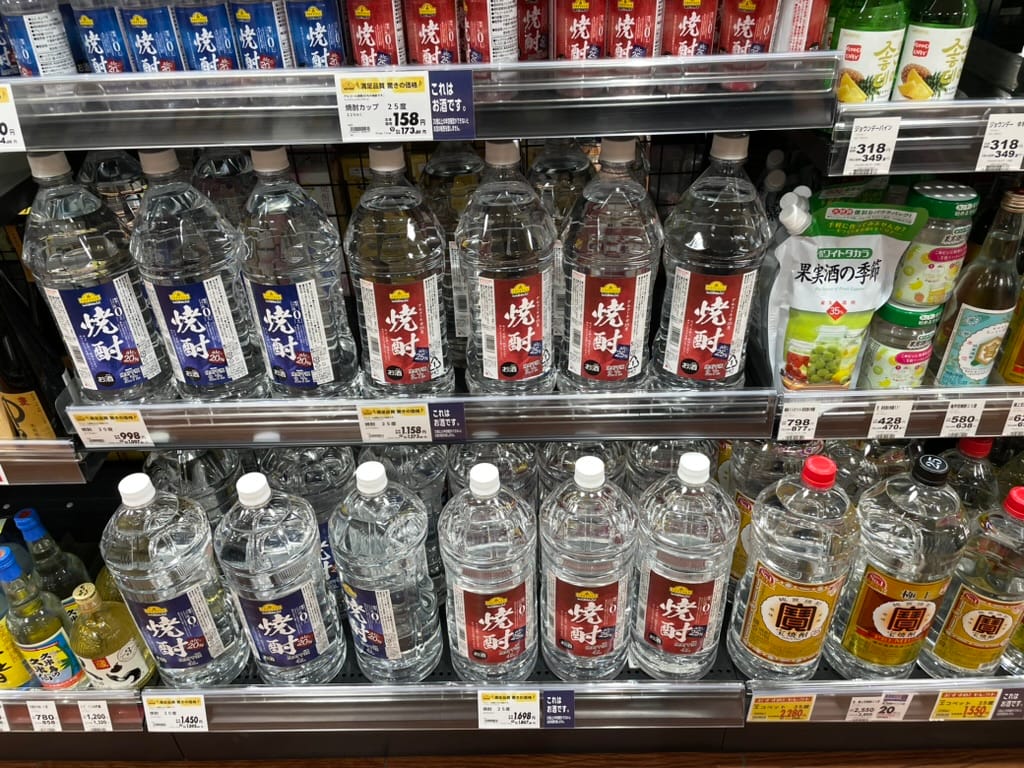
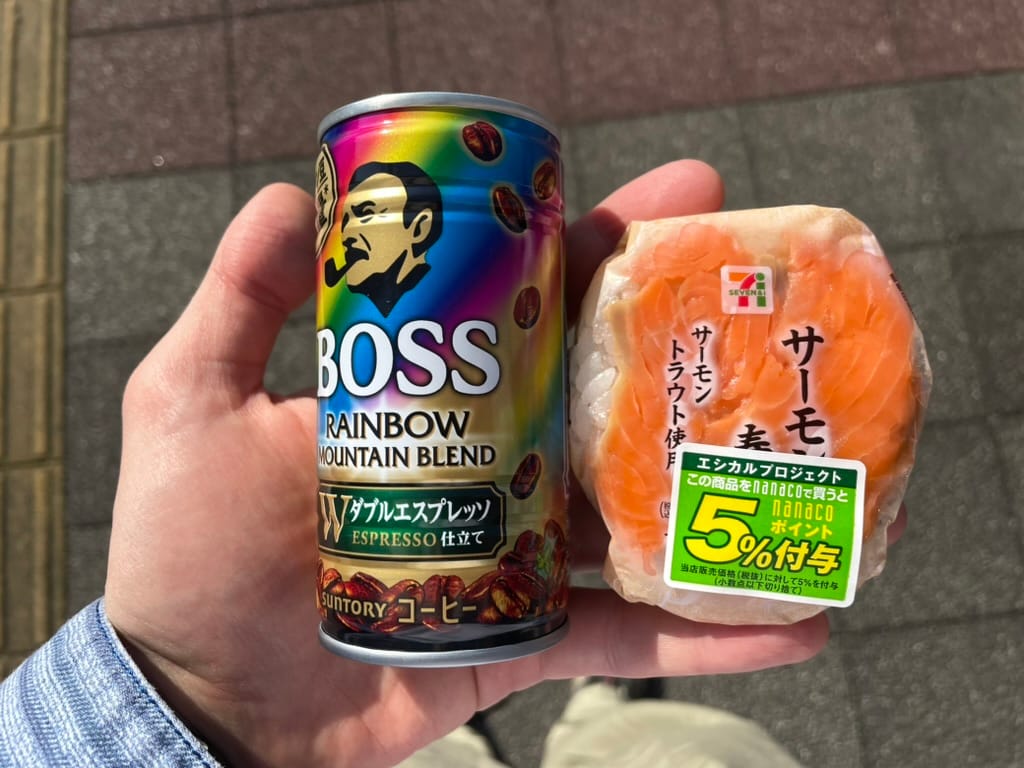
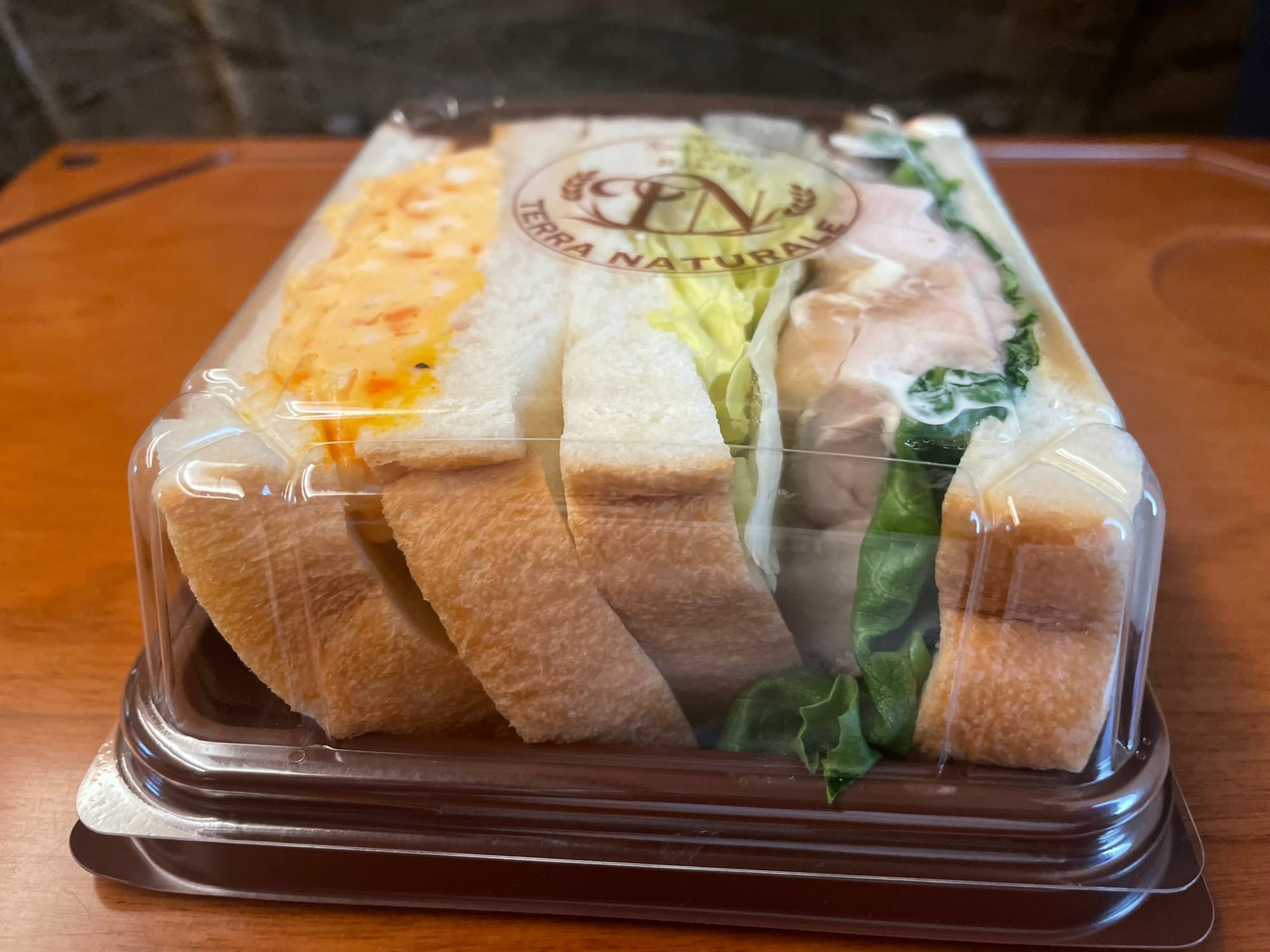
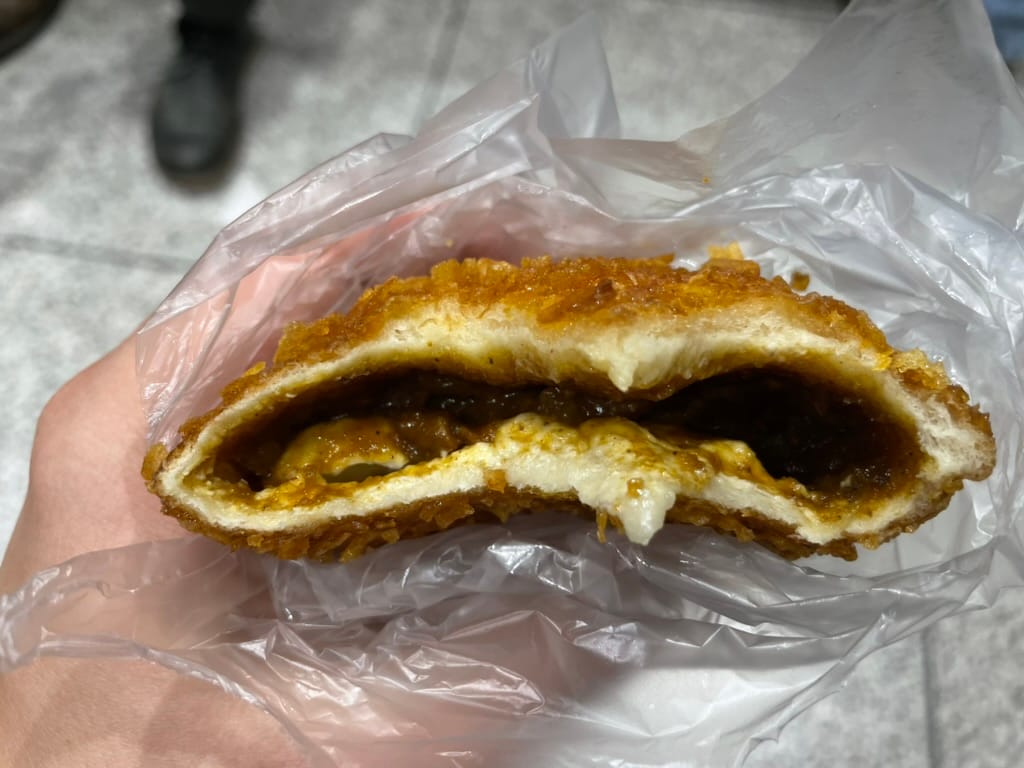
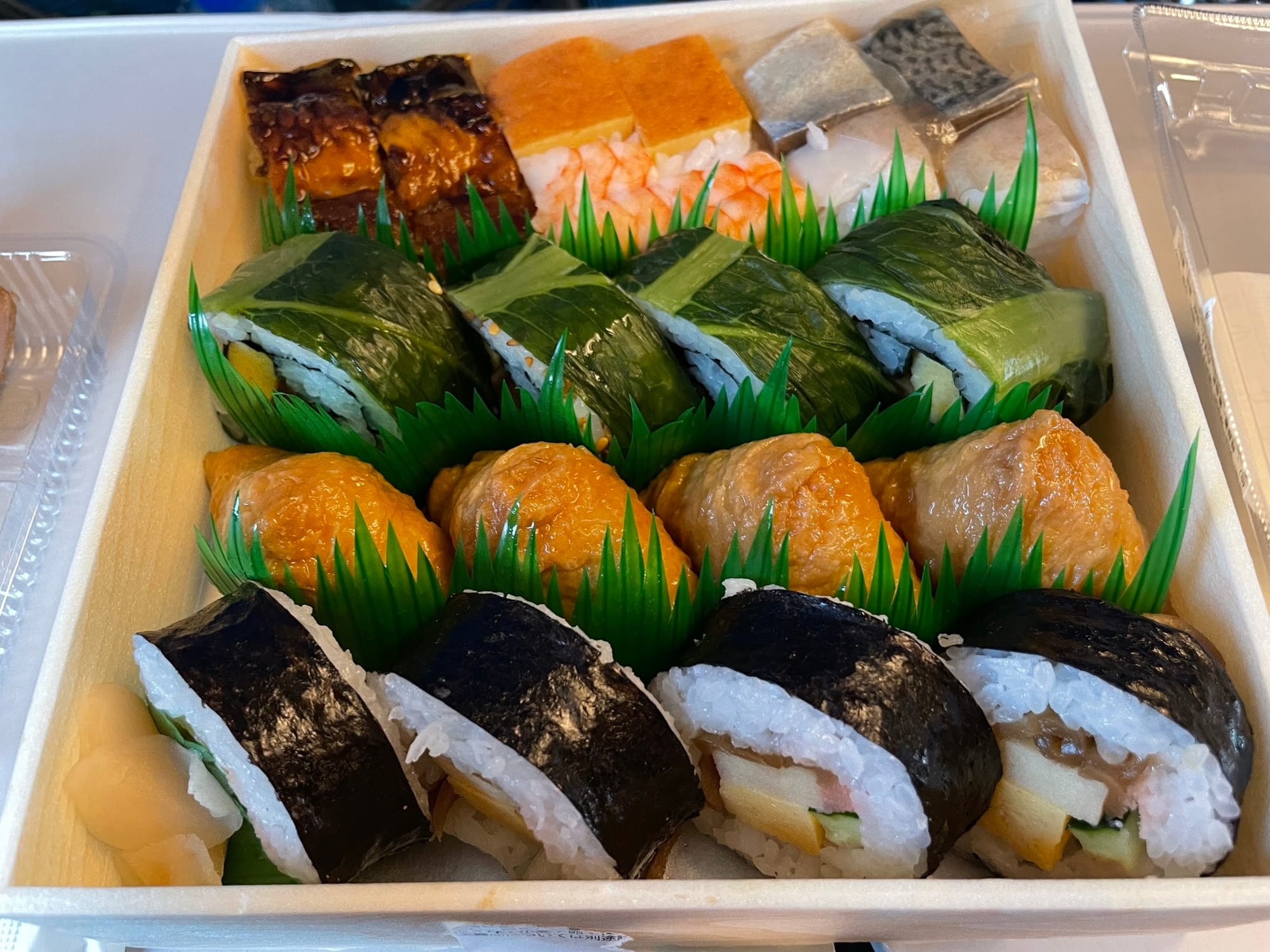
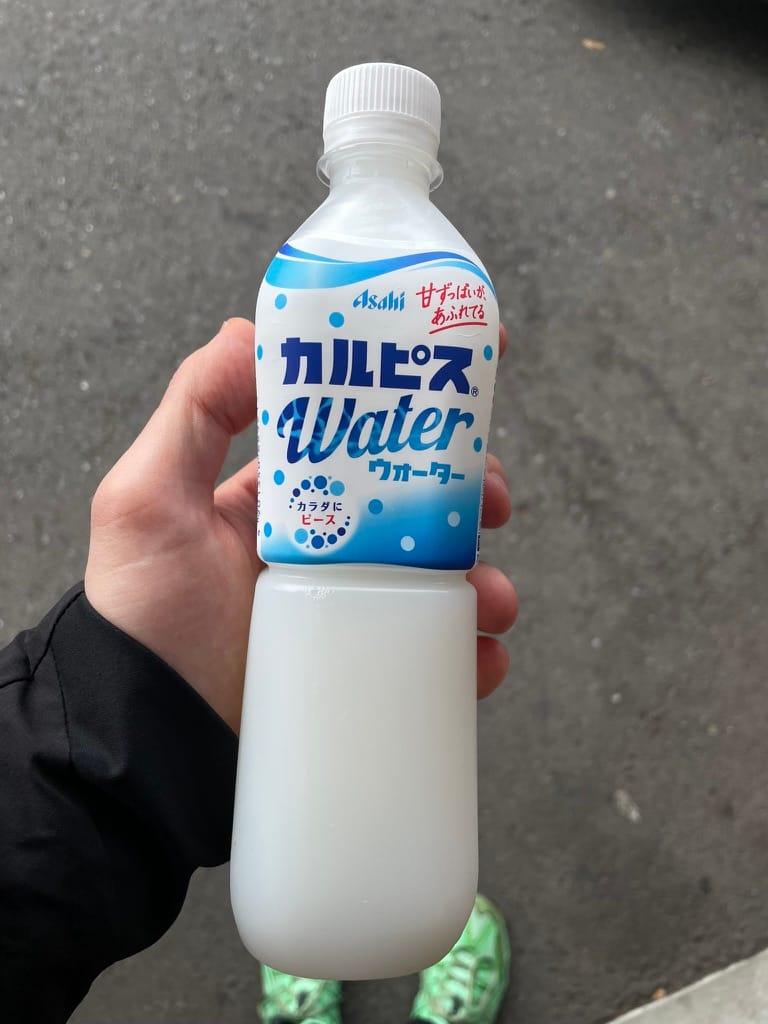
1. Family Mart's Teriyaki Chicken & Egg Sandwich has been the boss of them all since 1992. | 2. One of the millions of vending machines | 3. Wonder taste | 4. Alco by the handle | 5. The Boss and a round nigiri? | 6. Up-scale egg sando in a train | 7. Curry pockets | 8. Restaurant-grade bento box | 9. Calpis (yogurt-flavor soda)
Other Cultural Things
- Everyone who wants to work has to be given a job by law.
- Japanese retro language-learning videos are crunk.
- Colonel Sanders - the KFC dude - is Santa Clause. For Christmas, people go to KFC.
- Uniforms everywhere - school uniforms; work uniforms; cosplay outfits.
- Uniqlo sells flowers 🌷
- Asics has a walking brand called Asics Walking.
- You read from back to front (right to left).
- There was a public piano at Himeji Station. A random passenger just sat down, played something that touched my soul, wiped the keys, closed the piano, packed her things, and just walked away. What the hell just happened.
- We saw a tourist who didn't have enough change for the bus. So, the bus driver asked other local passengers if someone could break the tourist's larger bill. Everyone was working and they found a solution.
- When paying, you put your card or cash in a little tray. The first few times, I tried to hand the bill directly to the other person. A lot of confusion was created.
- Cat caffees are so 2010. Pig caffees are wassup!
- Card payment is called "cardo"
- When the payment terminal asks you to place your card on the NFC reader, it says "cardo touchy"
- Kei cars - tiny cars - are a thing. A Kei car has a tiny engine. It was introduced in the late 40s for tax and insurance purposes.
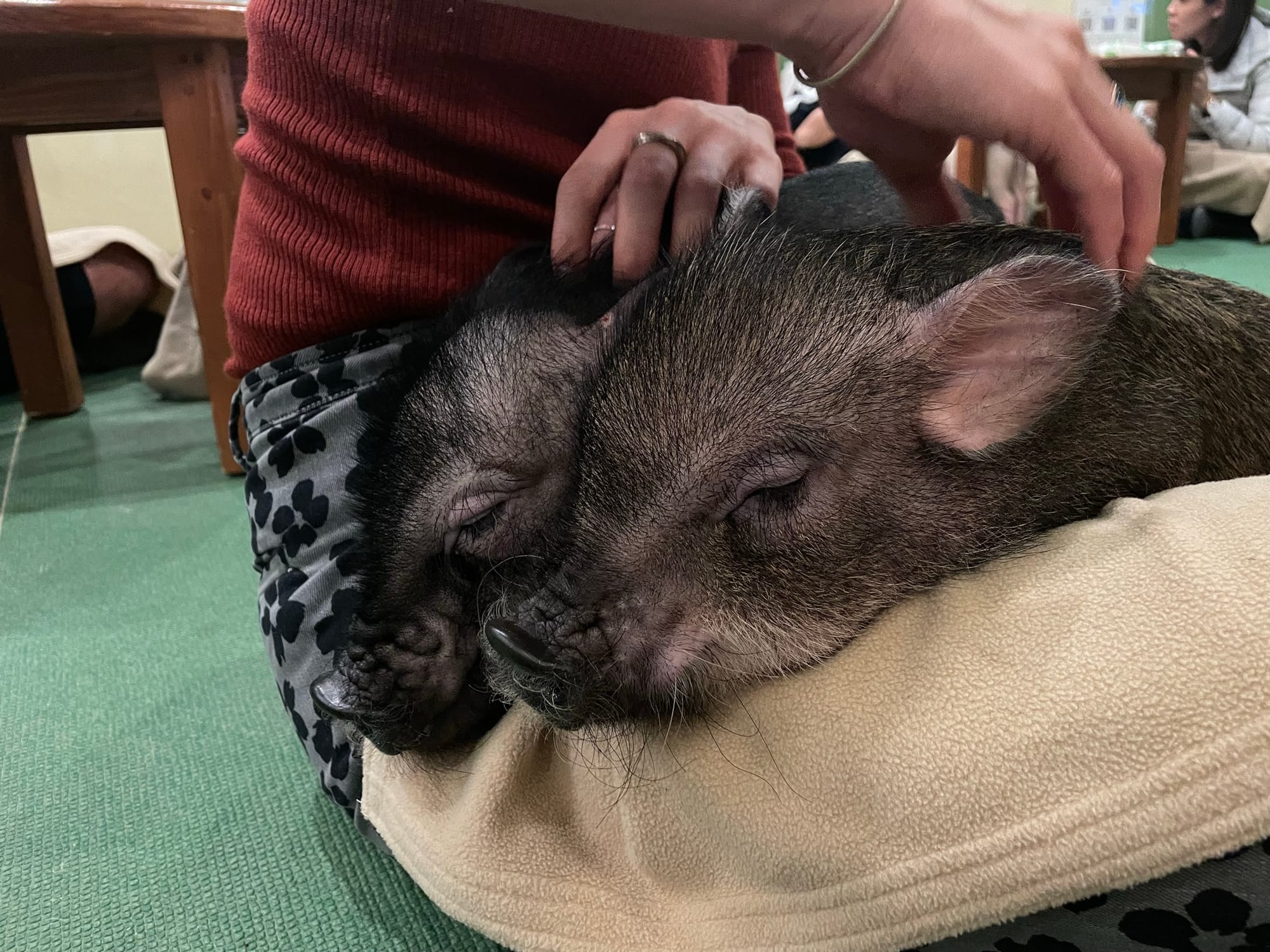
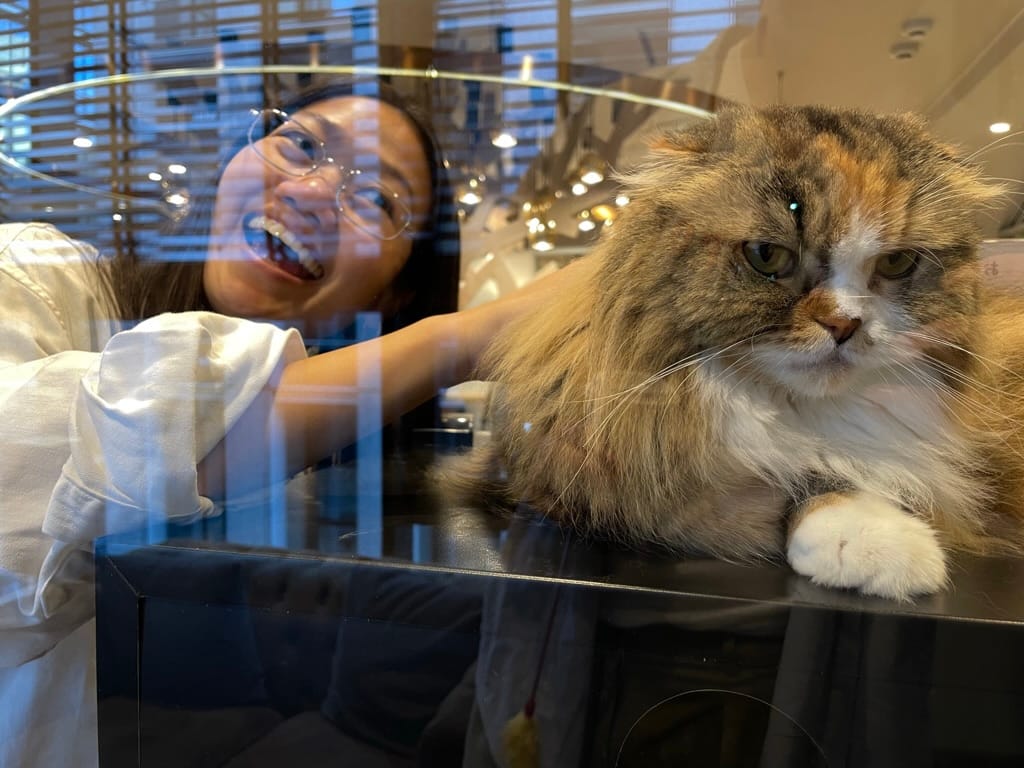
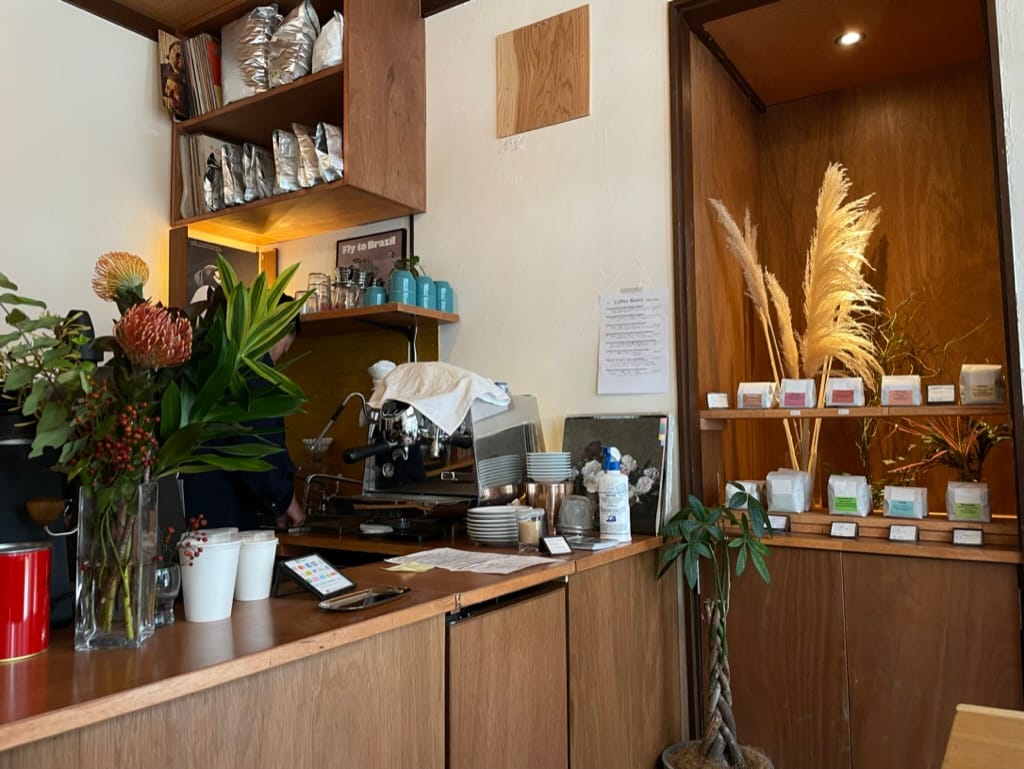
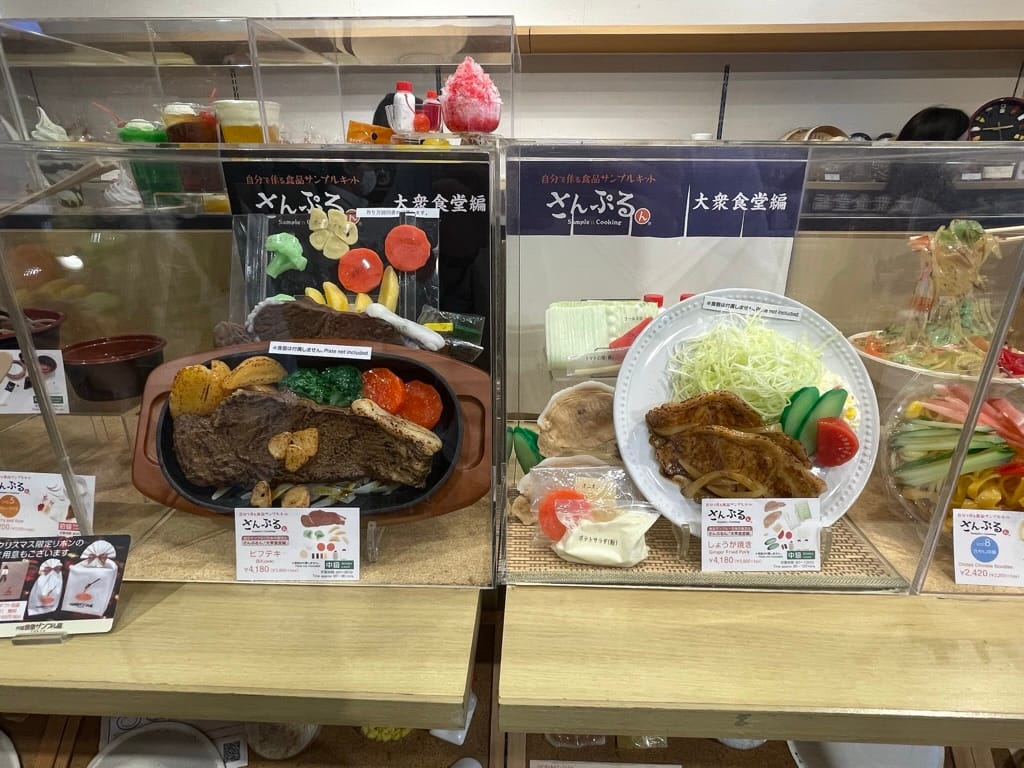
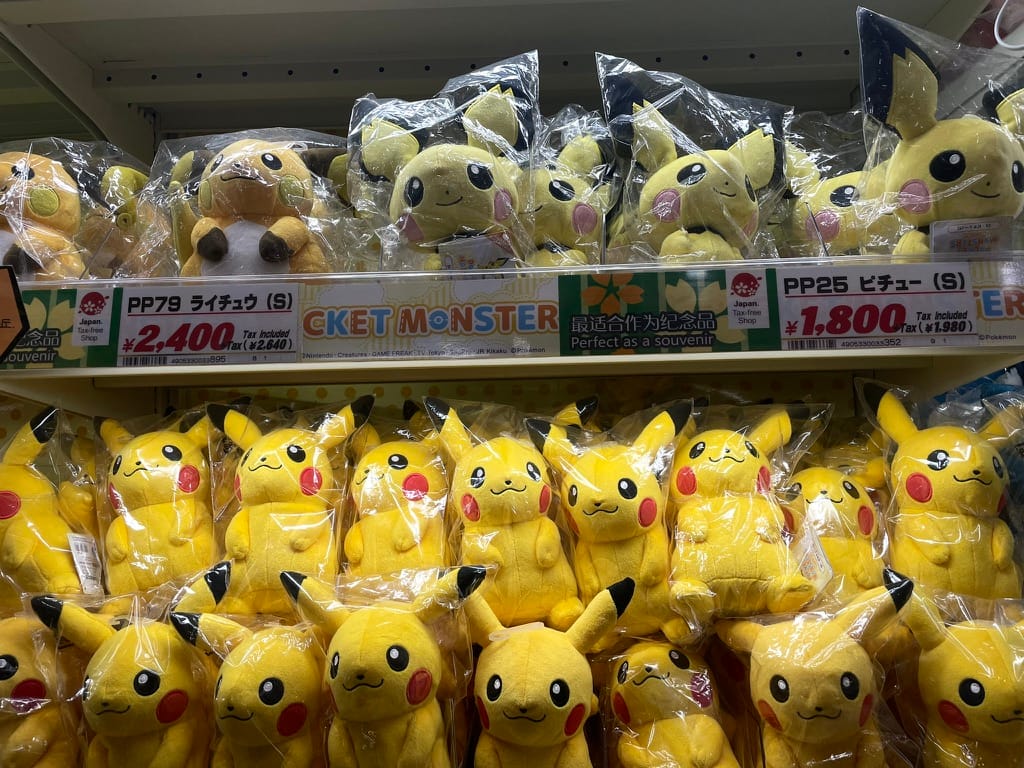
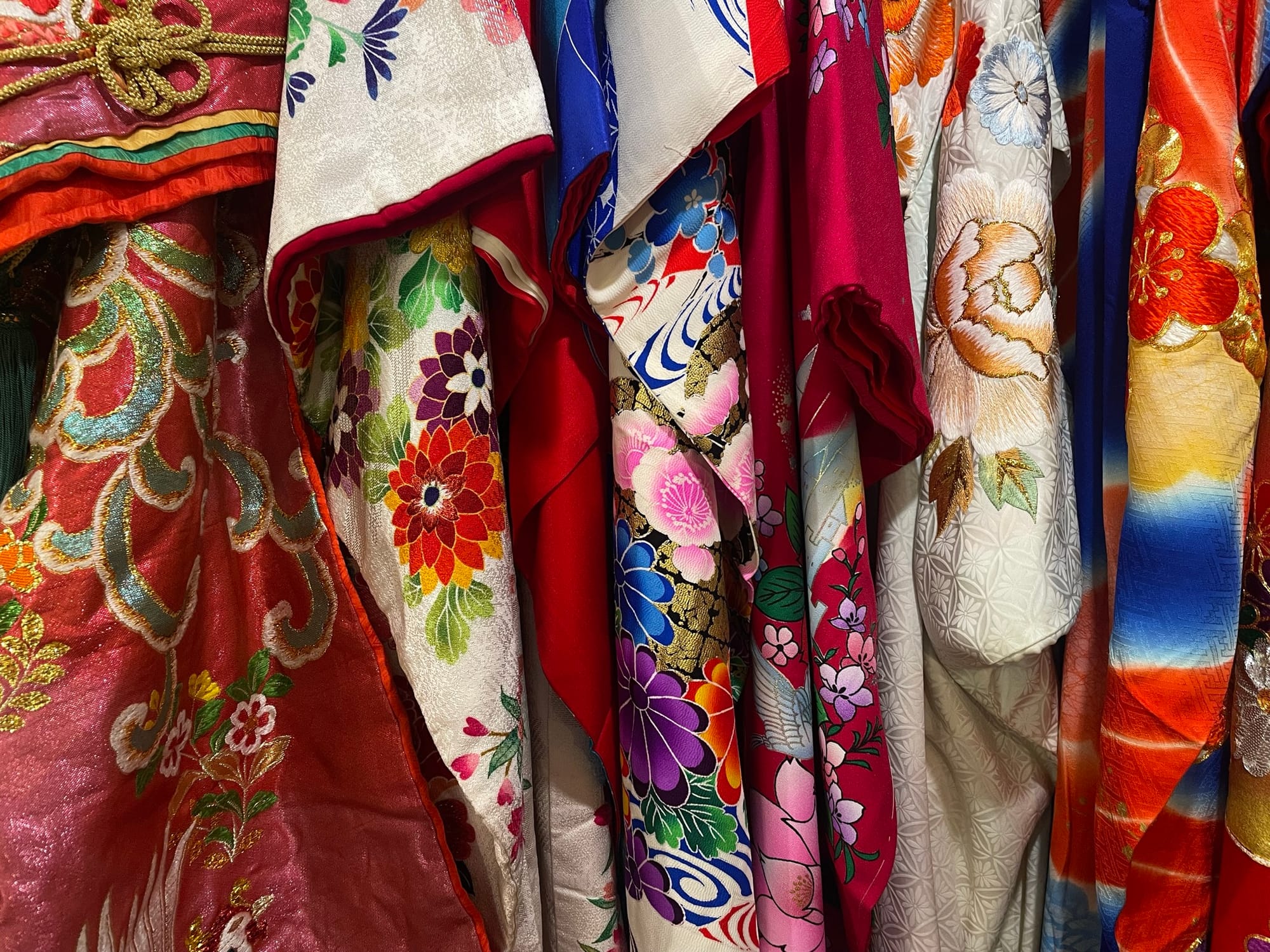
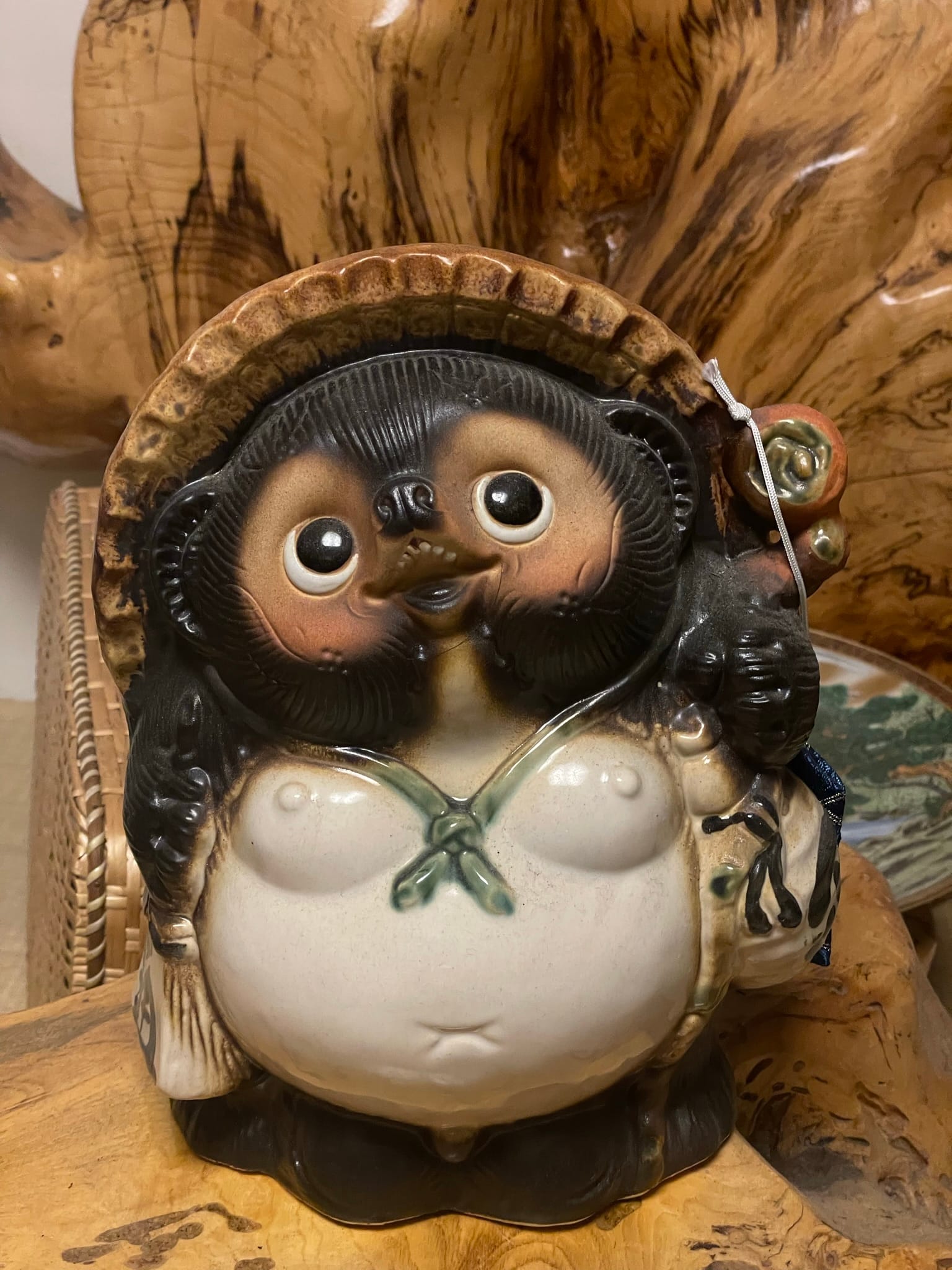
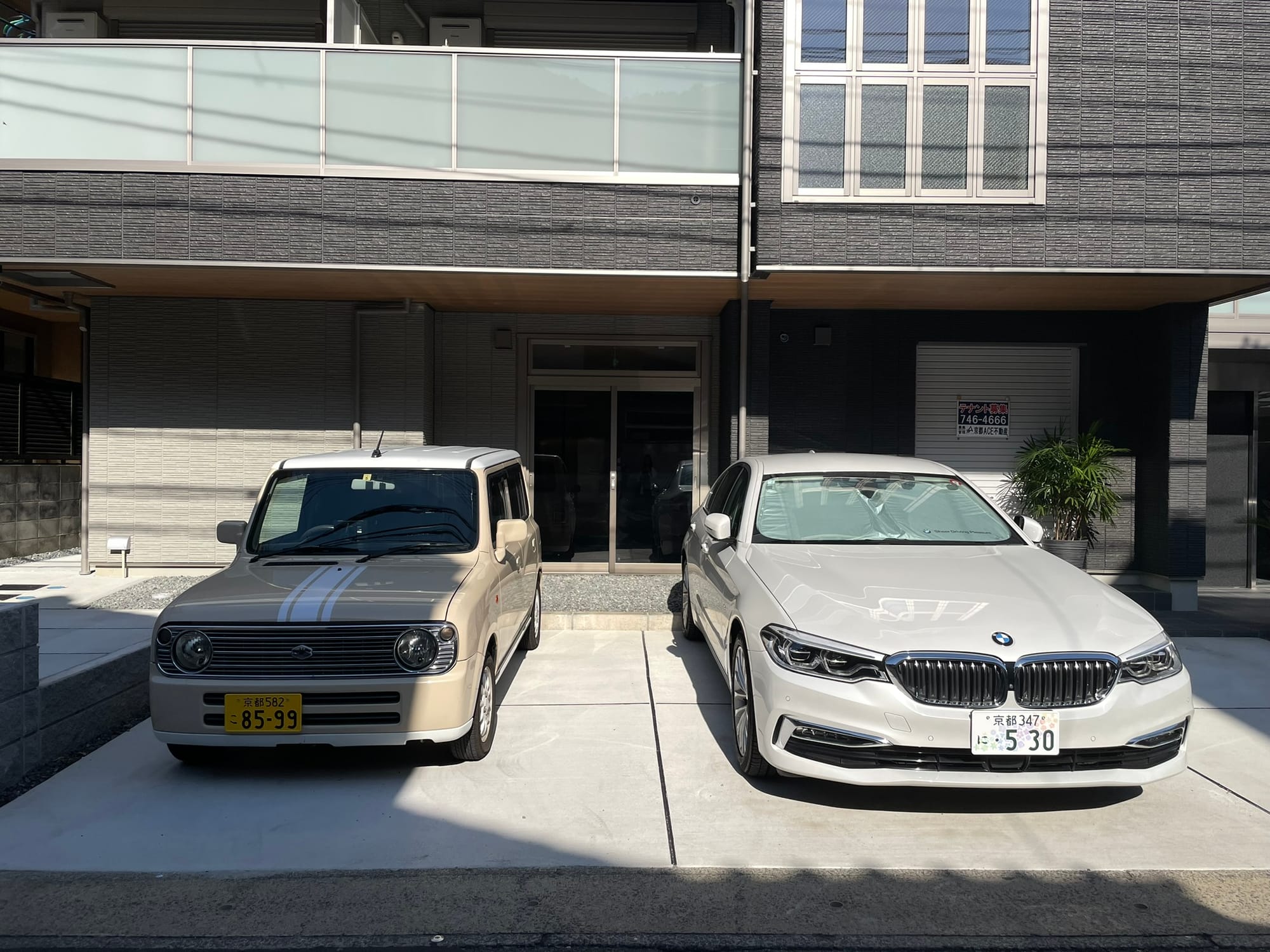
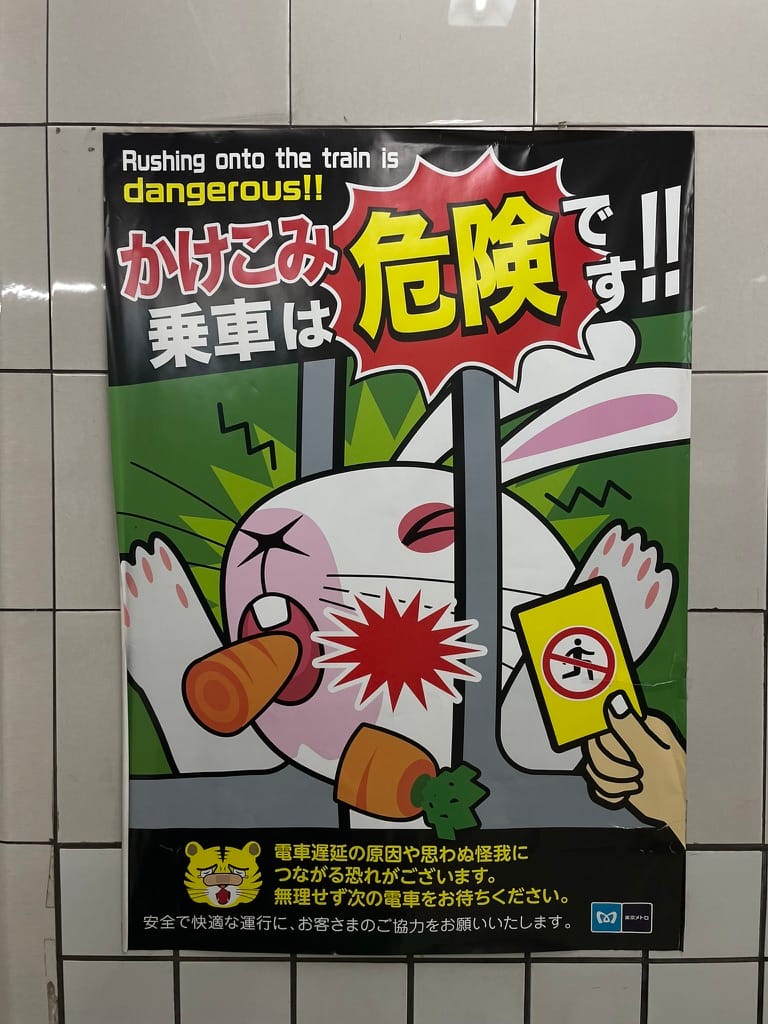
1. Pigs at a pig caffee | 2. Cat at a cat caffee | 3. Swamp coffee - a beautiful manifestation of the owner's vision | 4. Fake food | 5. Pika, Pika! | 6. Elaborate patterns for Kimonos | 7. No idea what this things is... maybe a mixture between a racoon, a bear, and a gnome | 8. A Kei car next to a normal car | 9. Don't bite the carrot!
More Oddities and Cultural Nuggets
- Tokyo is the most populous city in the world with over 40 million residents. That's 5 times as much as my home country.
- Cars drive on the left.
- Everything feels like a futuristic dream as imagined in the 80s/90s.
- As expected, Japan has a very low level of English. Google Translate to the rescue.
- The language is interesting. I overheard that when spoken, you always have consonants following vowels following consonants and so on. C-V-C-V-C-V-C-V-C-V. ToKyo. ToRii. KyoTo. // I haven't confirmed this but sounds approximately right.
- The language is interesting. From what I understand, they use 3+ alphabets in Japanese. Kanji = chinese characters // Hiragana // Katakana (used for foreign words) – all of them used simulataneously.
- This year, Tokyo finally hosted its first daydreaming competition.
- During our trip, the Hanshin Tigers - the team of the Osaka area - became national baseball champions. With that, they defeated the infamous Colonel Sanders Curse.
- Lax housing regulation. "You can build wherever and however you want."
- Signatures have to match exactly. Hearing this from a friend, it sound extremely frustrating if you want to open a bank account but haven't trained all your life to write your signature that matches exactly down to the micron.
Tokyo: Megalopolis 🗼
I'll share a little secret with you: Tokyo has been my personal Moby Dick 🐳
I was obsessed with the idea of this city for a long long time.
To paraphrase Tim Ferriss: "Japan is the place where you'll feel most uncomfortable while being extremely safe."
And in my mind, Tokyo embodied that statement to the max.
I was day dreaming of traveling to this mega city, stroll through the neon-lit streets, and immerse myself in the busy rumble of the capital's rush hours.
This place was on #1 of my bucket list for around 10 years and now it finally worked.
Expectations were high but boy, did it deliver.
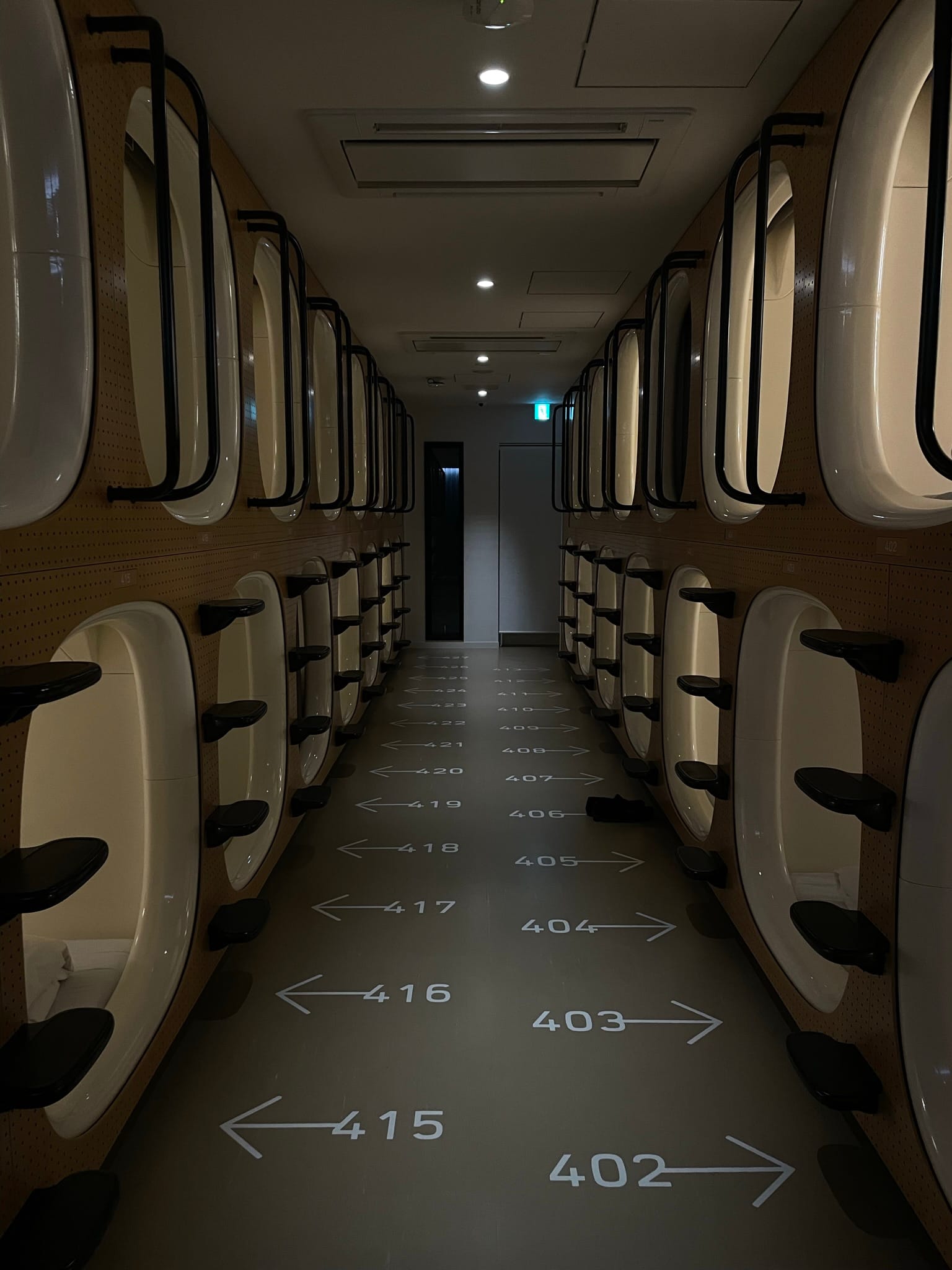
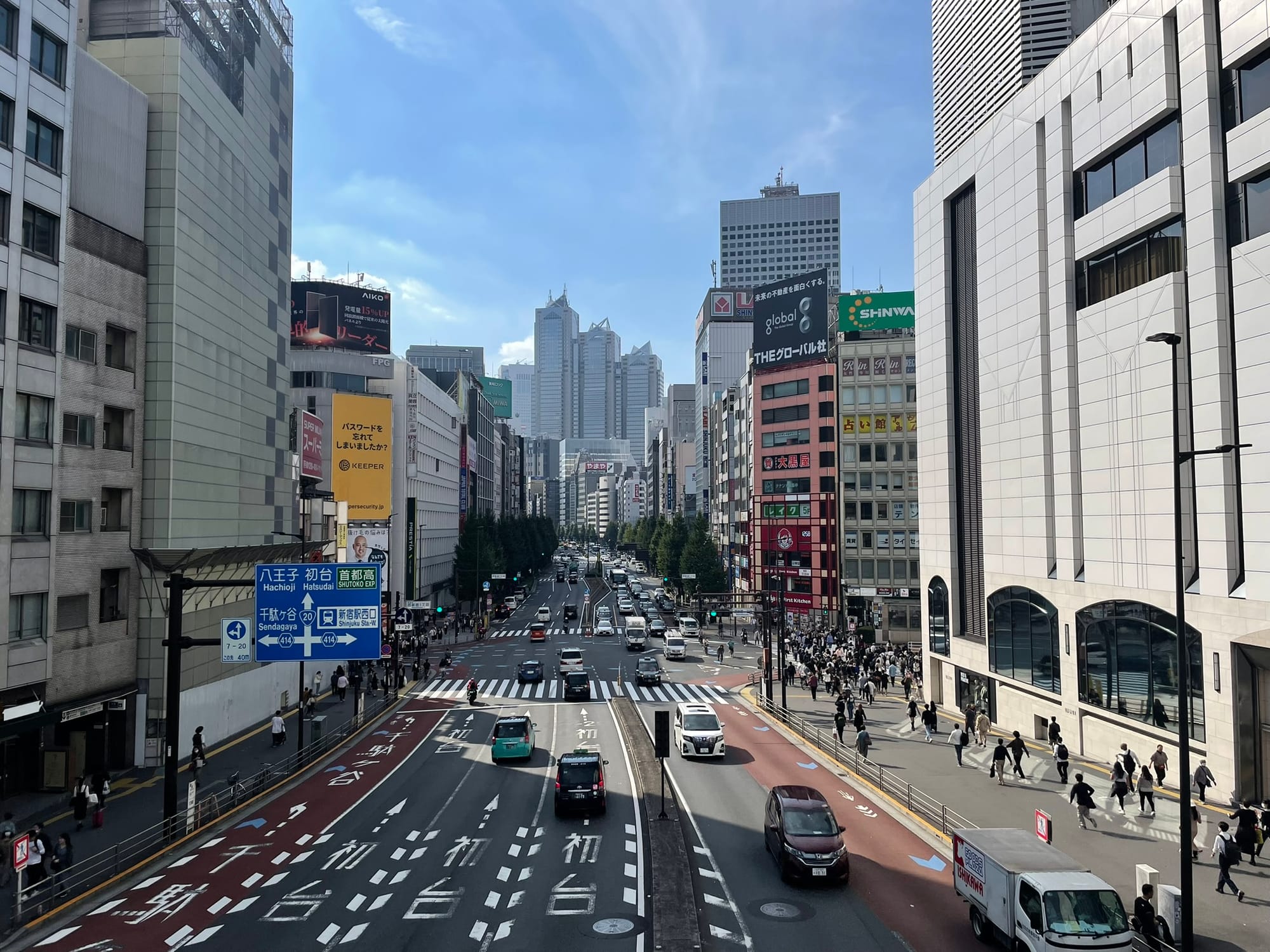
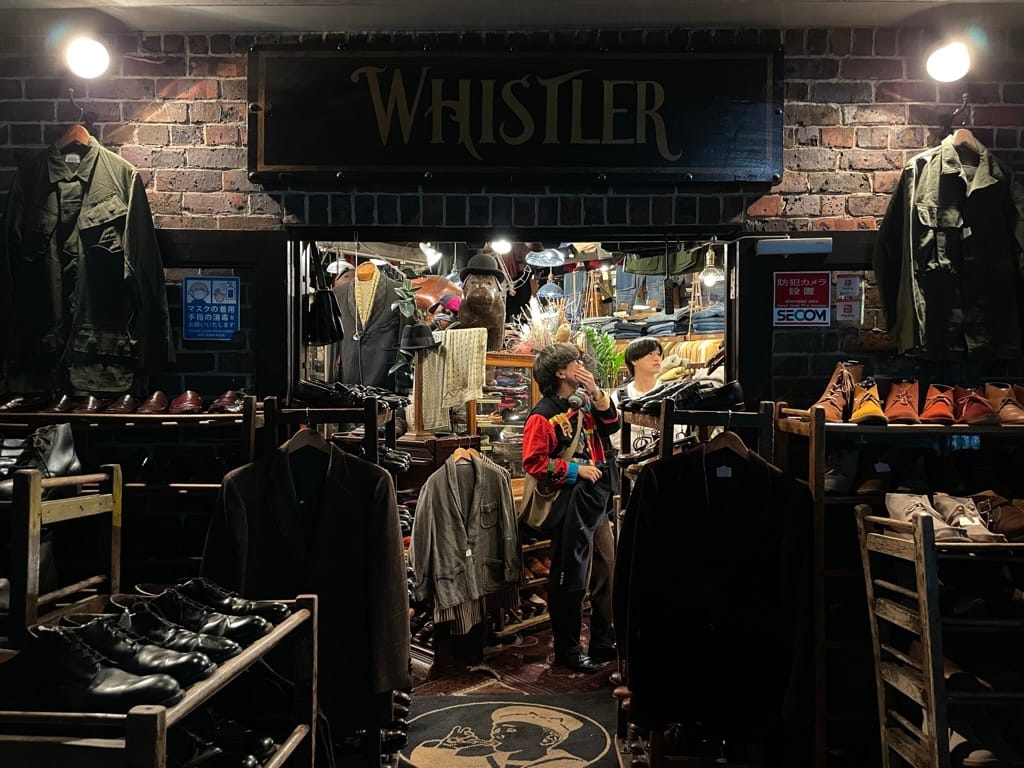
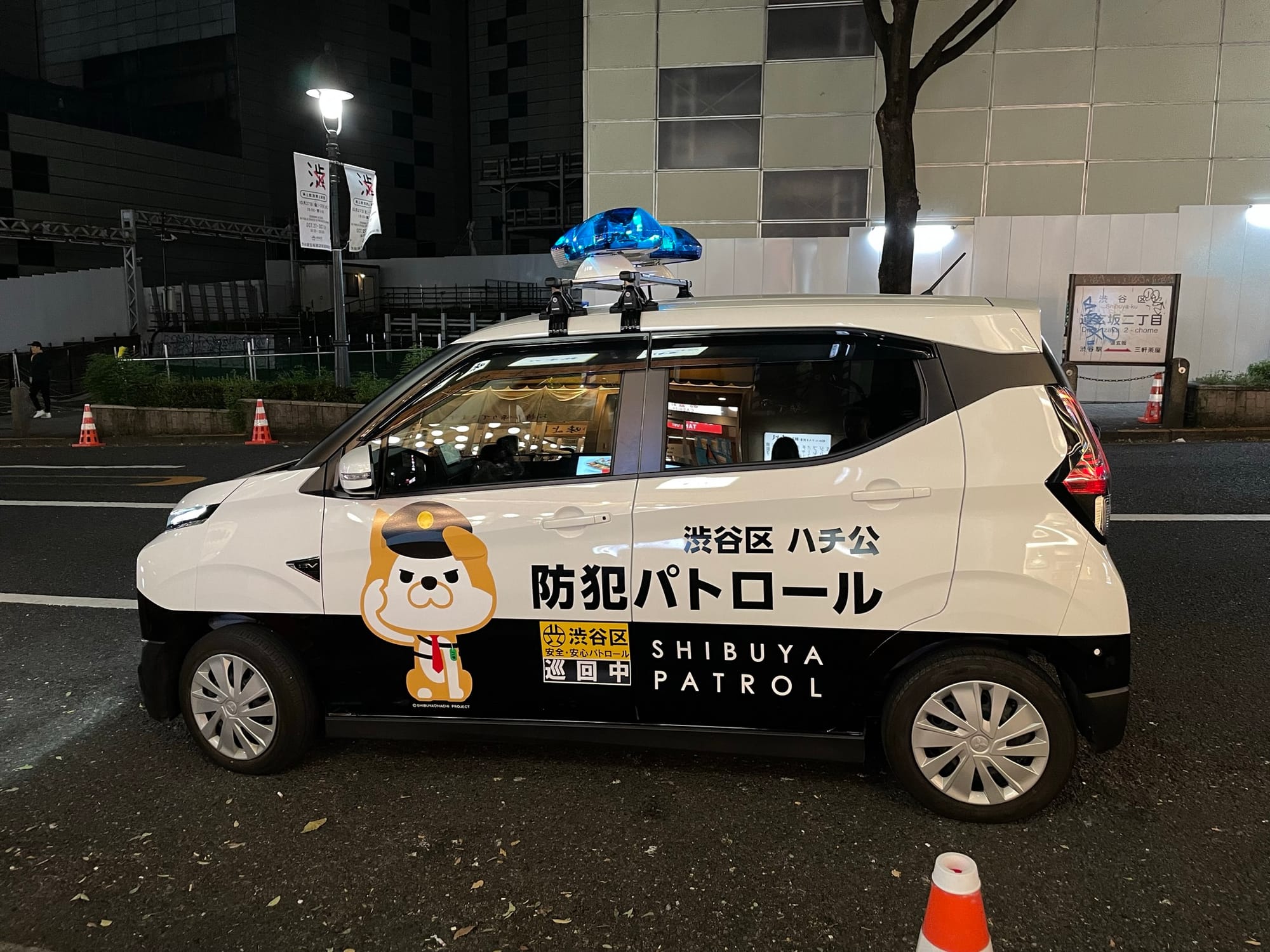
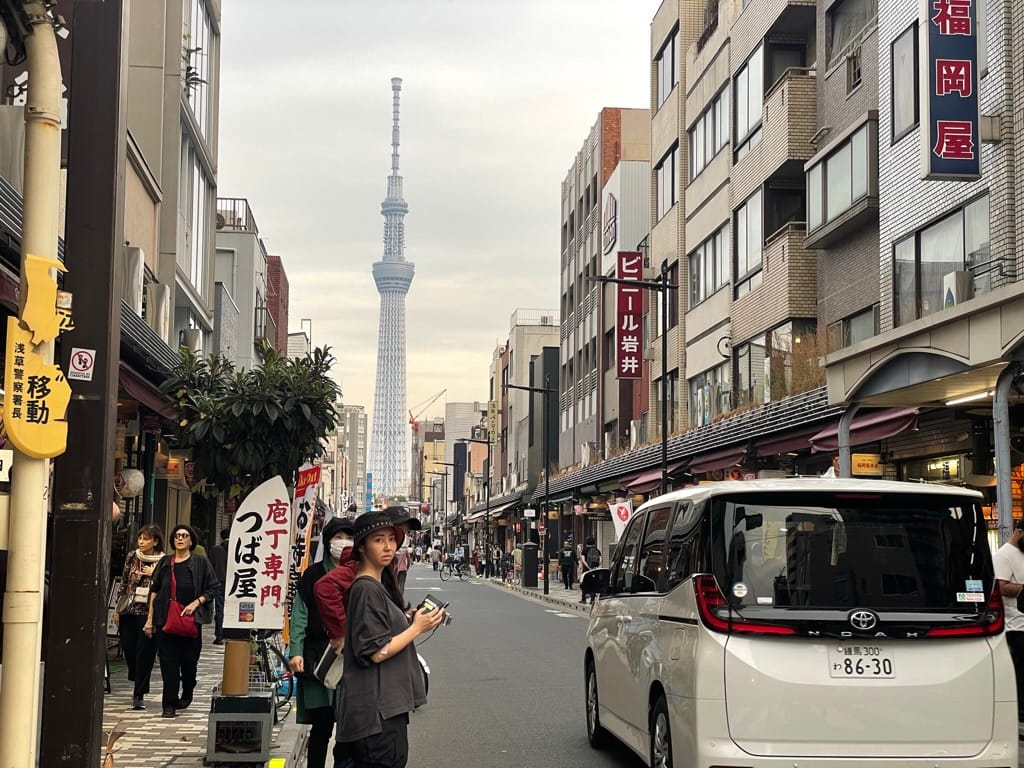
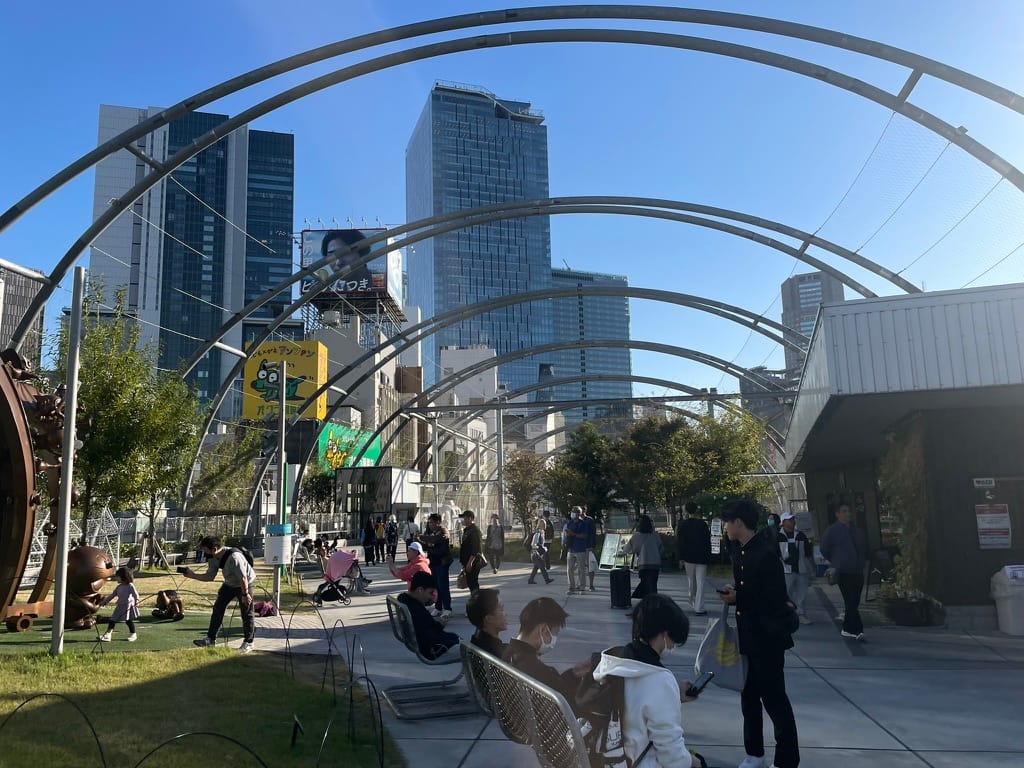
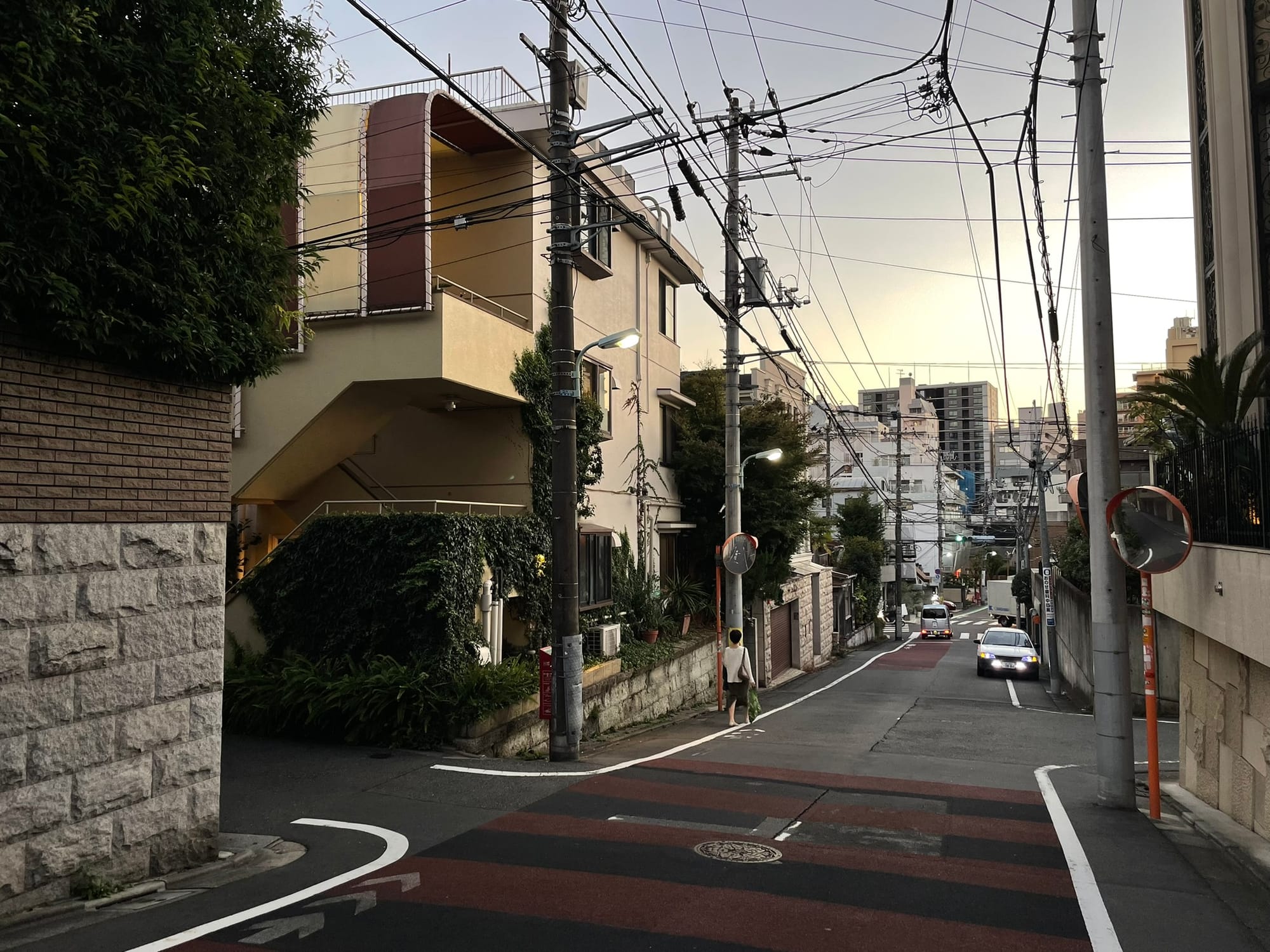
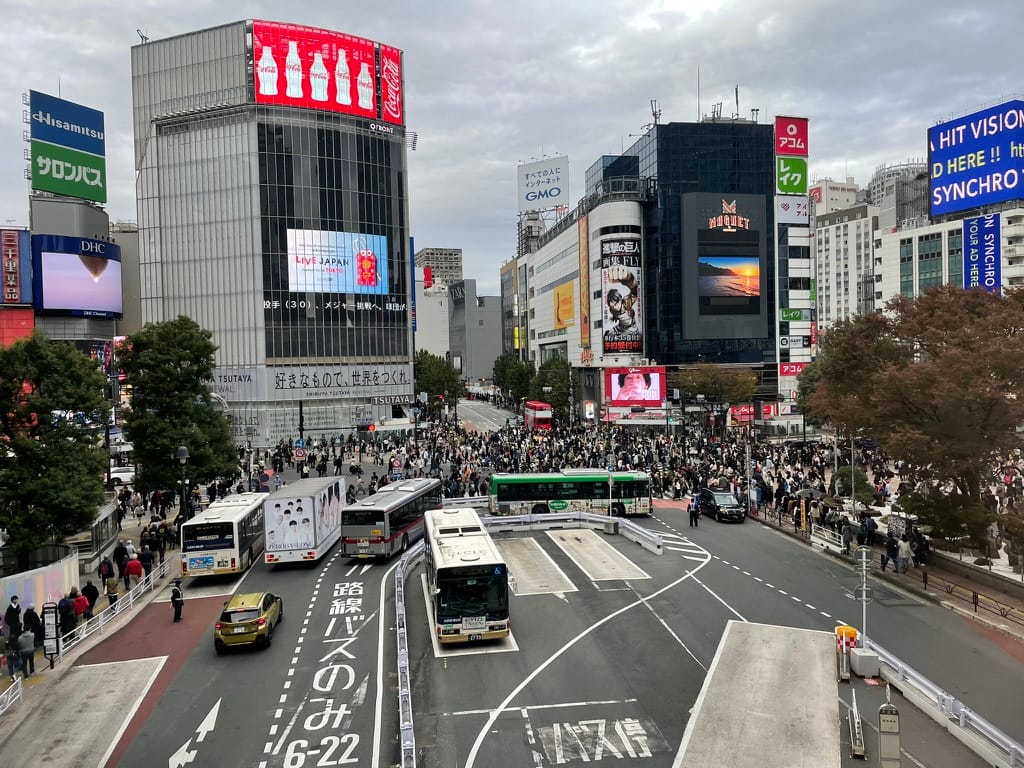
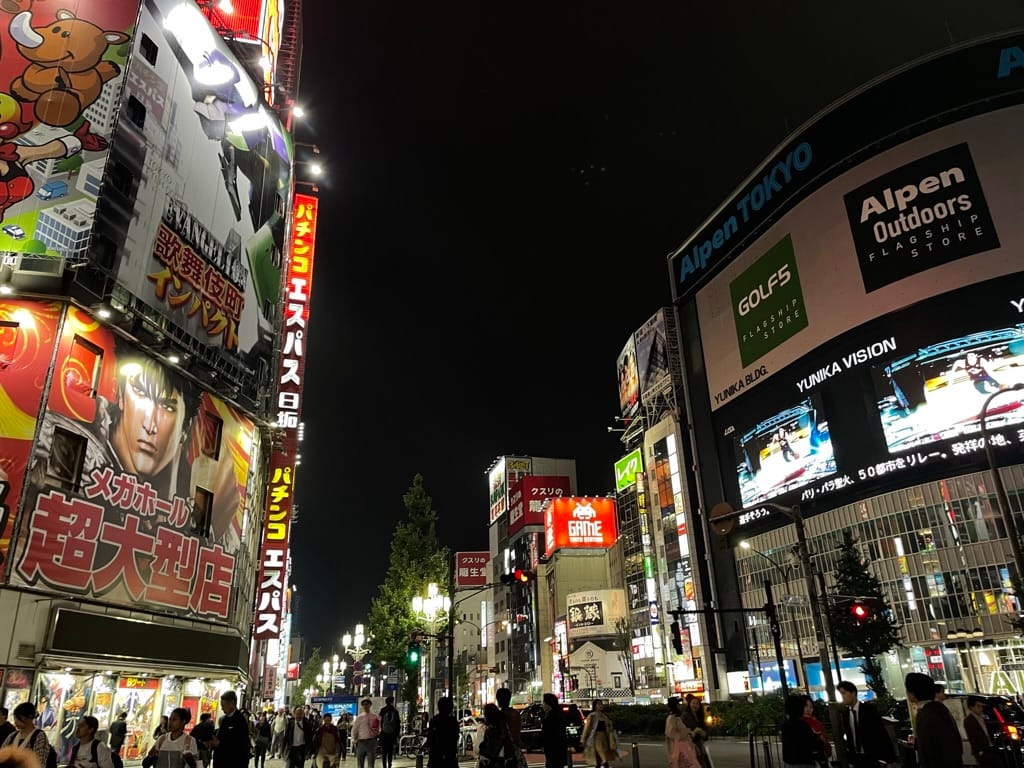
1. Capsule hotel on the first night | 2. A view of Shinjuku | 3. Vintage store in Koenji | 4. Shibuya Patrol | 5. A view of Tokyo Skytree from Taito City | 6. Miyashita Park | 7. A residential street between Naka-meguro and Daikan-Yama | 8. Shibuya Scramble Crossing | 9. Night out in Shinjuku
A couple of wild things about Tokyo (& corporate work/drinking culture):
- Chart Whistler - Go to the best vintage store in the world. Don't trust me? Better listen to the most stylish man alive - who happens to be an 80-year old man from Tokyo.
- Shibuya Crossing is a the world's busiest pedestrian crossing. // "A 2014 flow measurement survey by the Shibuya Redevelopment Association estimated 260,000 pedestrians per day on week days, and 390,000 pedestrians on non-working days."
- Shibuya Meltdown is a media account documenting the alcohol-induced demise of sleep-deprived white-collar professionals in Tokyo. Looking at it, one oscillates between laughter and deep sadness.
- Japan and Korea constantly rank worst in terms of employee treatment.
- Seniority is a huge deal. Boss man is sitting farthest from the entrance → comes from Samurai days where the boss man would need to be protected. The junior-most person is always next to the door. (A) Because they are most expendable if an ill-meaning soldier rushes through the door and (b) because they can press the button, which calls the service person in a restaurant. It is the responsibility of the junior to make sure that everyone's cups are always full.
- Highballs - especially whiskey mixers - are very popular.
- 🧛♂️ Cocktail in the Dark: One of the weirder experiences was getting a drink at this super dark cocktail bar. Vintage European decor, Mozart's Requiem in D Minor on the speakers, and a bar keeper that looked like a vampire. Great Japanese whiskey drinks and maximum weirdness made this a moment to remember.
- Mandatory after work drinks have different names - depending on when they happen. (1) The first afterwork drink is called Nomikai, (2) Nijikai is the after party, and (3) Sanjikai is the karaoke event to close the night 🎤
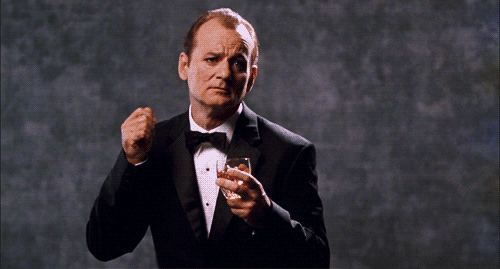
Food in Tokyo
Food & bev-wise, Tokyo is also in a league on its own.
Every little hole serves you tasty, high-quality meals on a budget.
People kept telling me that "you'll eat Michelin-grade quality on the cheap" and I was like "yeah, yeah." 🙄
Well, now I'm like "oh yeah!" 👌
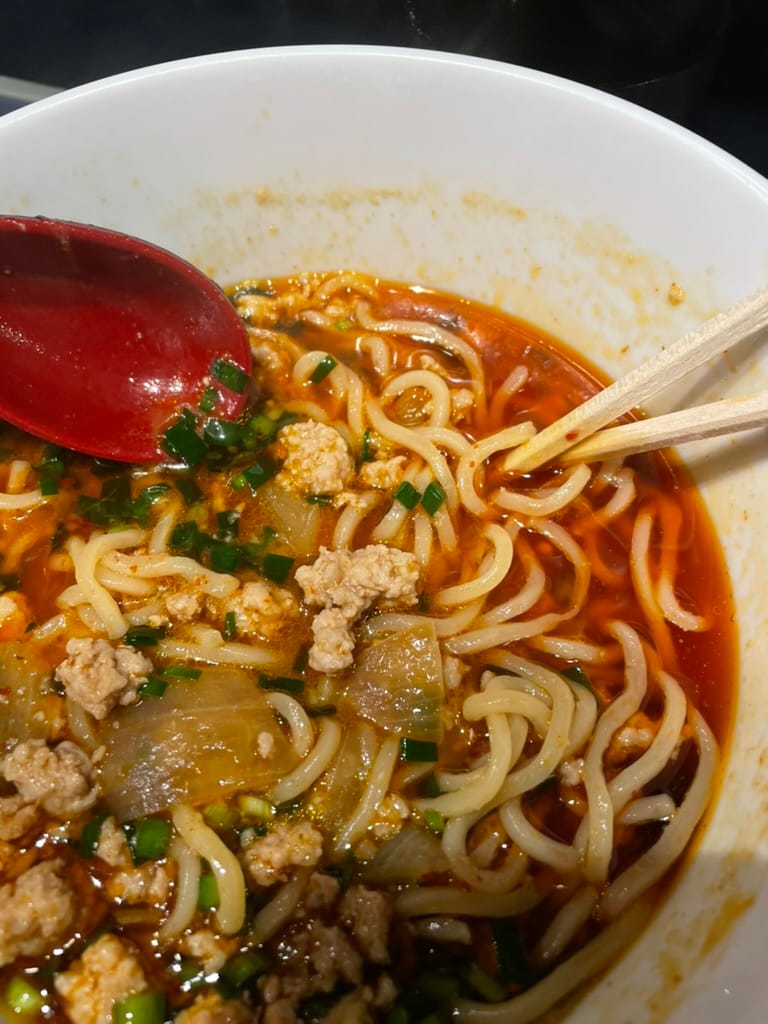
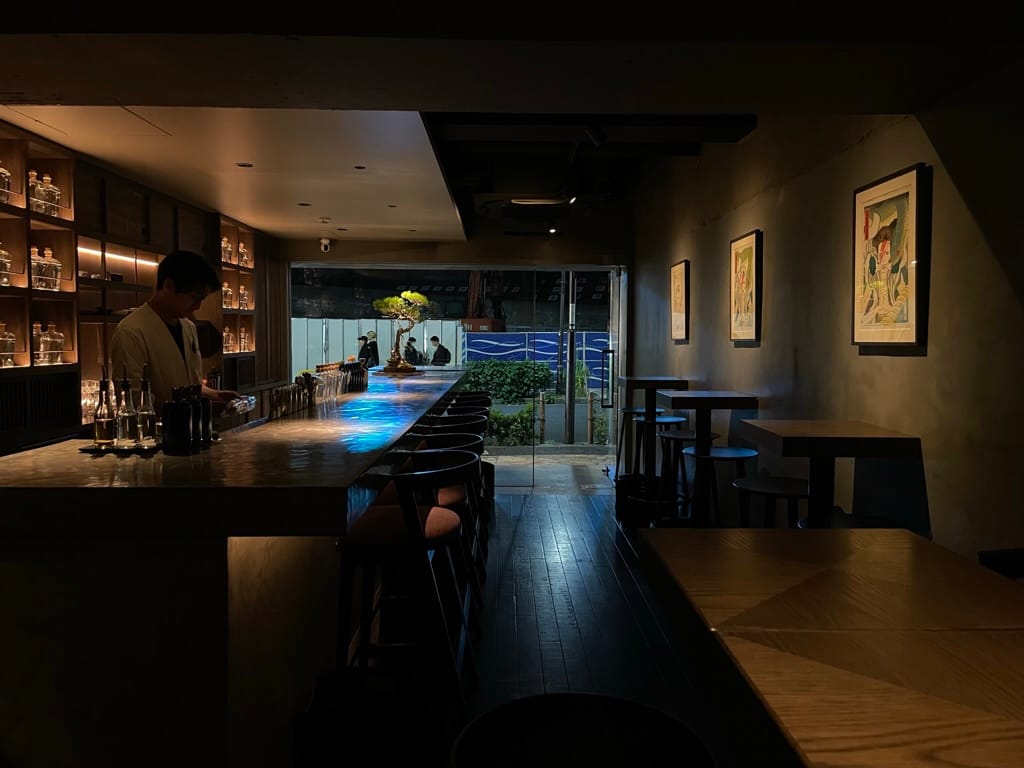
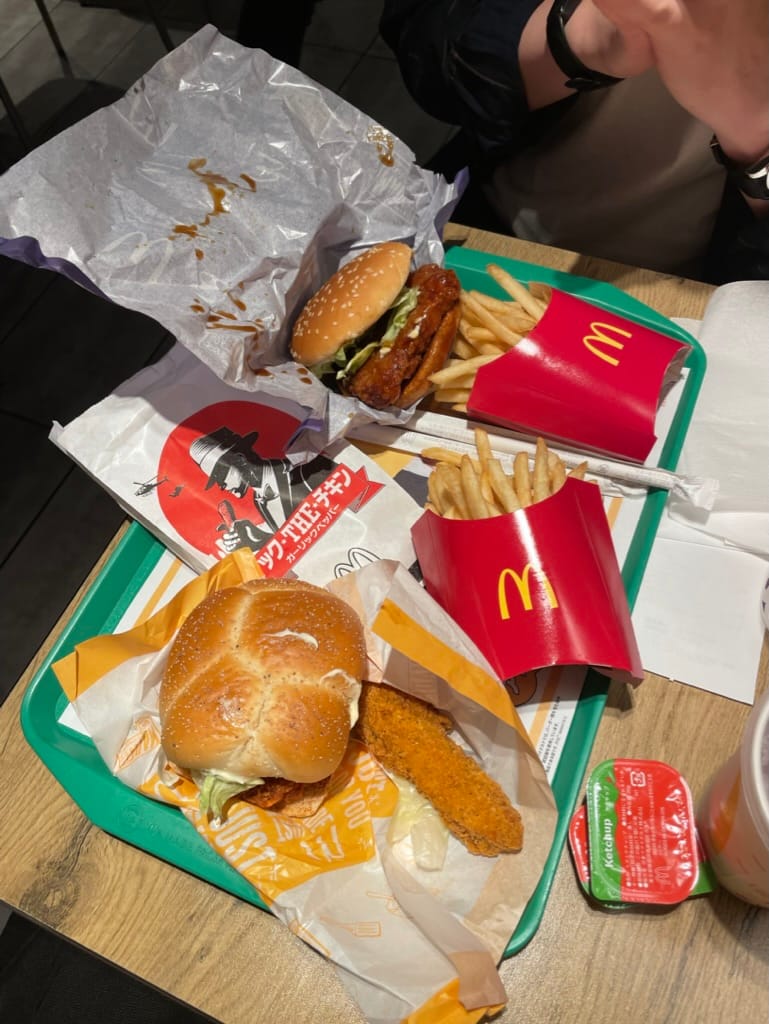
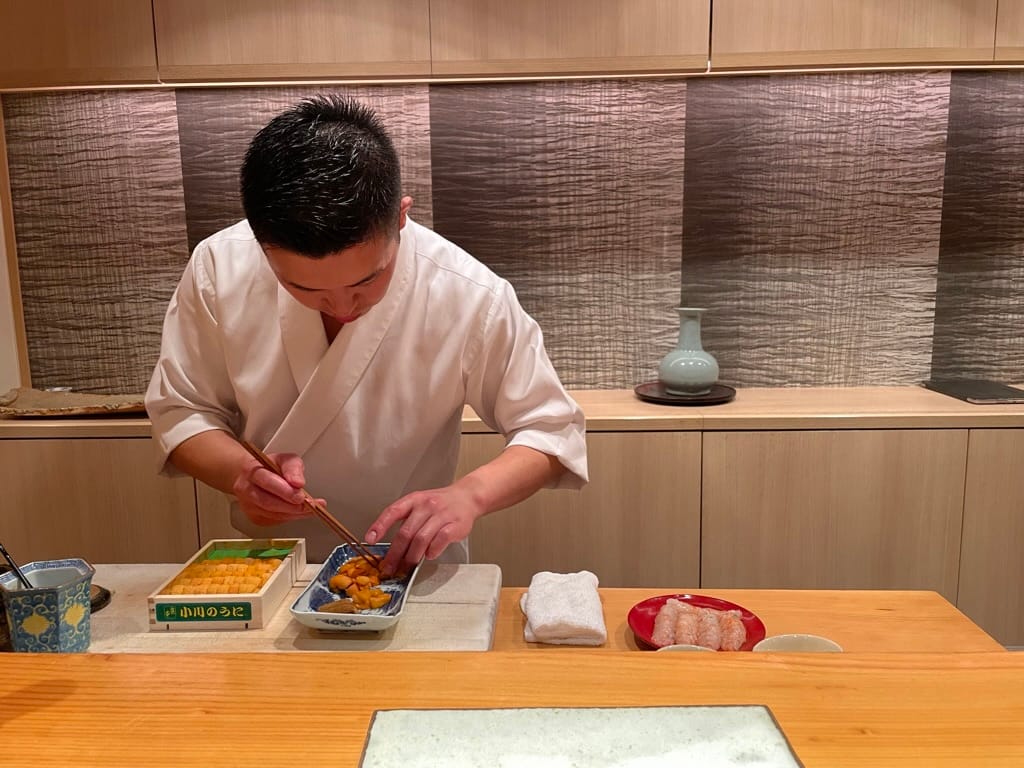
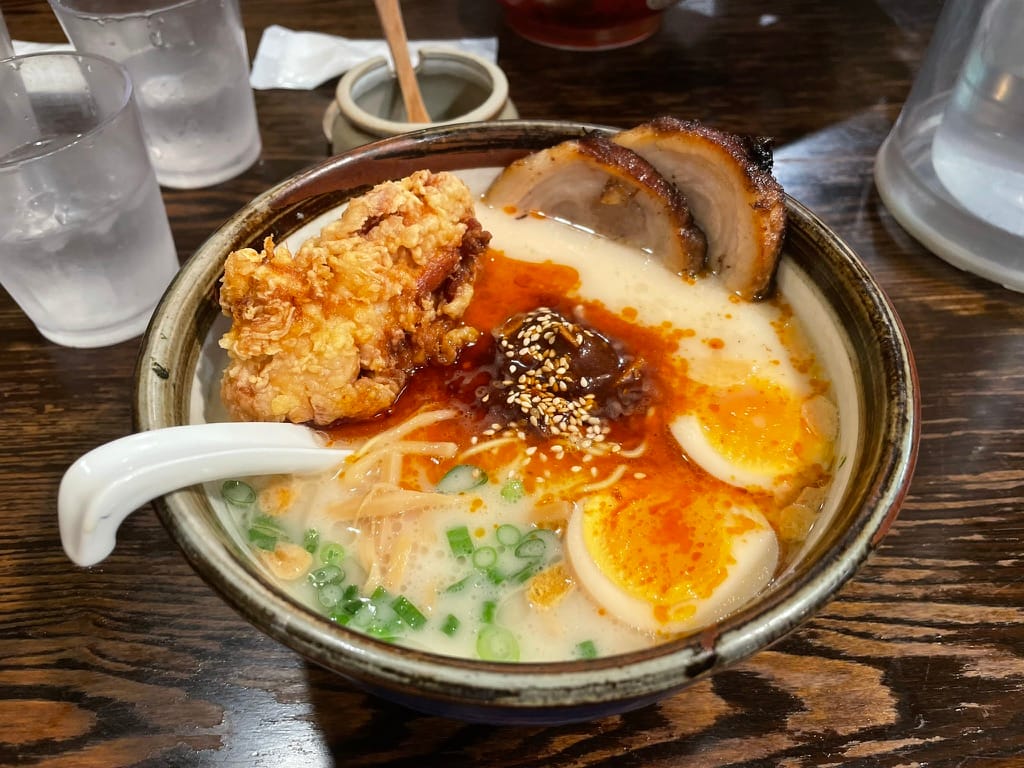
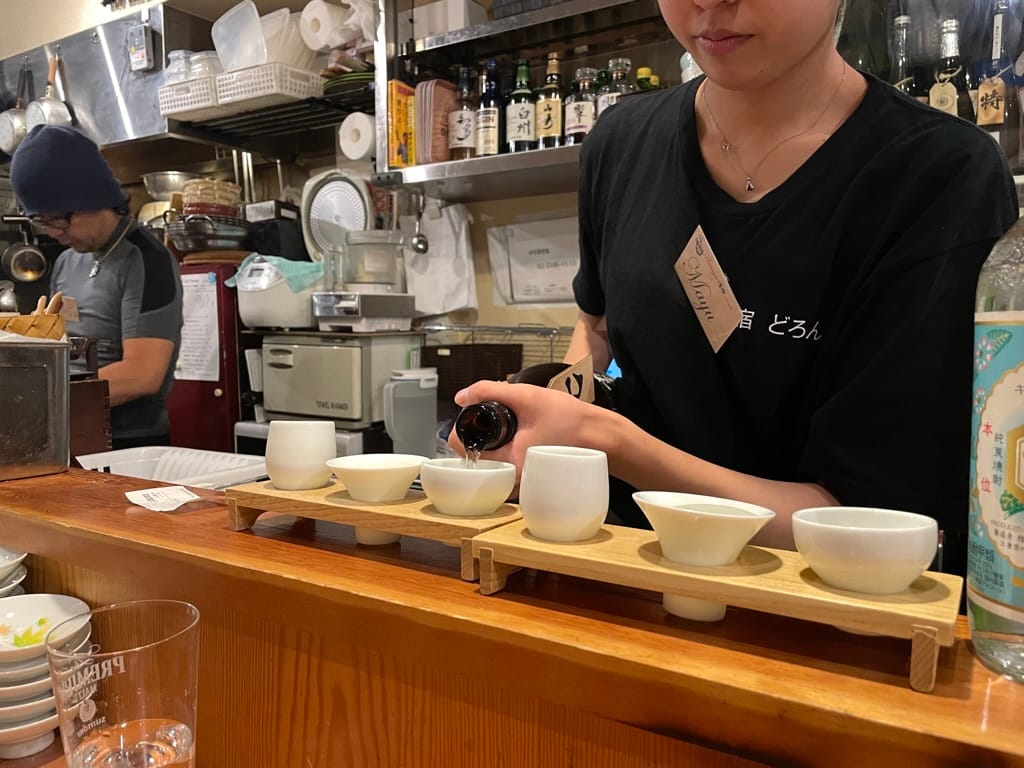
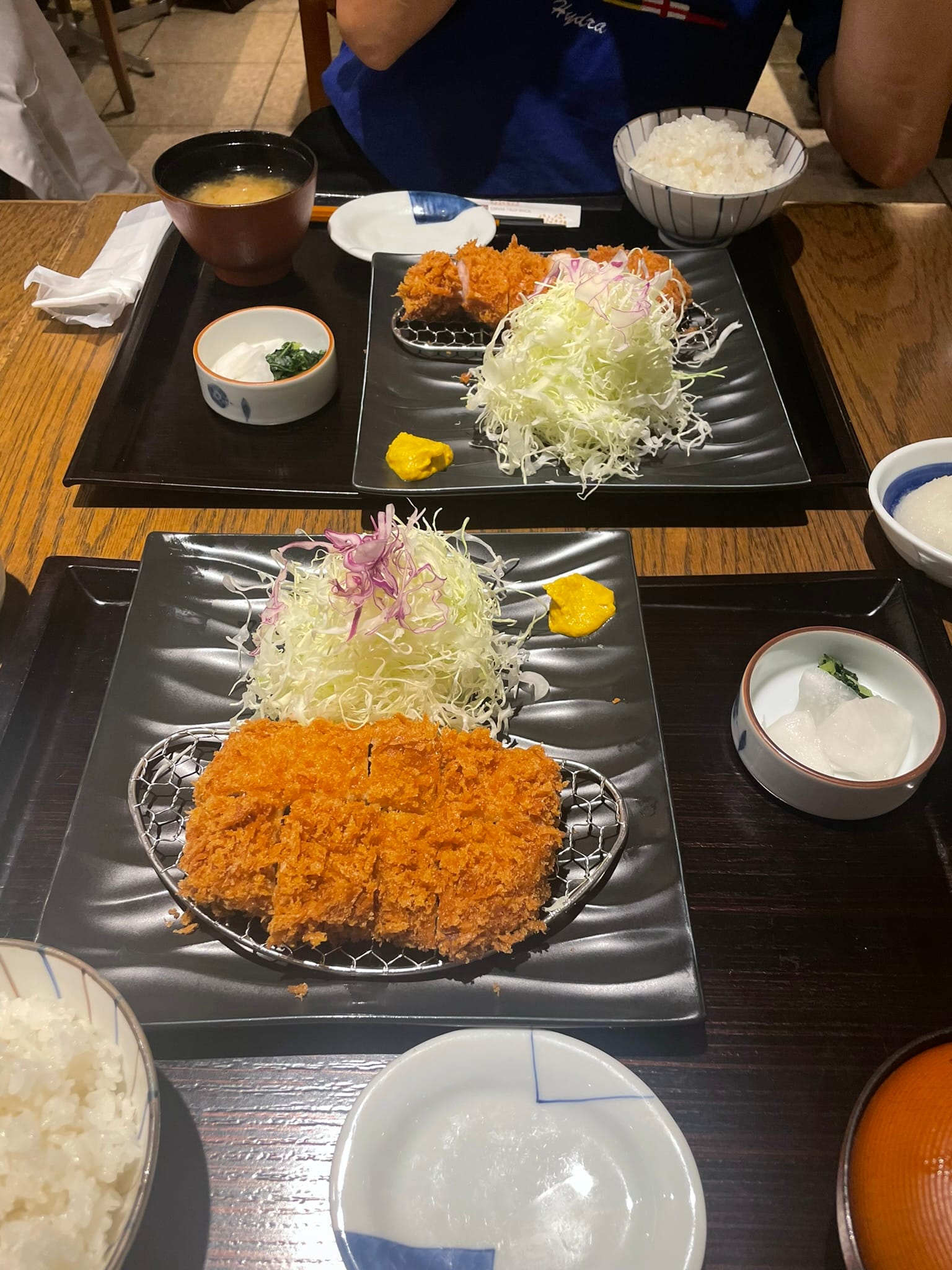
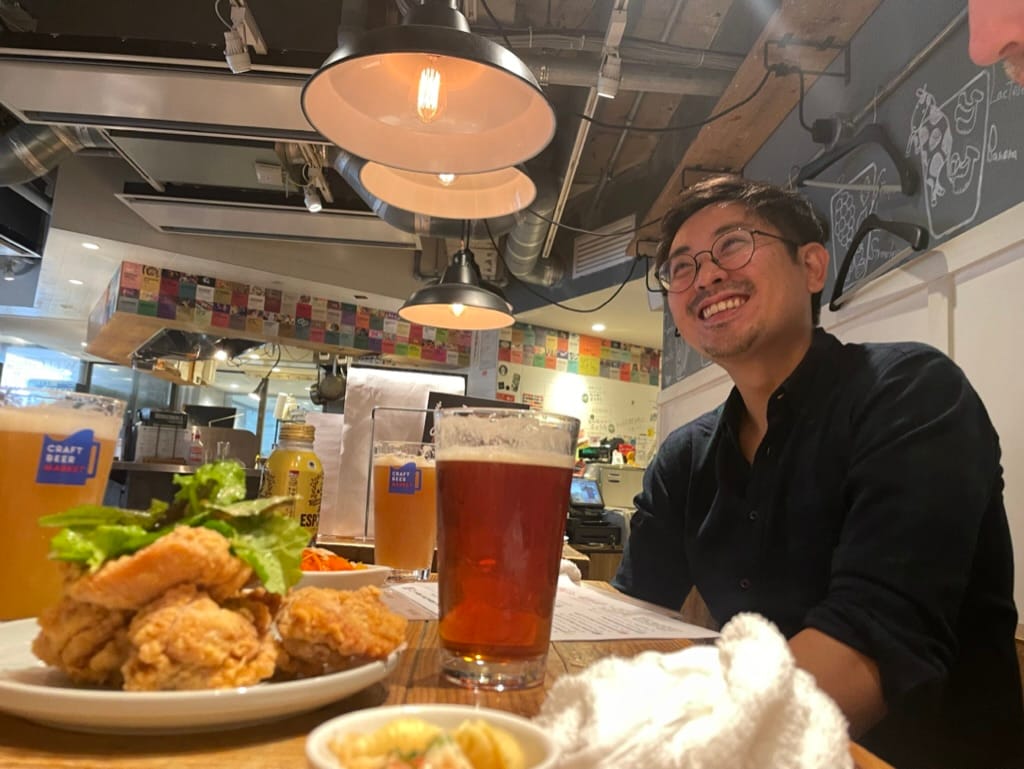
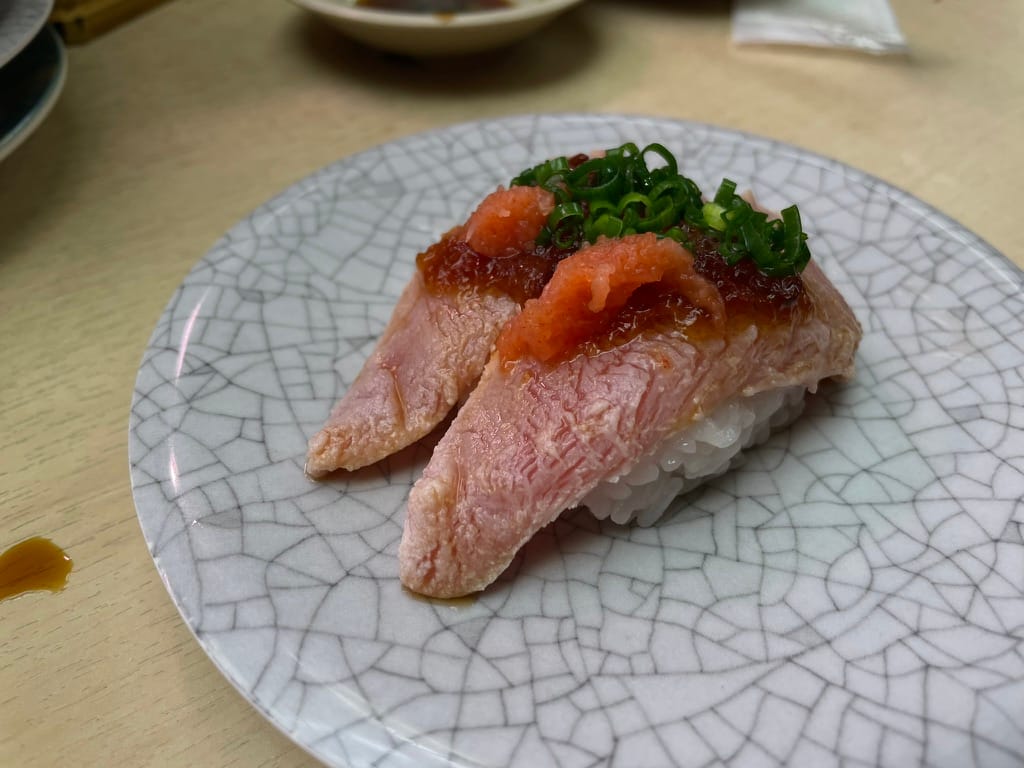
1. Not so traditional ramen | 2. unknown: A future Top50 bar - mark my words | 3. McDo | 4. Omakase chef working his Unagi | 5. The best ramen bowl of my life 🤤 | 6. Sake served by a Sake Sommeliere | 7. Tonkatsu heaven | 8. Our friend Ray showing us the cheapest craft beer bar in all of Tokyo. Still the cheapest. Still slaps. | 9. Nigiri from a conveyor belt sushi place.
A couple of recommendations (ranked yet again by yours truly):
- 🍜 Oreryo Shio Ramen - Best bowl of my life. It was perfect. // What's interesting about most ramen places is that you (1) first stand in line to pay for a ticket of the meal you expect to eat, then (2) you stand in line to wait to be seated, (3) the server comes to you when there's room, takes your ticket, brings you to your place, and a bowl of steamy ramen arrives in no time. Slurping encouraged!
- 🍸 unknown - A Taiwanese-style cocktail bar. They have their own distillery machine in the bar. Their Teagroni is great and their tea-infused Campari is out of this world. Mark my words, this bar will join the world's Top50 in the next 2 years.
- ☕️ Coffee Swamp - In my view, the coolest representation where a shop is the owner's creative idea come to life. A tiny coffee shop with the finest beans, the smoothest jazz tunes, and just an air of cool that I haven't seen elsewhere. 👌
- 🍣 Tenkazushi - Finest conveyor belt sushi I had so for. See for yourself 👇
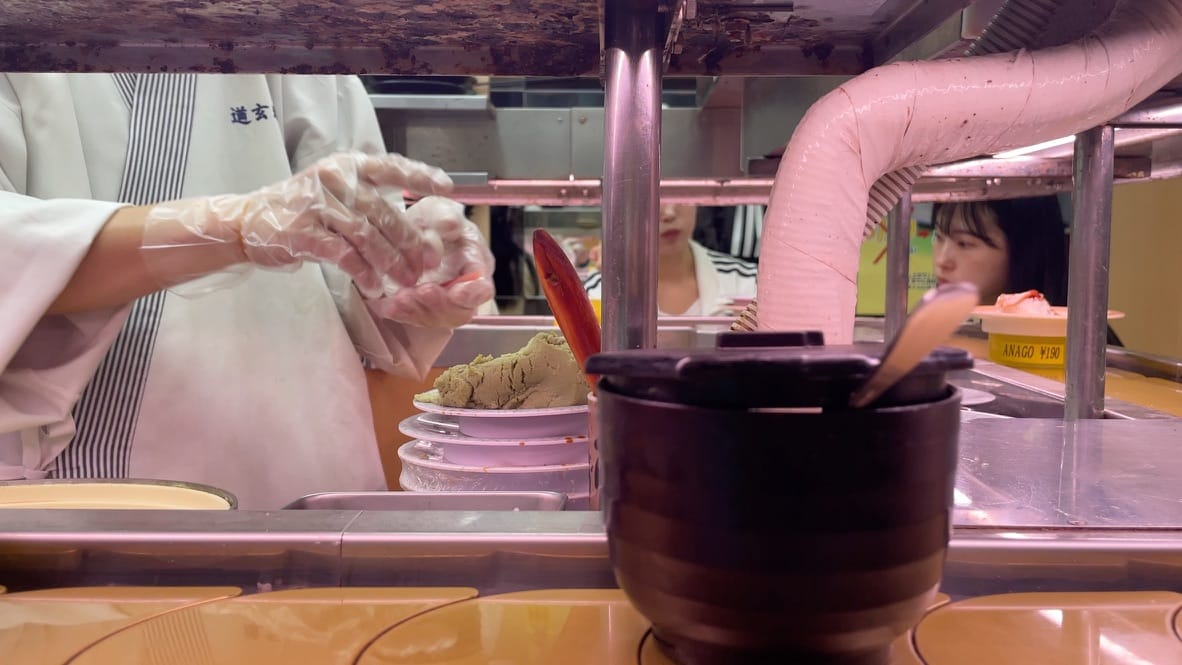
My Google Map
Dear friend, thanks for sticking with my writing through more than 5,000 words of Japan-o-mania 🇯🇵
それは本当だった!🤘
🙏



